A blog for fans of animation, and fans of reading things some guy wrote
Don't wanna be here? Send us removal request.
Audio
Introducing: my new podcast, Serious Disness, with DemonTomatoDave!
Hello, faithful Jehanimation readers! I know there haven’t been many updates on here recently, but hopefully I’m about to make that up to you by unveiling my newest project - Serious Disness, a Disney-focused podcast with my good friend Dave Bulmer, who you may know best as YouTube’s DemonTomatoDave! And if you don’t know him, check him out, he’s a cool dude.
In this podcast, Dave and I will be putting our heads together for some SUPER-SERIOUS analysis of various Disney movies. First up is a detailed deconstruction of the mega-blockbuster Frozen, the biggest animated movie of all time, and the first film I ever wrote about for Jehanimation. When I say detailed, I mean it; this is the first of six parts, edited down from a marathon eight-hour conversation we held over two nights back in 2016. But don’t be daunted; we are goofy folk, so expect plenty of comical meandering and odd detours amongst all the critique and thematic analysis.
These Frozen episodes will be the first in what we’re hoping is a regular series of long-form chats about various Disney movies; our next big undertaking after this initial batch will probably be an examination of the live-action Disney remakes (another familiar topic!), so stay tuned! Feel free to follow us on Twitter (@seriousdisness) for all the latest updates; we’ll hopefully have the podcast up on iTunes soon as well. Can you handle the SERIOUSNESS? And the DISNESS? There’s only one way to find out!
(PS - don’t worry, I will be returning to written blogging in the near future! Truth be told, there hasn’t been a lot that’s caught my attention during the first half of 2017, but I’m sure there’s an article to be written about that in itself. Regardless, expect more from Jehanimation in the months to come, in one format or another!)
#SoundCloud#music#Serious Disness#Podcast#Disney#Frozen#In-depth#animation#walt disney pictures#walt disney#disney animation#anna#elsa#olaf
5 notes
·
View notes
Text
The Jehanimation Awards: separating the best of 2016′s animated movies from the rest

Between all the political turmoil, the near-relentless stream of high-profile deaths and the release of Batman v Superman: Dawn of Justice, it has been widely accepted that 2016 was A Bad Year. As a member of the human race, last year probably was a bit of a disappointment in most respects; look at it as an animation enthusiast, though, and the picture starts to look quite a bit rosier.
In fact, I’m going to go a step farther than that and call 2016 one of the best years for feature animation in recent memory - which is saying a lot given how much the bar has been raised since the 1990s. Since the advent of CGI tore up the rulebook and made it easier for newer studios to compete with Disney on an equal footing, it’s felt like we’ve been constantly on the cusp of a new, more diverse landscape for mainstream animation, allowing a wider range of studios and directors to present wildly different visions in a competitive marketplace, rather than a single company monotonously ruling the roost. Obviously, the conservative and formula-driven nature of the business has meant that potential hasn’t always been realised, but in 2016 we got a glimpse of how that theoretical vision would play out in reality - and it was a pretty exciting thing to behold. I can’t think of many previous years in which so many companies - from the US and elsewhere - were able to produce such a broad spread of high-quality movies for different audiences, resulting in a glut of animated movies occupying the top spots in not only the worldwide box office rankings, but also in lists of the best-reviewed films of the year.
Faced with such an embarrassment of riches, it feels difficult and somewhat reductive to pit them against each other and pick out a small handful as being the best - but that’s just what we do around this time of year anyway, so who am I to argue? Still, my intention here is not to add to the somewhat adversarial sentiments that awards season can sometimes generate; this is simply my personal evaluation of all the new animated movies I got to see in 2016, with my favourites highlighted. Your own mileage will, of course, vary, because such variety is the spice of life; with that said, I’m pretty sure this list is 100% objectively correct, so I’ve no idea why you’d disagree.
Immense thanks go to the wonderful Jamie Carr for the header image and icon for this blog! Go follow her on Twitter at @neurodolphin!
THE NOTABLE OMISSIONS
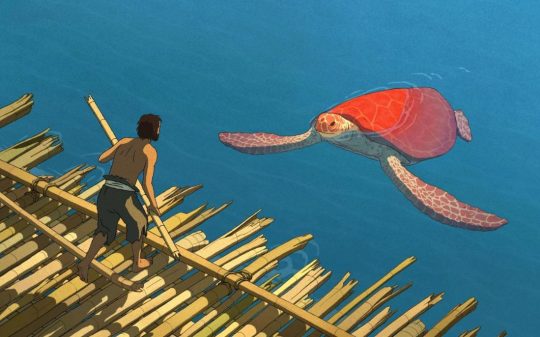
Before I get into evaluating the best of 2016’s crop, I should probably acknowledge that, contrary to assumption, I am not omniscient, and was therefore unable to see every animated movie that came out last year. There are upsides to this, as it means I missed out on having to watch bargain-bin garbage like Norm of the North or Robinson Crusoe (aka The Wild Life), and was able to judiciously pass on higher-profile but poorly-reviewed efforts like Blue Sky’s Ice Age: Collision Course and Rainmaker Entertainment’s Ratchet & Clank; unfortunately, it also meant not getting to see most of the less widely-screened animated movies from overseas, which is a great shame. I haven’t, for example, been able to see The Red Turtle or My Life as a Zucchini - two of the five nominations for this year’s Best Animated Feature Oscar - nor did I catch the well-reviewed French-Canadian production Ballerina (known in the US as Leap!). I also freely confess to being underexposed to anime, meaning I didn’t see anything from Japan this year - with one important exception, which I’ll come to later. I’ll certainly hope to correct some of these oversights at a later date.
THE ALSO-RANS
The following movies are the films that - for one reason or another - didn’t quite connect with me this year. Some are better than others, but to some degree or another I wouldn’t say they succeeded at what they set out to do.
The Angry Birds Movie
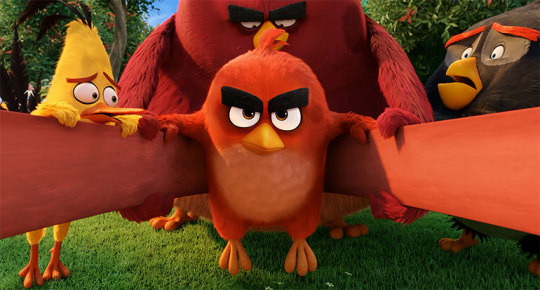
This was probably the weakest animated film I saw last year, which - given its essentially functional mediocrity - reflects pretty well on 2016’s lineup as a whole, even though it doesn’t retroactively make The Angry Birds Movie any more impressive.
I’ve already written a complete review of this film, so I don’t want to waste too much additional time on this one, but looking back I do find it striking just how middling this film was, especially when viewed in the context of everything else that came out after it. It remains deeply frustrating that The Angry Birds Movie actually did a lot of the groundwork necessary to produce a better-than-expected adaptation of a plotless physics-based puzzle game - devising a striking look, hiring great actors and laying the foundation for a potentially interesting thematic discussion on the role of anger in a healthy society - before totally squandering that potential on a script that favours lightweight, rambling and puerile comedy over any opportunity to advance the characters or emotional stakes. It’s a film that lazily follows a bog-standard Shrek-lite formula of cheap pop culture gags, toilet humour and sitcom punchlines, seemingly without realising that said playbook is now several years out of date - which, I suppose, is somewhat fitting for a belated spinoff to a mobile app whose popularity peaked about five years ago.
As I say, there are aspects of The Angry Birds Movie that are slightly better than they needed to be - and I’m willing to accept that it’s not easy to reverse-engineer a script that culminates in birds launching themselves into a pig’s castle via catapult - but I feel less charitable towards it in hindsight having since seen DreamWorks’ Trolls, another brand-derived movie that applied infinitely more honest craft and creativity to its subject matter, and achieved exponentially superior results as a consequence. The fact that Angry Birds was able to utilise its stronger brand recognition and well-timed release window to ultimately outgross Trolls on a worldwide basis just emphasises the point that this isn’t a film in need of my charity, or one worth holding up for any reason other than as an example of the kind of lazy work the rest of the industry has long moved beyond.
The Secret Life of Pets
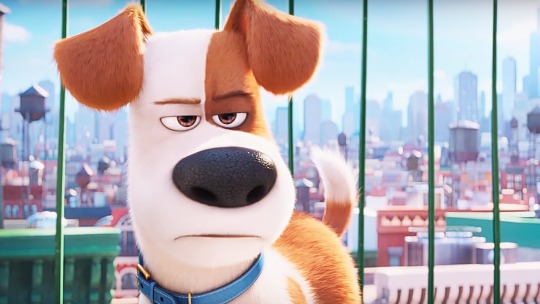
2016 was a banner year for Illumination Entertainment, as the studio not only made the jump to releasing two films within 12 months for the first time ever, but was also able to turn both into bona fide global smash hits without any reliance on their flagship Despicable Me/Minions franchise. The Secret Life of Pets was the more conventional of the two outings, with its higher box office takings showcasing the strength of the Illumination brand as it exists today; however, the film itself also offers an equally sharp insight into the how much room the studio has to grow.
As I alluded to in my recent post about Illumination, there’s a lot to admire in The Secret Life of Pets, and its great success is no mystery to me. It leans heavily on many of the studio’s established strengths, including a flair for kinetic caricature and imaginative physical comedy, and its bright visual style and design work meant it played a significant role in a broader reawakening of the general public’s love affair with talking animal movies. However, it’s also an unintentional showcase of Illumination at its weakest, particularly in its willingness to foreground shallow slapstick over meaningful story development, and its allergic reluctance to challenge the audience emotionally. That the film’s plot is essentially a beat-for-beat pet-oriented remake of the original Toy Story invites comparisons that do not flatter Illumination’s movie, as The Secret Life of Pets is an infinitely shallower film that passes up several golden opportunities to give its characters proper dimension, resulting in an experience that’s basically sweet-natured and inoffensive, but never comes close to making a lasting impression.
With $875 million grossed worldwide, The Secret Life of Pets was undoubtedly one of the year’s biggest success stories, and represents the start of a franchise with considerable potential mileage; however, the series will require a significant injection of depth, pathos and substance if the resulting series is ever going to be able to aspire to anything more than a vehicle for the episodic and rote delivery of middlebrow gags with a bare minimum of investment.
Kubo and the Two Strings
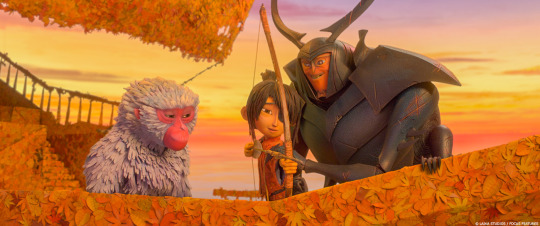
A passion project by Laika Entertainment’s president and CEO (and sadly forgotten rap legend) Travis Knight, Kubo and the Two Strings didn’t do huge business at the box office, but it’s quickly emerged as one of the critical darlings of the year, and a major awards contender. While I love pretty much everything this hugely admirable piece of work represents, I can’t quite bring myself to extend the same feeling to the film itself as a piece of storytelling.
In fact, I’d probably rate Kubo and the Two Strings as one of the bigger disappointments I experienced last year, which is a real bummer, as I have a deep and unbroken fondness for Laika’s work, dating back to their days in their previous incarnation as Will Vinton Studios. Kubo is in most respects their most ambitious film yet, blending their traditional focus on emotional intimacy and dark atmospherics with an epic fantasy sweep. When it works, it’s absolutely magnificent - their stop motion animation and design work has now evolved to the point where it almost looks indistinguishable from CGI at times, and their grasp of subtle melancholy is as peerless - but there’s a shakiness to the story’s fundamentals that I’m unused to seeing from a studio as famed for their attention to detail as Laika are. The tone lurches wildly from tearjerking grimness to flippant buddy comedy and back again; the actual quest narrative is irritatingly coincidence-driven and never more than vaguely explained, giving the audience little scope to share the journey of discovery; and most damagingly, the script doesn’t seem to know what it wants the lead characters of Monkey and Beetle, setting them up as jovially bickering sidekicks before saddling them with dramatically pivotal backstories that feel overly on-the-nose and don’t mesh with their personalities at all. The result is a film to which I gradually lost my emotional connection as it progressed, which is pretty fatal for a story that ends as intimately as this one does.
Add to that some questionable decisions regarding casting - I won’t harp on this too much, but I will say that it’s weird for a film this conscious about authenticity and tone to pass up the benefits that an Asian cast would provide in that regard, and that none of the actual cast give such indelible performances that they couldn’t have been swapped out - and you get a film ranks as my least favourite Laika movie to date. Admittedly, it’s a difficult category in which to compete, but it’s still a shame not to be able to join in the general chorus of appreciation surrounding a film that generally reflects so much of what I love about animation. I still thoroughly appreciate Laika’s work in almost single-handedly propping up the medium of stop-motion through sheer passion and bloody-mindedness, but for me the narrative elements of Kubo and the Two Strings got away from them - and when you’re making a film specifically designed to celebrate the power of storytelling, that creates a hole in the middle of the movie that no amount of technical splendour can fill.
Finding Dory

The top-grossing animated movie of the year, Pixar’s Finding Dory was always going to be a commercial slam-dunk, given the special place its predecessor Finding Nemo holds in the hearts of many; the big question was whether it was going to be able to measure up to the first movie’s legacy in terms of filmmaking. The answer? Ehhh.
That’s certainly not due to a lack of effort, of course; as I’ve touched upon in my previous post concerning this movie, Finding Dory is not a phoned-in sequel, and you can tell that returning director Andrew Stanton has put thought and consideration into how to expand the self-contained story of Finding Nemo outwards in a way that feels organic. The resulting development of the character of Dory - a mentally impaired protagonist seeking to make peace not only with her own past, but also with herself and the way her condition affects her - is rich with emotional pathos and feels like a natural continuation of Finding Nemo’s key themes, as well as forming a meaningful statement on disability in its own right.
Beyond the oasis of that central storyline, however, Finding Dory enters choppier waters. Dory’s journey may be significant in emotional terms, but dramatically it feels small, with the epic, sweeping journey of the first movie swapped for a claustrophobic single-location setting for the majority of the sequel. That reduced sense of scale isn’t helped by the flimsiness of the supporting cast, populated by half-formed ideas like Hank the octopus (who feels like he has a character-defining backstory lying on a cutting room floor somewhere) or one-note gag characters like Destiny, Bailey, Rudder and Fluke (who never come close to being properly developed). Worst of all, Finding Nemo’s protagonist Marlin is purely along for the ride this time, with very little to do other than complain in a way that becomes grating and unentertaining fairly rapidly. The result is a two-hander where one hand is significantly more developed than the other, which - as Nemo himself would tell you - makes it much harder for Finding Dory to swim in the smooth, straight lines you’d expect from a Pixar film.
That said, I’m not sure exactly what I expect from a Pixar film these days. Finding Dory is far from a bad movie, but it’s a pedestrian effort from a studio that seemed to effortlessly maintain a much higher orbit before the turn of the decade. Finding Dory owes a lot of its success to goodwill left over from those peak years, but the lack of love the movie has received on the awards circuit suggests that at least some of that is starting to run dry. There’s a Dory-style lesson to be learned there: old memories aren’t enough to sustain you forever - you have to be able to form new ones, too.
THE RECOMMENDATIONS
The following movies are the films I saw that didn’t quite make my best-of list, but nevertheless worked well enough to make a positive impression. These aren’t the year’s best animated movies - but they are good ones.
Storks

Storks seemed to come and go without anyone really noticing it happened. I myself missed it at the cinema, and catching up with it many months later, I can sort of understand why; it’s a thoroughly odd duck that doesn’t quite fit with any preconceived notion of what an animated feature would look, sound or play like. The aesthetic splits the difference between big-screen polish and Cartoon Network stylisation; the tone wants to be manic, but grounded; flippant, yet also heartfelt; rambling, but wholly plot-driven.
You know what? For all that, I rather enjoyed Storks, although I’m not sure I’d call it a completely functional film. The first animated movie from live-action comedy director Nicholas Stoller (Forgetting Sarah Marshall, Neighbors) is a relentlessly high-energy experience that is inevitably irritating and wearying at times, but feels full of a certain kid-in-a-candy-store enthusiasm for the boundless absurdist possibilities that animation can provide; it is also a movie that understands the importance of having a heart, and keeps it beating in the right place. Ultimately, Storks doesn’t have anything more profound to say than “babies are nice, and finding your family is great”, but it’s sincere about the way it says it, whether that’s through the oddly charming quasi-romantic chemistry between the avian middle manager Junior and scatterbrained teenage orphan Tulip, or through the engaging B-plot of a young boy reconnecting with his workaholic parents as they wait for delivery of a new baby brother. It’s also an understatedly progressive movie in a couple of ways - it’s nice to focus on a mixed-gender comedic pairing where the female member gets to be the zany one for a change, and you even get some pleasantly matter-of-fact representation of LGBT parent couples thrown in towards the end for good measure, albeit in blink-and-you’ll-miss-it fashion.
That said, this is also an incredibly ramshackle piece of work, full of non-sequitur narrative detours and extended joke sequences that don’t really land - antagonist Toady, an obnoxious business-bro pigeon, feels like an out-of-control SNL skit in place of an actual character, for example. That’s a weakness that cuts across many parts of the film, in fact; Stoller gives the script more of a mannered, improvisational feel than is strictly good for it, resulting in a whole lot of gag lines that feel purely like punchlines crafted by a writer, rather than effective expressions of character. Nevertheless, on balance, I’m happy that the revamped Warner Animation Group are using their post-The Lego Movie relaunch to establish a distinct identity for themselves, rather than going down the me-too route of their Quest for Camelot days; I think it’s even better that their chosen identity is one that tries to honour the company’s offbeat Looney Tunes legacy, as that’s a style we don’t see often enough in the modern feature animation landscape. Clearly, we’re going to be getting a lot of Lego spinoffs and sequels that uphold a Phil Lord/Chris Miller-flavoured variation of that approach, but that type of comedy is good for more than just endless Lego movies - and so are Warner Bros. In that respect, I’d like for Storks to be the beginning of a more diversified lineup from Warner Bros, not the end, which is why this imperfect little movie just about edged its way into my recommendations category; the quality isn’t always there, but the right spirit is there in spades.
Kung Fu Panda 3
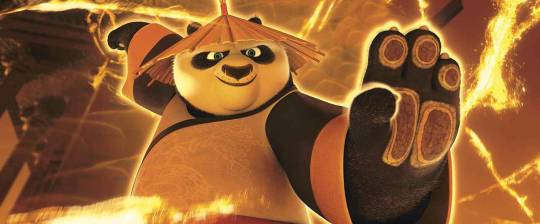
In another year, Kung Fu Panda 3 would have been a much bigger deal than it ended up being. It was a very good animated movie in a year full of them, a talking animal film coming out just as the genre suddenly became ubiquitous, and a high-quality sequel to a franchise that had probably been away from the big screen a few years too long for audiences to still be invested. Heck, even in China - the market where this US-Chinese co-production was clearly ordained to sweep aside all comers - this belated threequel had its thunder stolen, reigning briefly as the region’s highest-grossing animated movie ever before the breakout success of Disney’s Zootopia took the title away after only one month.
All of that is a bit of a shame, because - as I’ve mentioned - Kung Fu Panda 3 is a very good movie, even if it is unquestionably the weakest instalment in the trilogy. It lacks the energetic freshness of the 2008 original and the impressive emotional scope of 2011’s Kung Fu Panda 2, the bracing darkness of which Kung Fu Panda 3 largely backs away from in favour of something a bit cosier and smaller-scale. In that respect, this is very much the Return of the Jedi of this series, with all that entails - right down to being set in a hidden village of cuddly bears - but none of that makes it anything like a bad film. For one thing, it’s absolutely beautiful to look at - one of the most aesthetically gorgeous pieces of animation I’ve seen for a while, with vivid colours, stylised action, stunning 2D sequences and masterful incorporation of the look of Chinese paintings into its visual style. That respectfulness goes beyond the visual elements, though; the first Kung Fu Panda may have been a watershed movie for DreamWorks in adopting a tone of loving pastiche rather than broad spoof, but the sequels have been so reverential to the genre and culture that inspired them that you almost wish they’d dropped the comedy focus altogether and pivoted the series in the direction of full-on anthropomorphic wuxia adventure, with a tone closer to the How to Train Your Dragon movies.
Still, what we’ve got from Kung Fu Panda is pretty great, thanks not only to their embrace of the excitement and philosophies of martial arts cinema, but also to their commitment to strong characterisation of their key players. Po the panda remains a delightful creation, with Jack Black consistently finding and underplaying the notes of earthy wisdom and spiritual growth in a character who could easily have come across as 100% fanboy goofball, and his relationship with the elderly goose Mr Ping - voiced with wonderful warmth and eccentricity by the brilliant James Hong - remains one of the most oddly affecting father-son relationships in animated cinema. The addition of Po’s birth father Li Shan (Bryan Cranston) to that dynamic in Kung Fu Panda 3 is handled maturely, in a way that celebrates unconventional family structures, and that emotional throughline works in tandem with the spiritual concepts of the story to provide a strong foundation. In truth, there’s not all that much going on beyond that, other than colourful action setpieces - once again the supporting cast, including Po’s brothers-in-arms the Furious Five, are left frustratingly underused and underdeveloped - leaving Kung Fu Panda 3 feeling like the slightest entry in the series; nevertheless, it’s still a satisfying, funny adventure that brings the series to a fitting thematic conclusion. In truth, Kung Fu Panda probably is a series whose time has passed; if that’s the case, I’m glad it got to impart a few more words of wisdom before moving on.
Sing

The second and less conventional of Illumination Entertainment’s 2016 efforts, the musical extravaganza Sing may have been the lower-grossing and slightly less well-reviewed of the two outings, but for my money it outdoes The Secret Life of Pets on every level creatively - to the point where I’m wondering if everyone else saw these two movies the wrong way around.
When I call Sing “unconventional”, I’m not really talking about its approach to genre and storytelling, because frankly it really couldn’t be any more conventional in those respects. This is a big, broad, goofy, follow-your-dreams jukebox musical that garnishes the X Factor/American Idol template with a sprig of Muppets-style save-the-theatre backstage drama - you know, in case the overstuffed ensemble cast didn’t already have enough underdogs to root for. Said ensemble, which includes a shy teen elephant with an angel’s voice, an overworked mother pig with dreams of stardom, a young gorilla seeking to escape a life of crime and a punk rock porcupine breaking away from her controlling jerk boyfriend, is packed to bursting with character arcs that you’ll be able to predict with perfect accuracy the moment they begin - or perhaps even before then, if you’ve seen any of the too-numerous trailers for Sing that essentially summarise the entire story beat for beat.
But when judging a movie like this, it’s important to remember that cliche is not inherently a sin - a familiar recipe can still taste fabulous when the ingredients are prepared with care and attention, and so it proves with Sing, a movie that’s made with infinitely more sincerity and ambition than it’s been given credit for. It feels good to be able to praise an Illumination movie for those qualities, and that’s where the “unconventional” aspect comes into play, as this is a film that has clearly benefited from the studio searching outside its usual creative talent pool and taking a punt on Garth Jennings, the likeable British filmmaker responsible for The Hitchhiker’s Guide to the Galaxy and Son of Rambow. A prolific director of music videos, Jennings is clearly someone with a passion for music that saturates Sing, turning what could have been an empty exercise in celebrity animal karaoke into a genuine celebration of the restorative power of music. That earnestness also bleeds into the characterisation, which - for as formulaic as it unarguably is - is written and performed with enough heart-on-sleeve honesty to paper over many more cracks than Sing actually has. Sure, there are times where it feels like the sheer multitude of characters means certain moments don’t get the focus they need, and there are certainly notes and song choices - particularly the use of Leonard Cohen’s “Hallelujah” during a moment of sombre redemption - that will be too on-the-nose for even the most wide-eyed audience member, but beyond that there’s really nothing wrong with this movie at all, to the extent that I’m a little confused every time I see a bad review of it. It’s certainly not perfect, but it’s assembled with such professionalism and such a conscious eagerness to make you happy - especially during its barnstorming, impossibly fleet-footed finale - that it seems churlish to refuse.
Despite what I perceived to be a relative lack of appreciation of its full merits, I’m happy to see that this film did well for itself, and I hope it encourages Illumination to make more movies with this kind of heart behind it. Sing’s emotional stakes may be somewhat prosaic, but they’re big and bold and dominant in a way that prior Illumination movies, with their focus on slapstick silliness, have seemed shy about embracing. In a previous post, I lamented the studio’s inability to produce a truly classic movie up until this point, and expressed a hope that Sing might be a step along the right path; in that respect, it delivered. Sing may not be the first great Illumination movie, but if they keep going in this direction, they may just get there.
THE BEST OF THE YEAR
In descending order, these are my top five animated movies of the year. They may be very different films operating and succeeding on different levels, but in my view these are the films that really encapsulated all the facets of what I love about animated cinema, and exemplify the form’s boundless versatility.
5. Sausage Party
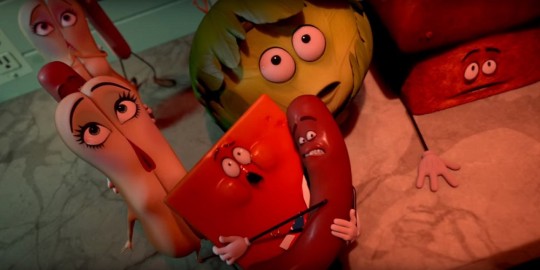
In film criticism, originality is often taken to be a cardinal virtue; we mark films down for adhering to weathered formulas or archetypes, and give credit for the ones that do things we haven’t seen before. When Sausage Party was released last year to rock-solid reviews, many were shocked, but really, they ought not have been that surprised - after all, it’s not often that we get to see what a truly original movie looks like.
On paper, Sausage Party seems transgressive without being all that groundbreaking; after all, we’ve seen crude animated movies for adult audiences before, from Fritz the Cat through to the works of Trey Parker and Matt Stone, but there’s something about the way Sausage Party was positioned that made it unique - sure, it was made for a mere $19 million, but this was that rare R-rated animated film that was ordained to compete in the big leagues, rather than breaking out from some underground niche. US-produced adult animations usually accept their status as esoteric oddities, embracing unfashionable visual styles and anti-mainstream sensibilities; Sausage Party rejects that, using modern tools and an aesthetic that credibly approximates the familiar look of its Disney/Pixar contemporaries to mark itself as a film designed to be seen and embraced by the biggest possible audience. Regardless of what you might think of the film itself, the manner of Sausage Party’s release was trailblazing - the first proper attempt by a studio in years to break American adult animation out of its enthusiasts-only ghetto and show that cartoons for older audiences can be appeal on the same level as a live-action movie of the same genre. That Sausage Party went on to gross of nearly $100 million in the US should be seen a massive win for the medium, and will hopefully embolden the industry to further experiment with the kinds of animated stories and visions they’re willing to bankroll in future.
Of course, this victory would feel tainted if Sausage Party had turned out to be exploitative trash, but watching the final film, even hardcore Sausage-sceptics would have to admit it’s a movie that embraces substantive ideas and commits to them, hard. Your mileage is likely to depend on how well you click with the sensibilities of Seth Rogen and Evan Goldberg (Superbad, This is the End, The Interview), who’ve made a career on exploring challenging concepts in unabashedly juvenile terms, because this movie represents the apotheosis of their operating model to date; taking the Pixar template of “what if X had feelings?” to its most lurid conclusion, Sausage Party is a deceptively literate spiritual odyssey that confronts sentient food items with the brutal reality of what they were created for, sending them spiralling into existential crisis and surreal voyages of self-actualisation. As a deconstruction and critique of religious thought, it’s intelligent in a number of ways, opting against abrasive confrontationalism in favour of a humanist, pluralist conclusion that encourages people to reject the limits that society places on them and be their authentic selves in a non-judgemental fashion; what’s just as impressive is the way it’s able to explore this essentially benign, moderate message in such relentlessly coarse, taboo-shattering terms, without feeling like it’s working at crossed purposes with itself. This is a film with legitimately interesting things to say about the evils of dogma, the need for respectful discourse, the importance of actualising your sexual identity and the destructiveness of identity-based conflict - and does so almost entirely through the medium of cartoon violence and dick jokes. All of this builds to a jaw-dropping third act of insanely violent, sexualised excess that’s honestly unlike anything I’ve ever seen in a mainstream movie - and yet somehow still feels reverent enough to the spirit of Toy Story that its credentials as a legitimate entry in the same animated adventure genre remain unbroken.
I’m ardent in my admiration for what Sausage Party represents, and I say that with full acceptance of its problems. Its gleeful indulgence of ethnic stereotyping, for example, doesn’t really pay off with a satirical point clever enough to justify it all, while the sheer crudeness of the film - the villain is literally an anthropomorphic douche - is likely to stop a lot of people from connecting. I also need to give acknowledgement to the widespread stories of mistreatment and exploitation of the animation team by production company Nitrogen Studios and co-director Greg Tiernan, which puts that thrifty $19 million budget in a different light; that can’t really be excused, but it also doesn’t invalidate the fact that the resulting film is a valuable, singular piece of pop art that’s worth much more than the sum of its parts. It’s up to you to decide whether knowing how the sausage was made is enough to put you off; all I’m saying is that it’s worth trying, because Sausage Party is both tastier and more nutritious than you might expect.
4. Trolls

One of the main reasons why 2016 ended up such a good year for animation is that, due to some strange quirk of scheduling, many of the major studios ended up releasing two films during the year. I’ve covered Illumination’s pair already, and I’ll be coming to Disney’s duo momentarily; for now, I want to give some much-needed kudos to the oft-criticised DreamWorks, who not only turned out a fine Kung Fu Panda sequel, but also somehow elevated a reboot of the Trolls toy franchise from cultural detritus into a genuinely joyous moviegoing experiences.
I expounded at length quite recently about the many virtues of Mike Mitchell and Walt Dohrn’s cuddly little movie, so I won’t add too much here, other than to say that my admiration for a film that still stands out as a surprise of the most pleasant variety hasn’t dimmed. There’s always a special kind of joy that comes with being blindsided by a great film that comes out of nowhere, and Trolls is the very definition of that: the concept sounded terrible, the early marketing was appalling, and yet the final film is confident, earnest, visually beguiling and bursting with an infectiously guileless goodwill that’s much harder to evoke in a sincere way than Trolls makes it look. Indeed, in a world where Sony Pictures Animation continues to struggle to strike the right tone with its various adaptations of the esteemed Smurfs franchise, DreamWorks deserves applause for nailing the right mix of sweetness and spice on the first attempt at what’s essentially the same concept. That’s not to say Trolls is wholly derivative, though; if the “happy forest friends” setup isn’t exactly groundbreaking, there’s ambition to its lightly-sketched philosophical exploration of the spiritual origins of happiness, while its sharp humour and aesthetic exuberance ensure it never forgets to make you feel the emotion it’s examining. If there’s one lingering disappointment, it’s that more people didn’t notice exactly how impressive this fluffy and genuinely uplifting jukebox musical turned out to be; with its theatrical run topping out at a solid but unspectacular $339.5 million worldwide, Trolls remains one of 2016’s better-kept secrets, a movie that seemed to pass most people by. That’s an unfortunate outcome for a film that I’m willing to list among the best animations of the year, but it does at least preserve its status as a surprise package waiting to be opened, shared and discovered by more people.
I hope, too, that DreamWorks take solace and pride in the quality of the work they put out in 2016. Both Kung Fu Panda 3 and Trolls both ended up as modest rather than overwhelming commercial successes, but there was a solidity and assuredness to both movies that the studio hasn’t always found easy to come by; these are qualities that will serve the company well as it prepares for life under the new ownership of Universal. Of course, DreamWorks will always be DreamWorks, and maybe inconsistency is baked into their DNA: the fact they’re following up such a strong 2016 with a 2017 slate consisting of The Boss Baby and Captain Underpants: The First Epic Movie seems like a testament to that. But hey, this time last year I was busy writing off Trolls, so what the hell do I know?
3. Moana
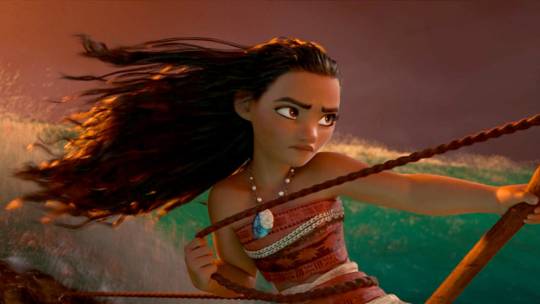
It’s weird for me to think about this, but most people born after about 1990 or so probably don’t actually remember a time when Disney were the undisputed kings of feature animation. Ever since Pixar released Toy Story in 1995, they’ve ceased to be the only game in town, and there were times during the mid-2000s when they looked to be drifting into irrelevance; since then, however, they’ve come roaring back, and I feel as though 2016 will be seen in years to come as a point where Walt Disney Animation Studios really reasserted their dominance, even more so than their historic success with Frozen in 2013. I’ve praised Illumination and DreamWorks for the impressive feat of releasing two good movies in the same year, but that pales in comparison to Disney, whose achievement in releasing two potential all-time classics within eight months is little short of a miracle.
Due to its choice of genre, Moana was probably seen as the safe option out of the two movies, but anyone who’s seen it will know that writing it off as just another Disney princess musical is doing the film a massively reductive disservice. Veteran directors Ron Clements and John Musker’s (The Little Mermaid, Aladdin, The Princess and the Frog) first CGI movie feels like a substantial and welcome reinvention not just of their filmmaking approach, but of the “princess movie” template in general. This is a formula that Disney have been committed to tinkering with since the 1990s Disney Renaissance era, but never to such a root-and-branch degree as Moana, which takes only the most essential components of the template - to paraphrase the script itself, the fact that its protagonist “is the daughter of a chief, wears a dress and has an animal sidekick” - and builds a rousingly individualistic seafaring action-adventure with a refreshing perspective. It’s not just the fact that Moana feels different from her predecessors, with her Polynesian origins and stockier build, it’s that she functions differently; unlike any other Disney princess, she’s a swashbuckling hero first and foremost, embarking on a world-saving quest through active choice, rather than stumbling into one as a byproduct of some mission of family duty. On that foundation, Musker and Clements build a film that consistently zags where other Disney movies zig. This is an action-adventure that’s basically without a true villain; where the male lead, the blustering demigod Maui, remains strictly a supporting player, with no hint of unnecessary romantic intrigue; where the main animal sidekick is a scraggly idiot rooster that actively hinders the quest, while the cute, marketable pig stays home.
Of course, different isn’t necessarily better, but it certainly feels like a value-added bonus when your film is already as good as Moana is. Technically, it’s one of Disney’s most accomplished efforts, with astounding water effects and a beautiful oceanic palette, and it benefits from the same sparky dialogue and buddy-comedy chemistry between its leads that’s become a Disney trademark. Musker and Clements seem to have made progress on overcoming the somewhat episodic feel of their previous movies, with more of a sense of coherent driving momentum pushing forward the story, and they’ve certainly come on leaps and bounds in terms of cultural authenticity since the days of, say, Aladdin, with the Pacific Island setting treated with great respect in aesthetic, spiritual and casting terms. Then, of course, there’s Lin-Manuel Miranda, Opetaia Foa’i and Mark Mancina’s compositionally intricate and effortlessly catchy soundtrack, which is probably the finest from Disney since The Lion King - and hell, even The Lion King didn’t have a glam rock David Bowie style parody sung by a giant kleptomaniac crab, so maybe Moana has even that one beaten. It’s not all perfect, though; much as I loved the film, it does have a few pacing problems; the story spends an unusually long time getting Moana to leave her home island of Motunui, only to occasionally feel becalmed once the journey actually gets underway. The open ocean is an evocative setting, but it can also get pretty repetitive, and there are points in Moana where you start to miss the broader ensemble cast and diverse backdrops that we might have gotten if not for all the lonely, endless blue.
None of that was enough to prevent Moana from becoming one of the best and biggest animated movies of the year - though you get the sense that some pundits were expecting a bit more commercially from Disney’s first big princess musical since Frozen. It’s true that Moana’s solid $575 million-and-counting worldwide total doesn’t bear comparison to Frozen’s record-setting $1.27 billion - but then, when you think about it, Moana didn’t really turn out to be all that comparable to Frozen anyway. It’s possible that Moana reinvented so much about what makes a princess movie that it no longer registered as being one in the eyes of the audience - or perhaps it was never really a princess movie in the first place, and scored its own success on its own terms. Princess or not, she is Moana, and that’s good enough for me.
2. Your Name (Kimi no Na wa)

As I mentioned before, I have an unfortunate blind spot when it comes to anime, with my exposure to Japan’s prolific feature output basically limited to Studio Ghibli films and a small handful of others. That’s something I’d like to work on, so I jumped at the chance to see Makoto Shinkai’s blockbusting romance Your Name at the cinema last year as a way of putting that right; what I got was an outstanding and emotionally overwhelming reminder of everything I’ve been missing out on.
Your Name is a difficult movie to categorise - my best attempt would be “supernatural gender/body-swap tragicomedy-drama disaster romance epic”, but even that would be underselling the deft changeability and tonal fluidity of this marvellously-constructed movie, which came within a hair’s breadth of ranking as my favourite of the year. Part of that versatility comes from its mastery of the medium - I know it’s not intended to function as a primer on anime, but it couldn’t have done a better job if it tried, such is its command of everything that defines the format at its best. Here’s a 2D animated film that feels truly modern, that pushes hand-drawn animation to new levels of technical beauty and adventurous stylisation without feeling even slightly retro; here’s an animated film that can speak directly to a teenage and young adult audience, with a pop soundtrack and frank allusion to concepts of sexuality and gender identity, and evoke that lived experience of yearning adolescence in a way that feels sophisticated and universal; here’s an animated film that knows how to bring metaphysical mystery, power and spirituality to its narrative with a light touch, leaving just enough traces of magic to lend an edge of unknowable enormity to the intimate character story we’re being told. These are areas in which the best anime movies uniquely excel, and Shinkai seems to understand implicitly how to leverage these strengths without any of the weaknesses.
But Your Name isn’t designed to be appreciated on a beard-stroking conceptual level; for all its artistic accomplishment, it’s a weepy teenage romance at heart, and you couldn’t ask for one better. Its protagonists - small town girl Mitsuha and Tokyo boy Taki, who mysteriously find themselves intermittently swapping bodies - are enormously likeable leads with whom it’s easy to empathise, whether it’s Mitsuha’s longing to experience life beyond her idyllic but fishbowl-like rural community, or Taki’s increasingly passionate desire to connect directly with the girl who’s literally changing his life from the inside. The latter quest comes to form the driving emotional engine of the film, and writer-director Shinkai does a fine job of creating a palpable closeness between the two characters, whilst at the same time putting them in a situation where every conceivable obstacle - time, space, fate - stand in the way of them ever meeting. If that sounds melodramatic, that’s because it is, but Your Name knows exactly how to sell a brand of epic romance that makes the audience feel like they’re seeing something much more profound than the feelings of two people; that’s partly a function of the gorgeous hyperreality of the visuals, but also a testament to the way Shinkai unfolds the story, expanding what starts out as a light, sweet body-swap fantasy into something larger and more mythic. To say more about how Your Name pivots and pirouettes through different plot ideas and genres would give too much away about a film that benefits greatly from being unpacked at its own pace, so I won’t go further, other than to say it builds to something that’s sweeping, exhilarating and wistful in all the right ways.
If it sounds like I’m giving this movie the hard sell, that’s very much intentional - certainly, Your Name doesn’t need any more of a push in Asia, where it’s been a record-breaking success, but Western audiences seem to be much less aware of it, as evidenced by its surprise omission from this year’s Best Animated Feature Oscar nominees. This may be partly because because the film isn’t actually due to be released in US theatres until April 7th 2017, a stunningly long delay that nevertheless gives me an opportunity to urge any American readers to make sure they catch it on the biggest possible screen. After all, Your Name helped to show me everything I’m missing by not watching enough good anime; the least I can do to return the favour is to make sure nobody misses this one.
1. Zootopia

Nobody who’s followed this blog for any length of time will be shocked by this choice; in fact, nobody who saw the Oscars or pays any attention to the film industry in general will be too surprised, as Disney’s Zootopia has proven a commercial phenomenon, a darling among reviewers and an awards magnet. Inevitably, this means the film has started to attract a few contrarian potshots, but I’m not interested in engaging with that; after all if we can’t take a moment to earnestly celebrate one of the best and bravest films Disney have made in decades, then why do we even watch movies?
I’ve spent a lot of words talking about Zootopia over the last 12 months, and yet it still doesn’t feel like it’s left my system; with its incredible visual design, instantly lovable character chemistry, deft pacing and bubbling comedic energy, it encapsulates pretty much every one of Disney’s traditional strengths, while also excelling in areas where the studio have never traditionally dared to tread. As a piece of worldbuilding, its thoroughness exceeds many science-fiction films - the breathtaking wonder of the first train ride into the city of Zootopia is a Disney moment for the ages, rendered with such immersive intimacy that I’d love to see it retrofitted as a VR experience - while the film’s vaulting thematic ambitions and willingness to delve into challenging social commentary feel like a seismic sea change for a company with a reputation for corporatised artistic conservatism. That I rate Zootopia as the best animated film of an incredibly strong year doesn’t preclude acknowledgement of its imperfections - the police procedural elements are a little oversimplified, it can be episodic at times, the metaphors can sometimes be heavy-handed - but it’s the intelligent, open-hearted generosity of the thematic dialogue it opens up with its audience that makes those concerns feel small. This is a pointed, satirical and often overtly politicised piece of work, addressing deeply divisive issues of prejudice, system bias, internalised privilege and societal identity, and yet it manages to do so in a way that feels pluralistic, universally empowering and non-judgemental - a feat that most adult-oriented media struggles to achieve. It’s a film that educates without lecturing, that shows asks you to find your own answers rather than spoonfeeding you solutions, that shines a light on the problems that society faces but still lets you walk out feeling energised, rather than depressed. That’s difficult for any movie to achieve; for Disney, with almost no experience of making topical satire, to be able to pull this off while still ticking all the boxes of a superlative, adorable and hilarious family adventure is one of the greatest accomplishments in their entire 80-year history of feature animation.
Honestly, if I have any lingering feeling of disappointment about Zootopia, it’s the question of why the message it expressed so eloquently didn’t end up making a bigger impression on those who saw it. That a movie with such an explicitly educational theme of cultural unification and overcoming differences was able to gross more than $1 billion in a year as riven by political division and opprobrium as 2016 is a testament to cinema’s value as a means of escape; unfortunately, it also probably tells us a lot about the cognitive dissonance that prevents people from actually living up to the virtues expressed by the media they enjoy. I started the year wondering whether Zootopia would be as good a movie as we deserve from Disney in 2016; I ended it wondering whether 2016 deserved Zootopia. Nevertheless, I’ll try to hold on the virtues the film embodied, and take heart from the fact that children raised with this heartfelt, articulate and deeply empathetic movie stand a much better chance of learning the right lessons from it than the rest of us did. After all, if a naive rabbit and a jaded fox can learn to overcome prejudice, see things from other perspectives and make the world a better place, maybe there’s hope for the rest of us mammals as well.

#Zootopia#zootropolis#your name#kimi no na wa#moana#trolls#dreamworks trolls#sausage party#sing movie#kung fu panda#storks#Finding Dory#kubo and the two strings#the secret life of pets#The Angry Birds Movie#best of 2016#oscar#academy awards#Disney#film analysis
8 notes
·
View notes
Text
Celebrating the undersung heroism of The Peanuts Movie
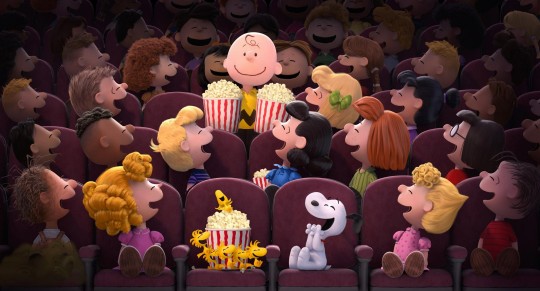
In December 2015, a movie reboot of one of history’s most beloved entertainment brands was released in cinemas, and it took the world by storm. That movie was not The Peanuts Movie.
Not that I’m setting myself up as an exception to that. Like pretty much everyone else, I spent the tail-end of 2015 thoroughly immersing myself in all things Star Wars: The Force Awakens, drinking deeply of the hype before seeing it as many times as I could - five in total - before it left theatres. In the midst of all that Jedi madness, I ended up totally forgetting to see The Peanuts Movie, Blue Sky Studios’ well-reviewed adaptation of Charles M. Schulz’s classic newspaper strip, which I’d been meaning to catch over the festive period. But then, it’s not as though the schedulers made it easy for me; in the US, there had been a buffer zone of a month between the launches of the two films, but here in the UK, Peanuts came out a week after Star Wars; even for this animation enthusiast, when it came to a choice between seeing the new Star Wars again or literally any other film, there was really no contest at all.
A year later, belatedly catching up with the movie I missed at the height of my rekindled Star Wars mania proved an eye-opening experience, and places Blue Sky’s film in an interesting context. With a $246.2 million worldwide gross, The Peanuts Movie did well enough to qualify as a hit, but it remains the studio’s lowest earner to date; in retrospect, it seems likely that going head-to-head with Star Wars and the James Bond movie Spectre didn’t exactly maximise its chances of blockbuster receipts. Yet in an odd way, modest, unnoticed success feels like a fitting outcome for The Peanuts Movie, a film that acts as a perfectly-formed celebration of underappreciated decency in a world of bombast and bluster. Charlie Brown, pop culture’s ultimate underdog, was never fated to emerge victorious in a commercial battle against Han Solo and James Bond, but his movie contains a grounded level of heartfelt sympathy for the small-scale struggles of unassumingly ordinary folk that higher-concept properties don’t have the time to express. The Peanuts Movie is a humbly heroic film about a quietly laudable person, made with understated bravery by underrated artists; I hope sincerely that more people will discover it like I did for years to come, and recognise just how much of what it says, does and represents is worth celebrating.
CELEBRATING... BLUE SKY STUDIOS
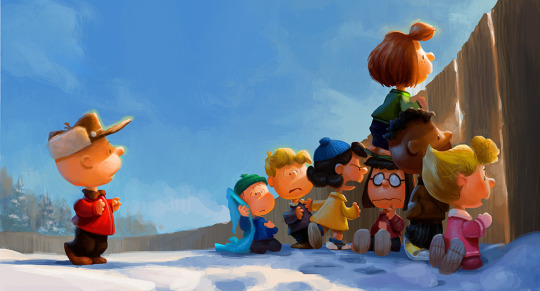
Before giving praise to The Peanuts Movie itself, it’d be remiss of me not to throw at least a few kind words in the direction of Blue Sky Studios - a group of filmmakers who I’m inclined to like, somewhat despite themselves, and who don’t always get very kind things written about them. After all, the 20th Century Fox subsidiary have been in the CGI feature animation mix since 2002, meaning they have a more established pedigree than most studios, and their long-running Ice Age franchise is a legitimately important, formative success story within the modern era of American animation. Under the creative leadership of Chris Wedge, they’ve managed to carve and hold a niche for themselves in a competitive ecosystem, hewing close to the Shrek-inspired DreamWorks model of fast-talking, kinetic comedy, but with a physical slapstick edge that marked their work out as distinct, at least initially. Sure, the subsequent rise of Illumination Entertainment and their ubiquitous Minions has stolen that thunder a little, but it’s important to remember that Ice Age’s bedraggled sabretooth squirrel Scrat was the CGI era’s original silent comedy superstar, and to recognise Blue Sky’s vital role in pioneering that stylistic connection between the animation techniques of the 21st century and the knockabout nonverbal physicality of formative 20th century cartooning, several years before anyone else thought to do so.
For all their years of experience, though, there’s a prevailing sense that Blue Sky have made a habit of punching below their weight, and that they haven’t - Scrat aside - established the kind of memorable legacy you’d expect from a veteran studio with 15 years of movies under their belt. Like Illumination - the studio subsequently founded by former Blue Sky bigwig Chris Meledandri - they remain very much defined by the influence of their debut movie, but Blue Sky have unarguably been a lot less successful in escaping the shadow of Ice Age than Illumination have in pulling away from the orbit of the Despicable Me/Minions franchise. Outside of the Ice Age series, Blue Sky’s filmography is largely composed of forgettable one-offs (Robots, Epic), the second-tier Rio franchise (which, colour palette aside, feels pretty stylistically indistinct from Ice Age), and a pair of adaptations (Horton Hears a Who!, The Peanuts Movie) that, in many ways, feel like uncharacteristic outliers rather than thoroughbred Blue Sky movies. Their Ice Age flagship, meanwhile, appears to be leaking and listing considerably, with a successful first instalment followed by three sequels (The Meltdown, Dawn of the Dinosaurs and Continental Drift) that garnered successively poorer reviews while cleaning up at the international box office, before last year’s fifth instalment (Collision Course) was essentially shunned by critics and audiences alike. Eleven movies in, Blue Sky are yet to produce their first cast-iron classic, which is unfortunate but not unforgivable; much more troubling is how difficult the studio seems to find it to even scrape a mediocre passing grade half the time.
Nevertheless, while Blue Sky’s output doesn’t bear comparison to a Disney, a Pixar or even a DreamWorks, there’s something about them that I find easy to root for, even if I’m only really a fan of a small percentage of their movies. Even their most middling works have a certain sense of honest effort and ambition about them, even if it didn’t come off: for example, Robots and Epic - both directed by founder Chris Wedge - feel like the work of a team trying to push their movies away from cosy comedy in the direction of larger-scale adventure storytelling, while the Rio movies, for all their generic antics and pratfalls, do at least benefit from the undoubted passion that director Carlos Saldanha tried to bring to his animated realisation of his hometown of Rio de Janeiro. I’ll also continue to celebrate the original Ice Age movie as a charismatic, well-realised children’s road movie, weakened somewhat by its instinct to pull its emotional punches, but gently likeable nevertheless; sure, the series is looking a little worse for wear these days, but at least part of the somewhat misguided instinct to keep churning them out seems to stem from a genuine fondness for the characters. Heck, I’m even inclined to look favourably on Chris Wedge’s ill-fated decision to dabble in live-action with the recent fantasy flop Monster Trucks; after all, the jump from directing animation to live-action is a tricky manoeuvre that even Pixar veterans like Andrew Stanton (John Carter) and Brad Bird (Tomorrowland) have struggled to execute smoothly, and the fact he attempted it at all feels indicative of his studio’s instinct to try their best to expand their horizons, even if their reach sometimes exceeds their grasp.
Besides, it’s not as though their efforts so far have gone totally unrewarded. The third and fourth Ice Age movies scored record-breaking box office results outside the US, while there have also been a handful of notable successes in critical terms - most prominently, Horton Hears a Who! and The Peanuts Movie, the two adaptations of classic American children’s literature directed for the studio by Steve Martino. I suppose you can put a negative spin on the fact that Blue Sky’s two best-reviewed movies were the ones based on iconic source material - as I’ve noted, the films do feel a little bit like stylistic outliers, rather than organic expressions of the studio’s strengths - but let’s not kid ourselves that working from a beloved source text isn’t a double-edged sword. Blue Sky’s rivals at Illumination proved that much in their botching of Dr Seuss’ The Lorax, as have Sony Pictures Animation with their repeated crimes against the Smurfs, and these kinds of examples provide a better context to appreciate Blue Sky’s sensitive, respectful treatments of Seuss and Charles Schulz as the laudable achievements they are. If anything, it may actually be MORE impressive that a studio that’s often had difficulty finding a strong voice with their own material have been able to twice go toe-to-toe with genuine giants of American culture and emerge not only without embarrassing themselves, but arguably having added something to the legacies of the respective properties.
CELEBRATING... GENUINE INNOVATION IN CG ANIMATION

Of course, adding something to a familiar mix is part and parcel of the adaptation process, but the challenge for any studio is to make sure that anything they add works to enrich the material they’re working with, rather than diluting it. In the case of The Peanuts Movie - a lavish computer-generated 3D film based on a newspaper strip with a famously sketchy, spartan aesthetic - it was clear from the outset that the risk of over-egging the pudding was going to be high, and that getting the look right would require a creative, bespoke approach. Still, it’s hard to overstate just how bracingly, strikingly fresh the finalised aesthetic of The Peanuts Movie feels, to the degree where it represents more than just a new paradigm for Schulz’s characters, but instead feels like a genuinely exciting step forward for the medium of CG animation in general.
Now, I’m certainly not one of those old-school puritans who’ll claim that 2D cel animation is somehow a better, purer medium than modern CGI, but I do share the common concern that mainstream animated features have become a little bit aesthetically samey since computers took over as the primary tools. There’s been a tendency to follow a sort of informal Pixar-esque playbook when it comes to stylisation and movement, and it’s only been relatively recently that studios like Disney, Illumination and Sony have tried to bring back some of that old-school 2D squash-and-stretch, giving them more scope to diversify. No doubt, we’re starting to see a spirit of visual experimentation return to the medium - the recent stylisation of movies like Minions, Cloudy With a Chance of Meatballs, Hotel Transylvania and Storks are testament to that - but even so, it feels like there’s a limit to how far studios are willing to push things on a feature film. Sure, Disney and Pixar will do gorgeous, eye-popping visual style experiments in short movies like Paperman, Inner Workings and Piper, but when it comes to the big movies, a more conservative house style invariably reasserts itself.
With the exception of a greater-than-average emphasis on physicality, Blue Sky’s typical playbook hasn’t really differed that much from their peers, which is partly why their approach to adapting Seuss and Schulz - two artists with immutable, iconic art styles of their own - have stood out so much. Their visual work on Horton Hears a Who! was groundbreaking in its own way - it was, after all, the first CG adaptation of Dr Seuss, and the result captured the eccentric impossibilities and flourishes of the source material much better than Illumination managed four years with The Lorax - yet The Peanuts Movie presented a whole new level of challenge. Where Seuss’s worlds exploded off the page with colour and life and elastic movement, Schulz’s were the very model of scribbled understatement, often eschewing backgrounds completely to preserve an expressive but essentially sparse minimalism. Seuss’s characters invited 3D interpretation with their expressive curves and body language; the Peanuts cast, by contrast, make no three-dimensional sense at all, existing only as a limited series of anatomically inconsistent stock poses and impressionist linework that breaks down the moment volume is added. It’s not that Charlie Brown, Snoopy and co are totally resistant to animation - after all, the Peanuts legacy of animated specials and movies is almost as treasured as the comic strip itself - but it’s still worth noting that the Bill Melendez/Lee Mendelson-produced cartoons succeeded mostly by committing fully to the static, spare, rigidly two-dimensional look of Schulz’s comic art, a far cry from the hyper-malleable Chuck Jones/Friz Freleng-produced style of the most famous Seuss adaptations.
Perhaps realising that Schulz cannot be made to adapt to 3D, Blue Sky went the opposite route: making 3D adapt to Schulz. The results are honestly startling to behold - a richly colourful, textured, fluidly dynamic world, populated by low-framerate characters who pop and spasm and glide along 2D planes, creating a visual experience that’s halfway between stop-motion and Paper Mario. It’s an experiment in style that breaks all the established rules and feels quite unlike anything that’s been done in CGI animation on this scale - with the possible exception of The Lego Movie - and it absolutely 100% works in a way that no other visual approach could have done for this particular property. Each moment somehow manages to ride the line of contradiction between comforting familiarity and virtuoso innovation; I’m still scratching my head, for example, about how Blue Sky managed to so perfectly translate Linus’s hair - a series of wavy lines that make no anatomical sense - into meticulously rendered 3D, or how the extended Red Baron fantasy sequences are able to keep Snoopy snapping between jerky staccato keyframes while the world around him spins and revolves with complete fluidity. Snoopy “speaks”, as ever, with nonverbal vocalisations provided by the late Bill Melendez, director of so many classic Peanuts animations; the use of his archived performance in this way is a sweet tribute to the man, but one that hardly seems necessary when the entire movie is essentially a $100 million love letter to his signature style.
I do wonder how Melendez would’ve reacted to seeing his work aggrandised in such a lavish fashion, because it’s not as though those films were designed to be historic touchstones; indeed, much of the stripped-back nature of those early Peanuts animations owed as much to budgetary constraints and tight production cycles as they did to stylistic bravery. Melendez’s visuals emerged as they did out of necessity; it’s an odd quirk of fate that his success ended up making it necessary for Blue Sky to take such bold steps to match up with his template so many decades later. Sure, you can argue that The Peanuts Movie is technically experimental because it had to be, but that doesn’t diminish the impressiveness of the final result at all, particularly given how much easier it would have been to make the film look so much worse than this. It’d be nice to see future generations of CG animators pick up the gauntlet that films like this and The Lego Movie have thrown down by daring to be adventurous with the medium and pushing the boundaries of what a 3D movie can look and move like. After all, trailblazing is a defining component of Peanuts’ DNA; if Blue Sky’s movie can be seen as a groundbreaking achievement in years to come, then they’ll really have honoured Schulz and Melendez in the best way possible.
CELEBRATING... THE COURAGE TO BE SMALL

In scaling up the visual palette of the Peanuts universe, Blue Sky overcame a key hurdle in making the dormant series feel worthy of a first full cinematic outing in 35 years, but this wasn’t the only scale-related challenge the makers of The Peanuts Movie faced. There’s always been a perception that transferring a property to the big screen requires a story to match the size of the canvas; in the animation industry, that’s probably more true now than it’s ever been. Looking back at the classic animated movies made prior to around the 1980s and 1990s, it’s striking how many of them are content to tell episodic, rambling shaggy dog stories that prioritise colourful antics and larger-than-life personalities over ambitious narrative, but since then it feels like conventions have shifted. Most of today’s crop of successful animations favour three-act structures, high-stakes adventure stories and screen-filling spectacle - all of which presents an obvious problem for a movie based on a newspaper strip about a mopey prepubescent underachiever and his daydreaming dog.
Of course, this isn’t the first time that Charlie and Snoopy have had to manage a transition to feature-length narrative, but it was always unlikely that Blue Sky would follow too closely in the footsteps of the four previous theatrical efforts that debuted between 1969 and 1980. All four are characterised by the kind of meandering, episodic structure that was popular in the day, which made it easier to assemble scripts from Schulz-devised gag sequences in an essentially modular fashion; the latter three (Snoopy, Come Home from 1972, Race for Your Life, Charlie Brown from 1977 and Bon Voyage, Charlie Brown (and Don't Come Back!!) from 1980) also made their own lives easier by incorporating road trips or journeys into their storylines, which gave audiences the opportunity to see the Peanuts gang in different settings. The first movie, 1969’s A Boy Named Charlie Brown, also features a road trip aspect to its plotline, but in most respects offers the most typical and undiluted Peanuts experience of the four original films; perhaps as a result, it also feels quite aggressively padded, while its limited cast (lacking later additions like Peppermint Patty and Marcie) and intimately dour focus made it a sometimes claustrophobic cinematic experience.
Given The Peanuts Movie’s intention to reintroduce the franchise to modern audiences who may not necessarily be familiar with the original strip’s melancholic sensibilities, the temptation was always going to be to balloon the property outwards into something broad, overinflated and grand in a way that Schulz never was; it’s to be applauded, then, that The Peanuts Movie ends up as that rare CGI animation that tells a small-scale story in a focused manner over 90 minutes, resisting the urge to dilute the purity of its core character-driven comedy material with any of the family adventure elements modern audiences are used to. Even more so than previous feature-length Peanuts movies, this isn’t a film with any kind of high-concept premise; rather than sending Charlie Brown out on any kind of physical quest, The Peanuts Movie is content to offer a simple character portrait, showing us various sides of our protagonist’s personality as he strives to better himself in order to impress his unrequited love, the ever-elusive Little Red-Haired Girl. The resulting film is certainly episodic - each attempt to impress his object of affection sends Charlie Brown into new little mini-storylines that bring different classic characters to the foreground and evoke the stop-start format of Schulz’s strip, even though the content and style feel fresh - but all of the disparate episodes feel unified by the kind of coherent forward momentum and progressive character growth that Bill Melendez’s older movies never really reached for.
Indeed, it’s probably most telling that the film’s sole major concession to conventional cinematic scale - its extended fantasy side-story featuring Snoopy engaging in aerial battles in his imaginary World War I Flying Ace alter-ego - is probably its weakest element. These high-flying action sequences are intelligently conceived, injecting some real visual splendour and scope without intruding on the intimacy of the main story, but they feel overextended and only infrequently connected to the rest of the film in any meaningful way. This would be less of a problem if the Snoopy-centric narrative had effective emotional hooks of its own, but sadly there’s really not much there beyond the Boys’ Own parody trappings; any real investment in Snoopy’s dreamed pursuit of his poodle love interest Fifi is undermined by her very un-Schulz-like drippy damselness, and it becomes hard to avoid feeling that you’re watching an extended distraction from the parts of the movie you’re actually interested in. Of course, it’s arguable that an overindulgent fondness for Snoopy-related flights of fancy drawing attention away from the more grounded, meaningful exploits of Charlie Brown and friends is actually a fair reflection of the Peanuts franchise in its latter years, showing that Blue Sky were faithful to Schulz to a fault, but I wouldn’t like to focus too much on a minor misstep in a film that’s intelligent and committed about its approach to small-canvas storytelling in a way you don’t often see from mainstream animated films on the big screen.
CELEBRATING... LETTING THE ULTIMATE UNDERDOG HAVE HIS DAY

All of these achievements would count for very little, though, if Blue Sky’s movie wasn’t able to adequately capture the intellect and essence of Schulz’s work, a task that seems simultaneously simple and impossible. For such a sprawling franchise, Peanuts has proven remarkably resilient to tampering, meddling or ruination, with each incarnation - whether in print or in animation - remaining stylistically and tonally consistent, thanks to the strict control Schulz and his fastidious estate have kept over the creative direction of the series. On the one hand, this is a blessing of sorts for future stewards of the franchise, as it gives them a clear playbook to work from when producing new material; on the other hand, the unyielding strictness of that formula hints heavily at a certain brittleness to the Peanuts template, suggesting to would-be reinventors that it would take only a small misapplication of ambition to irrevocably damage the essential Schulz-ness of the property and see the result crumble to dust. This has certainly proven the case with Schulz’s contemporary Dr Seuss, one of few American children’s literature writers with a comparable standing to the Peanuts creator, and an artist whose literate, lyrical and contemplative work has proven eminently easy to ruin by misguided adapters who tried and failed to put their own spin on his classic material.
There’s no guesswork involved in saying these concerns were of paramount importance to the Schulz estate when prepping The Peanuts Movie - director Steve Martino was selected specifically on the strength of his faithful adaptation of Seuss’ Horton Hears a Who!, and the film’s screenplay was co-written by Schulz’s son Craig and grandson Bryan - but even taking a cautious approach, there are challenges to adapting Schulz for mainstream feature animation that surpass even those posed by Seuss’ politically-charged poetry. For all his vaulting thematic ambition, Seuss routinely founded his work on a bedrock of visual whimsy and adventurous, primary-colours mayhem, acting as a spoonful of sugar for the intellectual medicine he administered. Schulz, on the other hand, preferred to serve up his sobering, melancholic life lessons neat and unadulterated, with the static suburban backdrops and simply-rendered characters providing a fairly direct vessel for the strip’s cerebral, poignant or downbeat musings. The cartoonist’s willingness to honestly embrace life’s cruel indignities, the callousness of human nature and the feeling of unfulfilment that defines so much of regular existence is perhaps the defining element of his work and the foundational principle that couldn’t be removed without denying Charlie Brown his soul - but it’s also something that might have felt incompatible with the needs and expectations of a big studio movie in the modern era, particularly without being able to use the surface-level aesthetic pleasure that a Seuss adaptation provides as a crutch.
I’ve already addressed the impressive way The Peanuts Movie was able to make up the deficit on visual splendour and split the difference in terms of the story’s sense of scale, but the most laudable aspect of the film is the sure-footed navigation of the tonal tightrope it had to tread, deftly balancing the demands of the material against the needs of a modern audience, which are honestly just as important. Schulz may have been a visionary, but his work didn’t exist in a vacuum; the sometime brutal nature of his emotional outlook was at least in part a reaction to the somewhat sanitised children’s media landscape that existed around him at the time, and his work acted as an antidote that was perhaps more necessary then than it is now. That’s not to say the medicinal qualities of Schulz’s psychological insights don’t still have validity, but to put it bluntly I don’t think children lack reminders in today’s social landscape that the world can be a dark, daunting and depressing place, and it feels like Martino and his team realised that when trying to find the centre of their script. Thus, The Peanuts Movie takes the sharp and sometimes bitter flavour of classic Schulz and filters it, finding notes of sweetness implicit in the Peanuts recipe and making them more explicit, creating a gentler blend that goes down smoother while still feeling like it’s drawn from the original source.
The core of this delicate work of adaptation is the film’s Charlie Brown version 2.0 - still fundamentally the same unlucky totem of self-doubt and doomed ambition he’s always been, but with the permeating air of accepted defeat diminished somewhat. This Charlie Brown (voiced by Stranger Things’ Noah Schnapp) shares the shortcomings of his predecessors, but wears them better, stands a little taller and feels less vulnerable to the slings and arrows that life - and ill-wishers like Lucy Van Pelt - throw at him. Certainly, he still thinks of himself as an “insecure, wishy-washy failure”, but his determination to become more than that shines through, with even his trademark “good grief” sometimes accompanied by a wry smile that demonstrates a level of perspective that previous incarnations of the character didn’t possess. Blue Sky’s Charlie Brown is, in short, a tryer - a facet of the character that always existed, but was never really foregrounded in quite the way The Peanuts Movie does. In the words of Martino:
“Here’s where I lean thematically. I want to go through this journey. … Charlie Brown is that guy who, in the face of repeated failure, picks himself back up and tries again. That’s no small task. I have kids who aspire to be something big and great. … a star football player or on Broadway. I think what Charlie Brown is - what I hope to show in this film - is the everyday qualities of perseverance… to pick yourself back up with a positive attitude - that’s every bit as heroic … as having a star on the Walk of Fame or being a star on Broadway. That’s the story’s core.”
It’s possible to argue that leavening the sometimes crippling depression in Charlie Brown’s soul robs him of some of his uniqueness, but it’s also not as though it’s a complete departure from Schulz’s presentation of him, either. Writer Christopher Caldwell, in a famous 2000 essay on the complex cultural legacy of the Peanuts strip, aptly described its star as a character who remains “optimistic enough to think he can earn a sense of self-worth”, rather than rolling over and accepting the status that his endless failures would seem to bestow upon him. Even at his most downbeat and “Charlie-Browniest”, he’s always been a tryer, someone with enough drive to stand up and be counted that he keeps coming back to manage and lead his hopeless baseball team to defeat year after year; someone with the determination to try fruitlessly again and again to get his kite in the air and out of the trees; someone with enough lingering misplaced faith in Lucy’s human decency to keep believing that this time she’ll let him kick that football, no matter how logical the argument for giving up might be.

Indeed, Charlie Brown’s dogged determination to make contact with that damn ball was enough to thaw the heart of Schulz himself, his creator and most committed tormentor - having once claimed that allowing his put-upon protagonist to ever kick the ball would be a “terrible disservice to him”, the act of signing off his final ever Peanuts strip prompted a change of heart and a tearful confession:
“All of a sudden I thought, 'You know, that poor, poor kid, he never even got to kick the football. What a dirty trick - he never had a chance to kick the football.”
If that comment - made in December 1999, barely two months before his death - represented Schulz’s sincere desire for clemency for the character he had doomed to a 50-year losing streak, then The Peanuts Movie can be considered the fulfilment of a dying wish. No, Charlie Brown still doesn’t get to kick the football, but he receives something a lot more meaningful - a long-awaited conversation with the Little Red-Haired Girl, realised on screen as a fully verbalised character for the first time, who provides Charlie Brown with a gentle but quietly overwhelming affirmation of his value and qualities as a human being. In dramatic terms, it’s a small-scale end to a low-key story; in emotional terms, it’s an moment of enormous catharsis, particularly in the context of the franchise as a whole. It’s in this moment that Martino’s film shows its thematic hand - the celebration of tryers the world over, a statement that you don’t need to accomplish epic feats to be a good person, that persevering, giving your all and maintaining your morality and compassion in the face of setbacks is its own kind of heroism. The impact feels even greater on a character level, though; after decades of Sisyphean struggle and disappointment, the ending of The Peanuts Movie is an act of beatific mercy for Charlie Brown, placing a warm arm around the shoulders of one of American culture’s most undeservedly downtrodden characters and telling him he is worth far more than the sum of his failures, that his essential goodness and honesty did not go unnoticed, and that he is deserving of admiration - not for being a sporting champion or winning a prize, but for having the strength to hold on to the best parts of himself even when the entire world seems to reject everything he is.
Maybe that isn’t how your grandfather’s Peanuts worked, and maybe it isn’t how Bryan Schulz’s grandfather’s Peanuts worked either, but it would take a hard-hearted, inflexible critic to claim that any of The Peanuts Movie’s adjustments to the classic formula are damaging to the soul of the property, particularly when the intent behind the changes feels so pure. The flaws and foibles of the characters are preserved intact, as is the punishingly fickle nature of the world’s morality; however, in tipping the bittersweet balance away from bitterness towards sweetness, Martino’s movie escapes the accusation of mere imitation and emerges as a genuine work of multifaceted adaptation, simultaneously acting as a tribute, a response to and a modernisation of Charles Schulz’s canon. The Peanuts Movie is clearly designed to work as an audience’s first exposure to Peanuts, but it works equally well if treated as an ultimate conclusion, providing an emotional closure to the epic Charlie Brown morality play that Schulz himself never provided, but that feels consistent with the core of the lessons he always tried to teach.
In reality, it’s unlikely Peanuts will ever be truly over - indeed, a new French-animated TV series based on the comics aired just last year - but there’s still something warmly comforting about drawing a rough-edged line under The Peanuts Movie, letting Charlie Brown live on in a moment of understated triumph 65 years in the making, remembered not for his failings but by his embodiment of the undersung heroism of simply getting back up and trying again. It’s not easy to make a meaningful contribution to the legacy of a character and property that’s already achieved legendary status on a global scale, but with The Peanuts Movie, the perennially undervalued Blue Sky gave good ol’ Charlie Brown a send-off that a spiritually-minded humanist like Charles Schulz would have been proud of - and in my book, that makes them heroes, too.

#peanuts#peanutsmovie#charles schulz#charles m. schulz#charlie brown#peppermint patty#lucy van pelt#linus van pelt#snoopy#woodstock#blue sky#blue sky studios#animation#film analysis#movies#movie critique#long post
28 notes
·
View notes
Text
How Trolls can make you feel better about the world, and make DreamWorks feel better about themselves
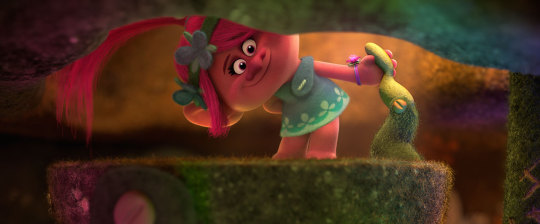
Guys, I’m upset that more people aren’t talking about how good a movie Trolls is, and it’s gotten to the point where I feel I need to say something about it.
I realise it feels a bit odd to be talking about a $125 million saturation-marketed DreamWorks toy franchise reboot like it’s a plucky no-budget underdog in dire need of a signal boost. OK, box office-wise this bright animated comedy isn’t exactly pulling up trees, but it’s coasting along moderately, picking up some decent critical notices along the way. If it can post some solid international numbers, it’ll probably go down as a modest success - but damn it, people don’t seem to be talking about it in the same way they did about other big animated movies this year like Zootopia, Kubo and the Two Strings and notably the acclaimed Moana, the film that’s currently sucking all the oxygen out of spaces in which we might otherwise have been talking about Trolls.
I’m not making any overreaching claims, here: I’m not going to pretend I think Trolls is a game-changing work of animation that’s been wrongly denied a Frozen-scale cultural footprint due to unprepossessing origins and a competitive field. The truth is that Trolls, on a foundational level, is as simple a film as you’d expect from a story about cheerful singing Troll dolls, but that basic framework is adorned with a richness of genuine creativity and goodwill that deserves closer scrutiny and greater praise that the tepid three-paragraph “it’s fine if you have kids” write-ups this movie has generally received. No, Trolls isn’t a masterpiece, but it is another genuinely pleasant surprise in one of the most diversely successful years for animation in recent memory, as well as an effective distillation of the concept of happiness in a year that - cartoons aside - has been sorely lacking in it. And if that’s not worth taking a few thousand words to analyse and celebrate, I don’t know what is.
FOR DREAMWORKS, A MOMENT OF CALM IN A STORM

There are a number of reasons why a confident, well-rounded, unassumingly cheerful film from DreamWorks Animation feels like a breath of fresh air at the moment, not least of which is the sense of well-earned respite a quiet success like Trolls provides from the volatility the studio has recently experienced.
Once, the animation house that Jeffrey Katzenberg built was pretty uncontested as the primary challenger to the Disney empire; indeed, there was a period during the heady days of the mid-2000s where it seemed only a film or two away from becoming the market leader outright. It’s easy to forget this in today’s diversified landscape, but DreamWorks was basically Disney’s first ever sustainable rival in US feature animation, with the immediate impact of its signature blend of contemporary humour, modern sensibilities and postmodern wit sending an ailing post-Renaissance Disney into an existential tailspin from which it took around a decade to recover. If Pixar hadn’t been operating at peak capacity during that time, DreamWorks could’ve quite easily snatched away The Walt Disney Company’s decades-old status as the industry’s standard-bearers; indeed, looking at the number of other studios that started modelling their movies on DreamWorks’ template rather than Disney’s at that time, it’s arguable that they briefly did.
However, since the commercial peak of Shrek 2 in 2004, the bloom has come off DreamWorks’ rose to an alarming degree. Despite producing some of its best work since then with the Kung Fu Panda and How to Train Your Dragon movies, the studio’s ascendant momentum has stalled considerably, as Disney has reasserted its traditional dominance and other companies - including Sony, Blue Sky and Illumination Entertainment - have co-opted a lot of the hip, contemporary gimmicks that were once the DreamWorks USP. So far, it doesn’t feel like they’ve quite been able to find a new one, and that’s not for want of trying; incredibly, since their debut movie Antz in 1998, the studio has somehow churned out 33 films, encompassing collaborations with Aardman, dalliances with 2D animation, spiralling budgets, multiple changes in distribution partner and an unwieldy sprawl of different stylistic approaches and results. As a consequence, a studio that never achieved Pixar or Disney’s level of consistency even in its glory years has seen the tone, approach and reputation of its movies fluctuate wildly, with broad, confident successes like Madagascar 3: Europe’s Most Wanted followed by commercial underperformers like Rise of the Guardians, Turbo and Mr Peabody & Sherman, or middling little oddities like Home. On the one hand, you have to give the studio credit for being so willing to experiment; on the other, the whole process has at times felt less like a company that’s fearlessly willing to try new things and more like one that’s flailing around in the dark, with fresh rounds of high-profile job losses every few months accompanying each failed experiment.
With DreamWorks Animation having now been bought outright by Universal - meaning their erstwhile rivals, the high-flying Illumination, will become their corporate stablemates - the studio will be under renewed pressure to get their house in order, find their voice again and redefine what it means to be a DreamWorks movie in 2017 and beyond. Against this backdrop, the value of a movie as solid, charismatic and quietly assured as Trolls becomes clearer: not only is it a film of great quality and verve, but it also acts as a refreshingly clear reassertion of the most appealing idiosyncrasies of a characteristically “DreamWorks” approach to filmmaking. It’s not the best film the studio has produced, but it feels uniquely valuable in the current context because its strengths are DreamWorks’ strengths, triumphing in all the areas that the studio typically excels when they just clear their heads and trust their instincts.
“BUT IT LOOKED SO SHIT!”
youtube
For all this high-minded talk, I have patience for anyone reading this with quizzical scepticism, because the inescapable reality here is that we are talking about an animated musical from 2016-vintage DreamWorks about Troll dolls who sing pop covers, twerk and sporadically fart glitter. To those of you feeling suspicious about claims that such a film could attain any level of artistic success, I can only offer you this reassurance: yes, I am talking about the same Trolls movie you’re thinking of, and yes, I thought it looked shit as well.
In fact, I’ll go a step further than that; it’s not so much that Trolls simply looked shit, it felt as though it was inexorably destined to be shit. As a scholarly enthusiast of animation, I have sympathy for the creative and commercial turmoil that DreamWorks has undergone in recent years , but empathy doesn’t erase the impact years of inconsistent output, characterised by recurrent bad habits, can have on the audience’s willingness to give you the benefit of the doubt. In the animation industry, where the reputation of a creative team can mean more to fans than the popularity of any given franchise, that’s particularly crucial, and DreamWorks’ recent travails have earned them the reputation of a company that’s often more at home churning out products rather than art, with a weakness for lowbrow snark, thematic shallowness and scattershot storytelling. Without that implicit trust, audiences simply haven’t had much reason to have faith that DreamWorks would be able to turn an iffy concept into a good movie - and boy, did Trolls sound like an iffy concept.
I mean, I accept that we live in a world of reboots these days, but the flipside of the recent trend of successful brand revivals is the emergence of an Hollywood assumption that awareness of a property is the same thing as interest or demand; this is and always has been a misguided fallacy, and the indifferent reaction to the imminent return of Thomas Dam’s kitschy line of hideous plastic homunculi was a perfect demonstration of that. Sure, the toys have experienced on-off popularity since the 1960s, but their appeal has always been faddish, insubstantial and fleeting, and - following the disastrous tween-oriented “Trollz” rebranding of the mid-2000s - it didn’t feel like a property that anyone was clamouring to see make an expensive return. In this context, DreamWorks’ long-time fixation on the idea - announcing a movie in 2010, before buying the Trolls property outright in 2013 - felt like another misreading of the public’s appetites, from the same studio that had for some reason assumed the world was clamouring for a $145 million Mr Peabody & Sherman reboot. Indeed, from the number of different directors and cast members the Trolls project burned through as the concept was repeatedly stripped down and rebuilt over six years of development, it would seem some inside the studio may have privately agreed.
In this context, the staggeringly awful first teaser trailer for Trolls released earlier this year (the one I’ve posted above) starts to feel less like an honest attempt to sell the movie, and more like a deliberate act of sabotage from some disgruntled DreamWorks staffer trying to preemptively scuttle a project they were convinced was going to be a disaster. Why else would you release a piece of advertising that so aggressively (and, as it turns out, inaccurately) confirms all of the worst assumptions a wary audience would have about your film? I generally try to scrupulously avoid pre-judging a piece of work before I’ve had a chance to experience it in full, but I’d be lying if I were to say I didn’t have certain uncharitable expectations about the prospect of a commercially-driven reboot of a dated, irrelevant toy brand from a studio that, at its worst, is guilty of pushing out glossy but mediocre work stitched together out of stylistic cliches; with its garish, gimmicky-looking characters dancing aimlessly in a blank void of celebrity name-drops and weak punchlines, the January teaser therefore could hardly have made a worse first impression.
EXPERIMENTATION ON A BLANK CANVAS

Given the difficult birthing process of what always seemed destined to be a misshapen project, it’s little wonder that DreamWorks seemed to be on the defensive when trying to sell their vision of Trolls to the public. For the longest time, it seemed like they didn’t really have one, with the movie’s eventual directors Mike Mitchell and Walt Dohrn confessing that there was, essentially, nothing for them to work with when they joined the project in 2013, despite three years of prior development. Fortunately, in handing the reins over to Mitchell and Dohrn - veterans of the affable Shrek Forever After - the studio gained the benefit of directors who realised that having nothing to work with can often be the best possible starting point.
After all, adaptation is a tricky process at the best of times, and when you’re dealing with source material as narratively unpromising as a range of characterless toys, it’s often better to be able to just start with a clean slate than it is to be lumbered with a handful of uncinematic vestigial concepts that you’re unable to discard. That kind of start-from-zero approach worked beautifully with Warner Bros’ The Lego Movie (whose makers were consulted for advice by the Trolls team) and it’s possible to discern the same intelligent, laterally-thinking approach in the way DreamWorks’ movie goes about fleshing out its ideas. Certainly, it doesn’t reach the same degree of conceptual sophistication and ambition as The Lego Movie, but it arguably doesn’t really need to; the happy-go-lucky primary colours of the Trolls concept don’t really call for that level of complexity, so it’s understandable that Mitchell and Dohrn - alongside screenwriters Jonathan Aibel and Glenn Berger, of the Kung Fu Panda series - chose to go for an essentially simple, earnest movie that explores the innocently happy heart of the property in a way that’s thoughtful without becoming self-consciously ideas-driven.
Providing the film with this lightness of intent seems to have a liberating effect on Trolls’ world design and aesthetic imagineering, allowing DreamWorks’ artists to cut loose in a remarkable manner. One of the positive upshots of the studio’s somewhat fluid identity is that they’ve always been unusually willing to experiment visually, making it harder to pin down a DreamWorks house style than it is with, say, Disney or Pixar. This hasn’t always been a good thing - it’s resulted in failures such as Shrek’s bland human designs, Turbo’s featureless oversimplicity or Shark Tale’s grotesque piscine caricatures, for example - but that adventurousness pays off immensely in Trolls, resulting in a film with a truly distinct, original look. Enormous credit needs to go to production design Kendal Cronkhite - one of the key architects of the striking, angular look of the Madagascar movies - who spearheaded a beautifully tactile, handicraft-inspired aesthetic for Trolls, with every surface, substance and particle effect evoking the fuzzy texture of felt, fabric and other craft materials. It’s an equally inspired move to offset the searing, bright colours of the world of the Trolls, characterised by a surrealist Rayman Origins meets Adventure Time design language, with extended sequences in the grimy, desaturated, Fungus the Bogeyman-esque world of the miserable antagonistic Bergens, creating visual variety and evocative collisions of tone when the story calls for it.
Combined with animation, staging and setpiece design that pop and stretch with the energy of great 2D work, it results in a film that’s vibrant and constantly enjoyable to look at - and that’s not even mentioning the successful makeover of the eponymous Trolls themselves, who’ve received a My Little Pony: Friendship is Magic-esque overhaul that stylises, brightens and sands the rough edges off the original dead-eyed cherub-like designs, creating visually dynamic, distinct and appealing personalities that retain enough elements of the classic ugly-cute look (swirling hair, squat dimensions, flattened tomato noses) to ensure they still read as Trolls - albeit ones that are actually appealing, which is a first.
WHERE POP CULTURE SERVES THE FILM, NOT VICE-VERSA
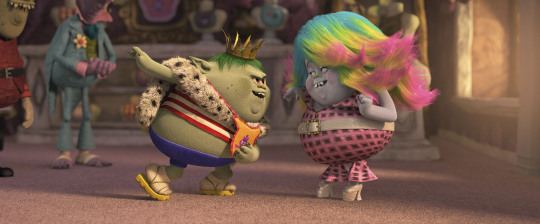
The combination of an improvisational remit and the handcrafted visuals imbues Mitchell and Dohrn’s vision of Trolls with a spirit of reckless, self-gratifying adventurousness, that same Lego Movie-esque feeling that you’re watching a creative team revelling in the opportunity to fill a conceptual void with their own personality and stream-of-consciousness spitballing. Sure, the substance of the movie’s story template and character arcs are fairly conventional, but its style has the bubbling fizziness of a team of imaginative people throwing all of their favourite ingredients into a pot and letting it simmer, and it feels like a worthy trade-off.
It’s gratifying to sense that kind of energetic freedom sparking off a project that could easily have felt shackled by its commercial origins; what’s also illuminating is the way its handmade style allows it to function as a kind of cross-section of the DreamWorks ethos. Present any creative team a blank slate, and you’ll see a reflection of their artistic personality in the result; in Trolls, you can clearly see DreamWorks’ instinct to embrace big, broad, cartoonish visuals over grounded verisimilitude; you can feel their love of rapid-fire gags and their tendency to treat humour as the foundation point for their character writing; you can feel their need to temper sentimentality with knowingness, and to try and balance the two without tipping the scale too far in either direction. However, it’s Trolls’ surprisingly well-considered relationship with pop culture that really showcases the most distinctive aspects of DreamWorks’ in-house approach at their best.
After all, it’s a widely accepted fact that DreamWorks’ movies can, for better or worse, be defined by their unusually direct interactions with pop culture and postmodern concepts, with early efforts like the celebrity-studded Antz and the parodic, metatextually loaded Shrek setting a tone early on. Whereas Disney usually strives for a certain timeless nonspecificity with their movies, DreamWorks’ filmography has always delighted in toying with the cultural knowledge of a presumed contemporary audience, whether that be through the deconstruction of lampshaded cliches, casting that plays on actors’ recognisability and reputation, or meta references used as a focus of humour. However, pairing this kind of approach with storytelling integrity is a difficult balance to strike, and it’s fair to say DreamWorks haven’t always pulled it off. All too often, these kinds of references serve to date the work, erode the audience’s investment in the world of the film, and ultimately undermine the sincerity of the story and characters; as such, it’s probably telling that many of the studio’s best movies - notably How to Train Your Dragon and its sequel - have been the ones that kept the egregious pop culture riffs to a minimum. Trolls, on the other hand, is a reminder of how successfully an on-form DreamWorks can weave those stylistic elements into the texture of a movie in a way that distinguishes and enriches it, rather than working to its detriment. This is a movie that knows how just the right amount of knowingly arch lines and readings to add zest to potentially saccharine material; it knows when to offset overtly conventional story ideas with a contemporary edge; and, crucially, it knows when to hold back on those instincts, and to let the simplicity and honesty of a moment play out.
One of the biggest markers of the intelligence of Trolls’ method is in its embrace of the jukebox musical genre, a decision that gives DreamWorks’ proclivity for using contemporary musical cues as storytelling shorthands a framework in which to function. In some of the studio’s weaker films, this habit has felt creatively lazy, distracting or like a slightly embarrassing appeal for street cred; by contrast, Trolls’ all-singing, all-dancing approach lets those moments become a diegetic part of this world’s colourful fabric, and an organic element of the style. Instead of distractingly on-the-nose needle drops or incongruous dance parties intruding on an otherwise non-musical presentation, Trolls is able to play with the form and intent of its music intelligently, using the audience’s familiarity with the connotations of certain songs to play into the comedy, while at other moments letting the music speak as earnest statements of character. Thus, the overblown and somewhat cliched nature of tracks such as “Total Eclipse of the Heart”, Lionel Richie’s “Hello” and “The Sound of Silence” are undercut for comic effect - as is the original track “Get Back Up Again”, a parody of Disney-style “I can do it” ballads that’s visually accompanied by a series of slapstick calamities befalling its singer - while the infectious pop anthem “Can’t Stop the Feeling!” earns pride of place in a rare DreamWorks dance party finale that feels emotionally earned and thematically logical. Props, too, to the deployment of an acoustic version of Cyndi Lauper’s “True Colors” during a pivotal character moment that I found genuinely moving, to a degree I thought was beyond the jukebox musical genre.
Likewise, the vocal performances of Trolls are demonstrative of another characteristic staple of the DreamWorks method - celebrity casting - working at close to its best. At this point, we need to accept that star-oriented casting decisions are a non-negotiable foundation stone of the studio’s work, with all the downsides that entails; sure, it doesn’t always turn out as egregious or decadent as the worst examples of the idea (hello, Shark Tale), but there’s no question that even in some of their best movies (Kung Fu Panda, How to Train Your Dragon), the desire to fill out every key speaking role with a big-name star can result in distracting stunt casting that conflates name recognition with adequate characterisation. Trolls isn’t perfect in this respect, but it at least has the good sense to keep the more obvious examples of gimmicky casting (Gwen Stefani, Icona Pop, James Corden, Kunal Nayyar) in smaller, less consequential parts, while the pivotal roles are played by actors whose recognisability serve their parts, rather than distract from them. Having recognisable presences such as Anna Kendrick and Christopher Mintz-Plasse playing to type as the effervescent heroine Poppy and the dorky King Gristle, respectively, works in the film’s favour, as does the surprise factor of casting Zooey Deschanel against the grain as Bridget the dowdy scullery maid; the biggest asset, though, is star and soundtrack producer Justin Timberlake, who manages to play both to and against type within the same narrative to convey paranoid survivalist Branch’s journey from dour, surly malcontent to angel-voiced hero, while also bringing his musical chops to bear on getting the film’s all-important soundtrack to the level where it can carry the movie. Trolls never becomes a Justin Timberlake vehicle - if it’s anyone’s show, it’s Anna Kendrick’s - but it absolutely benefits from his specific cultural weight, and it’s rare to see DreamWorks actually extract what feels like full value from a big-name star in this way.
A GENUINELY HAPPY PLACE
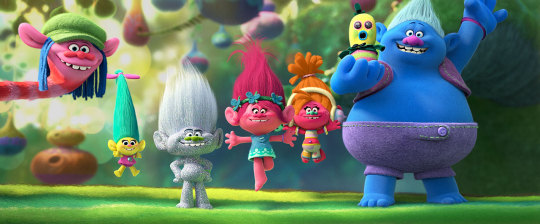
However, if I had to pick out a single aspect of Trolls to hold up as its greatest success, it would be this: somehow, DreamWorks have made a film that's explicitly devised first and foremost as a platform for a toy franchise relaunch, yet doesn’t feel like it has an ounce of cynicism at its core.
The impressiveness of this achievement goes beyond the nature of the source material and stands out as a significant milestone for DreamWorks themselves, when taking into context the difficult and often destructive nature of the relationship they’ve always had with cynicism. With so many of their early movies gaining prominence for their satirical, deconstructionist tendencies and their too-cool-for-school humour and aesthetics (exhibit A: the “DreamWorks Face”), reaching for actual sincerity has always seemed like an uncomfortable stretch for the studio - a feeling exacerbated by their overtly mercenary approach to sequel-making, studio boss Jeffrey Katzenberg’s high-profile and often petty feuds with Disney, or the fact that Shrek’s postmodern success gave rise to so many wearingly sarcastic, smart-mouthed imitators that it briefly seemed like DreamWorks had killed off the idea of shameless earnestness in children’s media.
Add to this the inherent suspicion attached to movies based on essentially plotless toyetic concepts, and you get a project that was always going to be fighting an uphill battle to prove the purity of its artistic and moral intentions; what’s striking, then, is how nimble the resulting movie has turned out, and how unfettered it feels by any of that baggage. Certainly, it’s a simple - and in some respects, unchallenging - film, and DreamWorks have made much more intellectually sophisticated work than this, but at the same time it’s important not to underestimate the difficulty of taking a concept of such guileless simplicity and render it in a way that feels honest and heartfelt, while resisting the temptation to push it into edgy self-parody. I feel as though the DreamWorks of ten years ago would have done the latter, but Mitchell and Dohrn’s movie takes a higher road by unironically embracing the essentially straightforward positivity of its source material, using it as a springboard for a Buddhist-inspired meditation on the nature of happiness as a philosophical concept. Again, don’t expect anything as complex as Zootopia, Inside Out or The Lego Movie here, but even so, it still takes some skill to render a message as potentially vapid as “true happiness is to be found within by communing with loving people who can help you find it” in a manner that feels textured enough to ring true to savvy audiences living in a complex world, yet retain its essential purity.
Trolls’ solution to this problem is the same one that’s at the heart of all of its triumphs; simply, it trusts its own instincts. In this case, that means going with the ingrained DreamWorks reflex of defusing potentially overwrought or cliched material with knowing humour to prevent the untainted, beguiling sweetness at the heart of the film from ever tipping into cloying sickliness, even when it gets right up to the edge of that precipice. That skillful balancing act informs the exaggerated yet winning optimism of our heroine Poppy, whom Anna Kendrick infuses with too much intelligent charm and sympathetic vulnerability to ever become annoying; it’s there in the winningly romantic character arcs of Branch and Bridget, both of which walk a fine line between parodic and genuinely heartwarming; and it’s there in the sunshine-and-rainbows musical finale, which actually earns the right to revel in the simple exuberance of bright colours, upbeat melodies and funky dancing in a way that few DreamWorks movies have matched when trying to pull off the same trick. The difference between those movies and this one is sincerity, in large part, but it’s also one of intent; I suspect that one key reason I’ve never gotten on with the Shrek movies and their ilk is that there’s an aspect of their purpose that feels destructive, as though they exist primarily to dismantle valuable, positive parts of animation culture with satire, without replacing it with anything that felt half as honest. Trolls, by contrast, is a movie that feels giving, generous of spirit and feelgood in such an uncynical way that it would come across as dangerously naive if it wasn’t so damn effective. In a recent interview with Animation World Network, Mike Mitchell made this ethos explicit:
There's so much in the news and the media that is awful, not just for kids, but for me. I think it's so dark. The internet is a judgmental and dark place, and we wanted to make something bright and colourful and funny. Sometimes, that’s dismissed as "oh, well, that's not really a real film". I hope the trends change. I hope we can move that dial a little bit where things can be joyful and happy. Why not?
It’s a worthy sentiment, and one that his movie ultimately succeeds in embodying, despite the odds against it. Maybe that’s not enough on its own to elevate the film into the category of high art, but in a world that often feels depressing and exhausting to live in, it genuinely feels like a welcome, worthwhile and legitimately affirming thing for a studio to make, and that’s infinitely more praise than I would have ever expected to give to a movie based on Troll dolls.
THE MORAL OF THE STORY
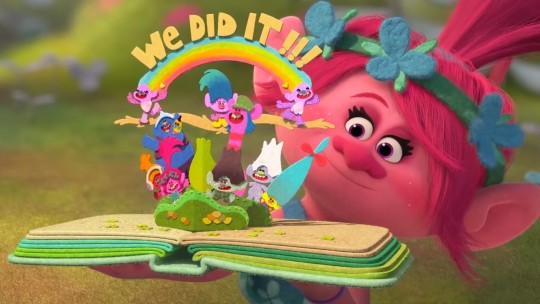
As yet, the box office story of Trolls hasn’t been fully told yet; it’s coasted along modestly in the face of considerable competition (from Doctor Strange, Fantastic Beasts and Where to Find Them and Moana, among others), but it’s hard to tell at this point whether it’s going to be the success the perennially cash-strapped DreamWorks need it to be, given their investment in the brand. For my part, I hope it hits whatever mark the bean-counters deem necessary from it, because based on this evidence I’d very much welcome an ongoing Trolls franchise based on this pleasant, beguiling formula. Even if that does come to pass, though, I doubt the film’s going to do well enough to become a movie we look back on as a defining DreamWorks release, one that went on to shape the future of their creative strategy; frankly, I think that’s a little bit of a shame, because I really think it’s a film with a lot to teach DreamWorks - and, indeed, the movie industry as a whole - about the tangible value that a strong sense of direction, identity and purpose can bring to even the most unprepossessing of concepts.
After all, we currently occupy a cultural moment where inauspiciously terrible-sounding ideas get announced every few weeks (stand up, Willy Wonka prequel, Die Hard prequel, Memento remake, Emojimovie: Express Yourself), and it’s tempting to just greet these concepts with acidity, scorn and an assumption of the worst-case scenario; it’s worth remembering, though, that there’s also a growing list of movies that might have sounded shaky on paper (The Lego Movie, 21 Jump Street, the Planet of the Apes reboot series) but have since become audience favourites after demonstrating a surprisingly coherent creative vision and artistic purpose when people finally got to see them. I’m not sure Trolls is going to earn the same kind of kudos, but it stands nevertheless as a timely reminder to audiences not to judge a book by a drab cover - and, to studios, that even the most misguidedly greenlit pitch can be salvaged by hiring the right author.
This should be a heartening lesson for DreamWorks in particular, which has an inconsistent track record with picking good ideas - indeed, its next movie, The Boss Baby, looks so confused as a concept that I’ve still not gotten my head around it - but they (and we) should take encouragement from the fact Trolls was ultimately able to find its vision simply by following its own heart and drawing deep from the unique strengths that DreamWorks has developed over the years, yet often struggled to define and replicate. In this way, Trolls ends up embodying its own moral and imparting it back upon its creators, by showing them that the creative identity they’ve been searching for all these years can be found within themselves, just waiting for the right people to bring it out of them. With Trolls, DreamWorks found their happy place; it’s my great hope that they can remember the way back there in future.

#trolls#dreamworks trolls#dw trolls#troll#troll dolls#trolls movie#dreamworks#dreamworks animation#branch#poppy#guy diamond#broppy#princess poppy#animation#film analysis#movies#long post
38 notes
·
View notes
Text
In which I attempt to learn something from watching those godawful animated Titanic movies
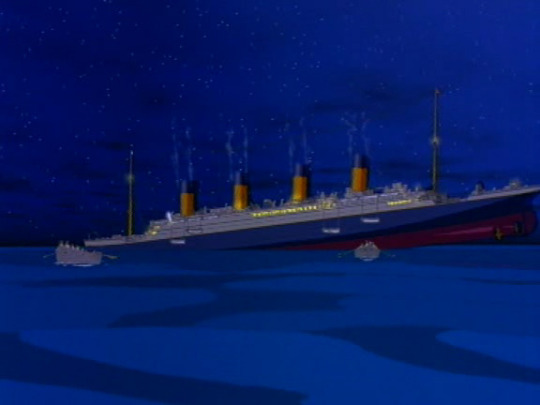
I think a lot of people these days have forgotten what a genuinely bad movie looks like.
Our modern landscape of online media criticism tends to be made up of a lot of hyperbole, particularly when it comes to the things we don’t like. This is understandable; after all, social media has made it simultaneously easier and harder than ever to get your voice heard amid all of the chatter, which is why the most strongly-worded views tend to hold sway. It’s not enough to merely not like a film any more - you have to make a case for why it was objectively an aesthetic and/or moral atrocity of the very lowest order. Messy, rough-edged movies like the 2015 Fantastic Four or Batman v Superman: Dawn of Justice become easy targets for this, as they have garish and obvious flaws to accentuate and riff on, but the bloodlust that cynical teardown-style critique generates tends to be self-sustaining, meaning you start seeing otherwise intelligent people eviscerating rigorously competent, glossily-produced films like Jurassic World, the 2016 Ghostbusters or even Star Wars: The Force Awakens as though they were genuine disasters. I don’t think these folk are irredeemably misguided or anything; I just feel as though they need a reminder of what a real, honest-to-god cinematic disaster actually looks like. Which brings me to Titanic.
I am not, of course, talking about the beloved multi-Oscar-winning James Cameron movie Titanic; I’m referring to the bizarre, grotesque, meritless and essentially unwatchable trio of animated movies based on the same story that Italy produced between 1999 and 2004. Internet-savvy folk will most likely be aware of the existence of at least one of these films, with a lot of this awareness attributable to the popular online critic/comedian Doug Walker and his popular Nostalgia Critic video review series, which has provided netizens with at least a rough outline of what these movies entail. Believe me, though, when I say that no edited video precis can quite capture the actual experience of trying to sit down and actually watch this loose trilogy of bacteria-eaten wrecks; I’m not sure words can, either, but I’ll try my best. Suffice to say, if you’re in need of resetting your own personal baseline for what constitutes a legitimately dreadful film, then you’re in luck.
WHAT THE HELL ARE THESE FILMS?

For those of you who aren’t familiar with these tasteless oddities, I’ll try to provide some background information - not that there’s much to go on with these movies, at least not on the English-speaking internet. In broad terms, they’re basically cheap off-brand mockbuster versions of the James Cameron movie, filtered through an animated musical adventure lens that’s cracked and caked in filth. Naturally, each of them steals liberally from Cameron’s telling of the story - most notably in their use of the “lovers separated by social barriers” trope - but each manages to drown whatever usable ingredients they’ve borrowed from elsewhere in a stomach-churning melange of appalling animation, hideous judgement and inappropriate rap songs.
Of the three, it’s probably Camillo Teti’s Titanic: The Legend Goes On from 2000 that’s the best known - it’s the one that people are usually talking about if they ever make reference to an animated Titanic movie, and the one that most online critics seem to gravitate towards when looking for low-rent garbage to rip the piss out of. Certainly, it’s the most egregiously ugly of the three, and its lowlights are easiest to sum up in GIF form, but it’s actually Orlando Corradi and Kim Jun-ok’s The Legend of the Titanic from 1999 that’s the real daddy of this head-scratching sub-genre, both in terms of its age and the dysfunctional template it creates for adapting what ought to be challenging, sensitive material.
Clearly, the intention with all of these films was to take the basic outline of a provably appealing story - which had just formed the basis of the highest-grossing film in history at the time - and to sand down its rough edges to create a version that might pass for “child-friendly”. Given that we’re talking about the sinking of the RMS Titanic - one of the deadliest maritime disasters in history, with a body count of more than 1,500 - it’s certainly a tall ask. Still, it’s not wholly impossible - after all, Disney did a fairly thorough job of rinsing the depressing or homicidal elements out of stories like The Little Mermaid, Hercules and Pocahontas, showing that dark or violent source material can be lightened with appropriately intelligent adaptation. Unfortunately, Messrs Teti, Corradi and Kim are not really at Disney’s level in this respect; sure, they’re copying from the Disney playbook so fastidiously as to lift entire plot elements and character designs wholesale, but they have no concept of how to use them appropriately or even tastefully, or how to conjure any kind of acceptable, empathetic human reaction to one of history’s most famous tragedies.
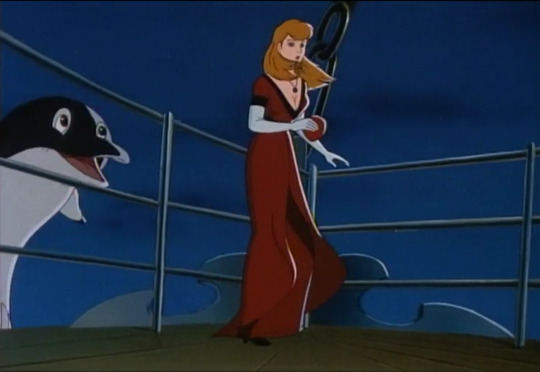
What results is a collection of films that simultaneously attempt to exploit the pathos of the real-life Titanic disaster while undercutting the drama and loss with stunningly out-of-place comedy relief, charmless animal sidekicks, horribly misapplied fairy tale cliches and gobsmackingly inappropriate and unearned “happy” endings. I do have to concede that the third film in this collection - 2004’s In Search of the Titanic, the sequel to The Legend of the Titanic - is exempt from some of these criticisms simply because it goes off in its own direction; however, the result has basically nothing to do with the Titanic whatsoever, and is generally so batshit insane and genuinely disturbing that I really can’t give it any credit, either.
I’m not going to lie to you: beyond being ideal fodder for a bad movie night with drunken friends, there is no value whatsoever in watching any of these films on their own merits, because they don’t have any. I’m not sure why they even exist or why anyone has ever seen them; I can only assume that DVDs of them must still be floating around in pound shops and dollar stores somewhere, waiting for unassuming grandparents to buy them accidentally. Still, comparing all three side by side is a strangely educational experience, because not only are they all perfect examples of how to make an irreparably broken animated film, but each is distinct in its own way, fracturing along a slightly different fault line compared to the others. As such, watching them in a row offers three separate lessons about how badly wrong you can go, as though you’re getting to see three parallel universe versions of the Titanic’s maiden voyage: one where it hits the iceberg, one where the ship is made of cardboard and falls apart in the sea, and one where the crew takes LSD and drives the boat straight into the dock. One journey, three failures, three cautionary tales. Let’s see what we can learn.
A FAILURE OF SKILL - TITANIC: THE LEGEND GOES ON
youtube
OK, maybe “learning” is overstating it a bit; certainly, it’s hard to imagine anyone coming away from our first film, Titanic: The Legend Goes On, feeling that their IQ has gone in any direction other than down. As discussed earlier, this isn’t actually the oldest of the three movies, but it is the best known, mostly by virtue of its infamous “rapping dog” scene, which is exactly what it sounds like. It’s also a good place to start, because out of the three this is the film whose fatal flaw is the easiest to diagnose: namely, that it’s simply one of the most poorly-made films ever to receive a commercial release.
This isn’t a description I’d throw around lightly, or out of a desire to be hyperbolic. I’ve seen some truly atrocious examples of cinematic craftsmanship - Felix the Cat: The Movie, The Room, multiple Uwe Boll films - but director Camillo Teti’s efforts here truly test the boundaries of what I’m willing to describe as a “film”. The running time of The Legend Goes On is a mere 70 minutes, with around 15 of them occupied by the credits; this sounds like a mercifully short duration until you realise the film seemingly contains only enough finished animation to fill about 20 of those minutes. The rest of it is an eye-wateringly jerky patchwork of endlessly reused shots, inept or non-existent inbetweening, blatantly incomplete sequences and random bits of incoherent brain-vomit. It’s clear that Teti is trying to imitate the aesthetic of a Disney Renaissance movie in terms of the movement style and visual design, but he possesses barely a hundredth of the budget and talent that he would need to accomplish this, creating one of the most disjointed and bewilderingly edited experiences you’ll ever sit through.

It’s difficult to sympathise with the catastrophic bungling of this film’s execution, because there’s nothing remotely ambitious about what it’s attempting to do. The other two Titanic movies, for better or worse, can at least be described as idiosyncratic to a fault, whereas The Legend Goes On is a personality-free vacuum created from 100% recycled or stolen elements. The basic storyline - a star-crossed romance across the class divide aboard the Ship of Dreams - is cribbed wholesale from James Cameron’s movie, albeit with a reversed poor girl/rich boy dynamic to allow Teti to unsubtly crowbar a warmed-over Cinderella riff into it, complete with Prince Charming overtones and a wicked stepfamily photocopied directly from Disney’s template. These are far from the only things The Legend Goes On purloins from other movies, though - in fact, almost all of the overstuffed cast are recoloured ripoffs of existing characters, including (but not limited to) a family of immigrant mice straight from An American Tail, a pair of dalmatians who are literally just Pongo and Perdita from One Hundred and One Dalmatians, some Speedy Gonzales-esque Mexican stereotype mice, the geese from The Aristocats, the crow from The Secret of NIMH, and a doppelganger of Gaston from Beauty & the Beast, who actually goes as far as to be called Gaston. I’d be willing to give Teti some leeway on this if I detected some kind of satirical intent behind all of this blatant IP theft, but there really doesn’t seem to be any point to the existence of 90% of these characters at all, other than to participate in dead-end slapstick subplots that mostly go nowhere and usually aren’t even resolved.
In addition to these visual and narrative crimes, the film is also an auditory atrocity, with dead-eyed monotone vocal performances, bizarre accents and a handful of songs that emerge from nowhere and assault the audience for no reason other than that the animated musical format was mildly fashionable at the time. Of the three songs, the bland, droning love ballad “Holding Me” is probably the best, though it’s hardly worthy of being reprised about five times over the course of an hour in some misguided attempt to turn it into this movie’s answer to “My Heart Will Go On”; nevertheless, it’s better than the jauntily racist faux-Mexican feelgood anthem “Mucho Gusto”, to say nothing of the much-maligned “Party Time”. There’s not much I can say about this that hasn’t already been said elsewhere on the internet, other than that a rap number performed by a boombox-toting, vest and cap-wearing dog throwing gang signs into a fisheye lens in a film set in 1912 on the Titanic was, on balance, probably a bad idea.
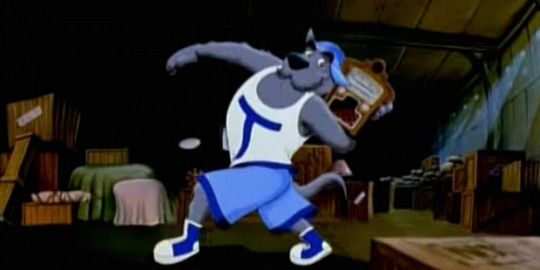
It’s a real testament to the constructional failings of Titanic: The Legend Goes On that they almost overshadow its deep-rooted conceptual sins. As mentioned earlier, the entire crumbling edifice of Teti’s film is built on the faulty assumption that the world’s most famous maritime disaster is fair game for a goofy children’s film just because a more talented director made an accessible, popular movie on the subject, and it’s an assumption that grows more offensive as the film goes on. Even Cameron’s movie is sometimes criticised for emphasising the plight of its fictional protagonists over the real-life casualties, but at least there you can make the argument that Jack and Rose are supposed to be microcosmic representations of the broader tragedy; Teti might say the same about his personality-free heroes William and Angelica, but frankly he’d be talking out of his arse if he did, given that the film explicitly treats their escape from the ship and the survival of the rest of the plagiarised supporting cast as an unambiguous happy ending, with the actual historical deaths of 1,500 other people basically going unmentioned.
Still, I find myself feeling oddly curious to hear from Camillo Teti when watching Titanic: The Legend Goes On, because it’s a film that demands some kind of explanation. I’d probably feel more satisfied if I were to find out this movie was produced as part of an elaborate money-laundering or investment fraud scheme, a la The Producers, because I can’t honestly believe that anyone with the honest intention of making a functional film would accept their name being attached to something with such an appallingly low standard of craftsmanship. Its timing suggests an opportunistic cash grab, but its sheer dreadfulness must surely have limited its ability to succeed on even that basic level. My personal theory is that Teti realised the fundamental moral and artistic bankruptcy of what he was doing partway through the production, and phoned the rest of it in to doom the whole endeavour to bargain-bin obscurity; if that was indeed his intention, that would make The Legend Goes On the only successful project on this list.
A FAILURE OF JUDGEMENT - THE LEGEND OF THE TITANIC
youtube
Given that most people who‘ve even heard of an animated Titanic movie are thinking of “the one with the rapping dog”, the very existence of The Legend of the Titanic often comes as a surprise and a source of some confusion - and not only because of its perplexingly similar title. For Italy to have produced one inept and ill-advised animated romance about the Titanic featuring talking mice is hard enough to believe; for them to have produced two within the space of a year is more than most people are willing to accept. Still, it’s important not confuse the two: The Legend of the Titanic may bear a startling number of similarities to The Legend Goes On, but it’s very much its own beast, with monstrous characteristics all its own.
As failures go, this one’s a bit more subtle, though no less complete. Still, I have to concede that watching Orlando Corradi and Kim Jun-ok’s movie in close proximity to Camillo Teti’s allows the former to make a better first impression than it probably deserves on its own merits. The Legend of the Titanic isn’t an exceptionally well-made film in any sense, but it is a basically competent, fluid, consistently-coloured and smoothly edited piece of work, with (largely) non-hideous character design and that distinctive “outsourced to Korea” anime-adjacent visual slickness; as such, it basically looks like a Studio Ghibli masterpiece by comparison to the dumpster fire that is The Legend Goes On. Better still, the movie shows indications of having an actual script with organic plot development and a coherent progression of events, in contrast to the random pick-n-mix of sentence fragments and screaming that Teti put together for his “film”. But don’t let its suspiciously non-malformed exterior deceive you; The Legend of the Titanic may have a better grasp of the fundamentals of filmmaking than its mutant brother, but its crimes against artistic judgement and basic sensitivity go several steps further than The Legend Goes On ever dreamed.
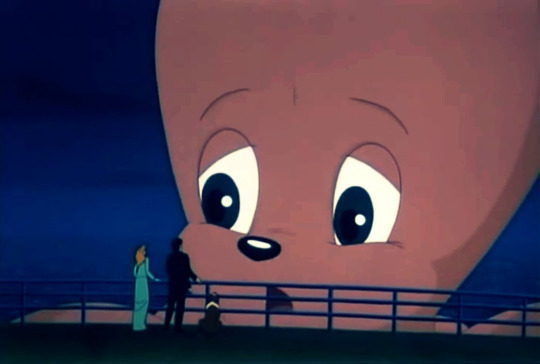
It’s not like the rotten core of The Legend of the Titanic is particularly well-hidden, anyway; it’s there in the very first scene, a modern-day framing sequence depicting the elderly mouse Top Conners - a mouse crewman from the doomed ship - explaining to his shrill grandchildren that the alleged deaths of hundreds of Titanic passengers was “all a misunderstanding”. It’s a pretty breathtaking bit of revisionism right off the bat, given Titanic’s status as one of the most famous human tragedies of all time, but you can’t accuse the film of half measures when it comes to portraying its tastelessly misconceived alternate history. Corradi and Kim just about maintain a semblance of sanity for the first chunk of the movie, proceeding in a familiar Cameron-plagiarising vein with a formulaic love triangle between bland heroine Elizabeth, dashing gypsy prince Don Juan and the hilariously evil eyepatch-wearing whaling tycoon Everard Maltravers, while talking dogs and racial stereotype mice scuttle around below decks creating generic mischief. It’s only when a despairing Elizabeth steps out on the bow of the ship, only for her tears to be caught by magical moonbeams that allow her to speak to dolphins, that the film ramps off a cliff into a chasm of offensive lunacy.
Look, I’m aware that most popular mainstream films based on historical events are guilty of revisionism to at least some extent, but there’s a difference between artistic licence and repurposing the story of the Titanic as an environmentalist parable about an anime princess and some cartoon animals waging a proxy war on the whaling industry. As a general rule, it’s almost certainly a bad idea to claim your cheaply-made cartoon knockoff movie will tell “the REAL story of the Titanic”, and that’s quadruply true when your version of the “real story” is about a gang of mice and dolphins teaming up with a duke’s daughter to stop an evil businessman and his anthropomorphic shark henchmen from tricking a giant dog-faced octopus into sinking the Titanic with an iceberg in order to cover up an illegal whaling agreement. It’s clear that Corradi and Kim’s concept and save-the-planet message are well-intentioned on some level, but their philanthropic credentials are undermined significantly by the fact they’ve hijacked a real-life tragedy that had absolutely nothing to do with environmentalism or whaling and airbrushed over 1,500 deaths to cynically exploit the brand recognition, which is just gross.

By the end of it all, the fact that The Legend of the Titanic’s offers higher overall production values than The Legend Goes On ceases to really count for anything, as the bitter taste left by its shocking lack of judgement gradually starts to rankle more than anything in Camillo Teti’s incompetent but essentially substance-free work. If your lip hasn’t curdled into a sneer of outright disgust by the end of the film, the staggeringly whitewashed finale - which “reveals” that all of the Titanic’s passengers were actually rescued by benevolent whales, and that no humans or animals died at all during the disaster, not even characters who we unequivocally saw dying on screen- is sure to push you over the edge. For all its myriad failings, the least you can say for The Legend Goes On is that it deigned to acknowledge that some people died on the Titanic; that Corradi and Kim can’t even bring themselves to make that basic intellectual acknowledgement turns the entire enterprise into an exercise in near-sociopathic denialism.
Clearly, then, there’s little to be learned from The Legend of the Titanic on a moral or historical level that wouldn’t get you committed to an institution; if there’s anything to be learned from it as a creative enterprise at all, it’s that no amount of sound craftsmanship can compensate if the core statement you’re trying to make with your story is as poorly considered as this is. In terms of basic competence, The Legend of the Titanic should be leagues ahead of the amateur-hour ghastliness of Titanic: The Legend Goes On, but Corradi and Kim’s judgement about the thematic appropriateness of their treatment of sensitive material is so spectacularly off-base that it condemns their film to the same watery grave. The most I’m willing to say for this movie is that it probably had the most potential of the three, and the most sincere intention of being an actual film; but then, I’m sure the crew of the Titanic had “sincere intentions” of making it to New York, which is why we don’t give out medals for good intentions.
A FAILURE OF SANITY - IN SEARCH OF THE TITANIC, aka TENTACOLINO
youtube
Still, if we’re talking about perceived intentions being important, then it’s always better to come away from a movie feeling like you understood what it set out to achieve - even if it didn’t manage it - than it is to come to the end of a film feeling pummeled into bleary-eyed submission by a barrage of inchoate, discordant and often terrifying gibberish. This brings us neatly to the third and final film in this loose trilogy, 2004’s In Search of the Titanic, which is like being locked in a room with a creepy, muttering clown for an hour and a half.
Also known by its alternative title Tentacolino, Corradi and Kim’s second Titanic movie unquestionably has one thing going for it: the sheer, audacious chutzpah of the idea to even try to make a sequel to a Titanic movie. Not even James Cameron had the brass balls to attempt this, and it’s difficult not to feel at least a little curious about what a filmmaker might come up with. Unfortunately, the chances of seeing a sane solution to a potentially interesting creative conundrum were always going to be low when dealing with the people who turned the basic Titanic story into an anthropomorphic whaling conspiracy, and this does indeed prove to be the case. Predictably, untethering Corradi and Kim’s diseased creative impulses from the need to stick to any kind of pre-existing story formula allows them to freewheel off into a realm of total insanity, producing one of the most tonally uncontrolled and unintentionally disturbing animated films I’ve ever seen in my life.
Picking up three years after the original, our unmemorable heroes Elizabeth and Don Juan are newly married, and are travelling with their talking dog Smile and two of the first movie’s irritating mice to locate the wreck of the Titanic, with the help of 1915’s most curiously advanced bathysphere. This quickly brings them back into conflict with the same gangster sharks responsible for sinking the ship in the first place, who wreck their bathysphere and leave them to be rescued by a procession of mermaids from the lost city of Atlantis (yes, this really is the actual storyline). At this point, they’re essentially tricked into drinking an elixir of life to let them live in Atlantis forever without ever being able to leave (which they’re unquestioningly fine with), and then have to contend with an uprising of malcontent Atlantean mice who want to steal the elixir of life and take over the world, setting the stage for a truly bizarre underwater war between talking sharks, goons in submarines, mermaids riding chariots, an army of reanimated children’s toys and a dog firing a laser gun.
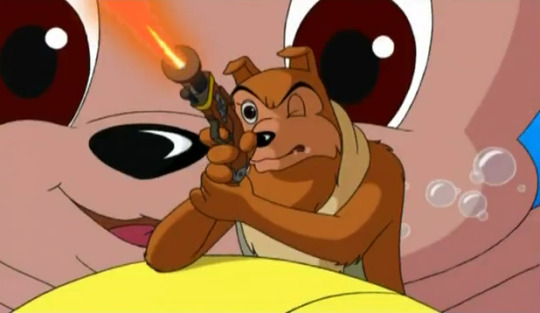
It’s really hard to know where to start with all this. It’s somewhat fitting that a film this confused should have two alternate titles, neither of which is actually relevant: the story, such as it is, really has nothing to with either the Titanic or the giant octopus known in the original Italian dub as Tentacolino, who’s barely present in the movie. The main reason for this is that In Search of the Titanic isn’t really about anything: it’s less a story than it is a series of free-association fever dreams. This is a children’s movie in which one of our heroes looks at his surroundings and immediately assumes he’s died and gone to Hell, and you can’t really blame him; the Atlanteans are, after all, a truly nightmarish crew of disconcertingly surrealist grotesques, including dayglo mermaids, a shrieking jack-in-the-box fish (?), a stone chair with a face (??), a sexy green cowgirl nurse (???) and a supposedly benevolent king who looks like a palette-swapped Ringwraith. The film’s vision of Atlantis is a visually incoherent mess of dull-looking office blocks, stately palaces and retro-future Jetsons-style cityscapes, populated by talking toys and the usual assortment of crude racial caricatures that we’ve come to expect from the Italian Titanic animated movie subgenre. There’s a point where the villain of the piece, a dictatorial rat, gives a rambling speech railing against the Atlantean denizens and his desire to “leave behind this weird place”, and you can’t help but feel he’s just saying what 99% of the audience will probably be thinking by that point.
Everything about In Search of the Titanic seems to ratchet the unintentional horror factor up to 11 - and that’s before you even get to deal with the soundtrack. The lack of ill-advised musical interludes was one of the few saving graces of The Legend of the Titanic, but the sequel reverses this trend and doubles down on it, offering up a rap-based villain song by a gangster shark that’s possibly even worse in compositional terms than The Legend Goes On’s better-known rapping dog effort; I admire the bravado of beginning a rap with the line “yo yo yo, look at my teeth” as much as the next person, but when the rest of your lyrics are a garbled cacophony crammed into an ill-defined rhythm, the novelty factor only gets you so far. Still, I’d listen to it a thousand times if the alternative was revisiting the “Living in Atlantis” song, a shrill number that unsuccessfully tries to blend cabaret lounge music with Kraftwerk-style electronica. I assume the effect was supposed to be charming, but the spectacle of an effete, giggling jack-in-the-box fish screaming lyrics such as “Atlantis is the only place where you’ll ALWAYS STAY AWAKE” in front of an army of living dolls just comes across as aggressively frightening.

What never becomes at all clear through all this nonsense is exactly what Corradi and Kim thought they might be accomplishing. The Legend of the Titanic was certainly dribbling garbage, but with its environmentalist themes, you could at least vaguely discern a point to the endeavour; hell, even The Legend Goes On had the recognisable outline of the Disney musical template to go by, despite the amateurish way in which the details were filled in. By contrast, In Search of the Titanic is entirely formless gibbering that refuses to come into any sort of focus or reveal a shred of purpose as a piece of communicative art. Even as a sequel, it’s a near-total failure that contradicts its predecessor’s plot on numerous occasions, treats the actual Titanic as a complete afterthought, and provides no coherent role for any of the returning characters to fill - a sensation accentuated by the fact that most of them have been recast or even renamed in the English-language dub. The story just sort of burbles along, throwing all sorts of discomfiting non-sequitur imagery at you, until reaching a perfunctory ending where our heroes all get to live in eternal paradise on a tropical island (even though this makes a nonsense of the first movie’s New York-based modern framing device), while the villainous mice go feral and lose their minds in a hellish sub-Victorian asylum, with their straitjacketed leader screaming his sanity as he is imprisoned forever. It’s an outrageously nightmarish beat that’s cheerfully brushed past in the context of the movie, but stands out as harrowing even in a film as unrelentingly upsetting as this one is.
Still, I suppose it’s fitting that a scene in a Victorian asylum closes out In Search of the Titanic, a film that demonstrates why creativity and imagination need to be tempered by some degree of rationality, purpose and taste if you’re going to produce anything worthwhile. This was never going to be a great work of maverick brilliance - for all its weirdness, it’s ultimately as dependent on cliche as any other third-rate animated movie - but having at least one sane voice in the writers’ room might have saved it from being quite so alienatingly crazy. That it doesn’t feel as offensive or exploitative as The Legend of the Titanic or Titanic: The Legend Goes On is only because it veers so far from history that it’s not really a Titanic movie any more; by most other metrics, it’s a repellent mess that’s difficult to look at or think about. The best I can say about it is that it did at least show me things I’ve never seen in a film before; however, it also made me realise why I’ve never seen those things in a film before, and that perhaps some journeys were never meant to be taken.
LEARNING FROM FAILURE
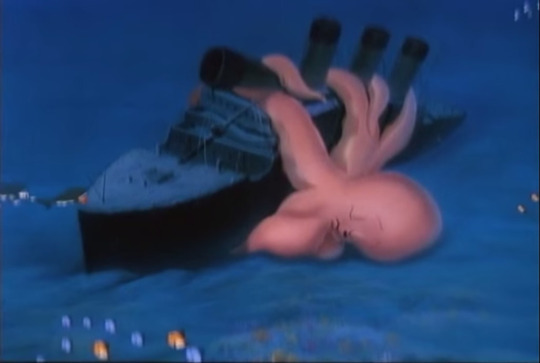
Watching all three of these Titanic movies back-to-back is an exercise in gradually escalating bewilderment, and not just because each one gets progressively weirder; ultimately, what’s most confusing is how even the most talentless filmmakers could have three separate attempts at tackling the Titanic tragedy and totally miss the point every single time. There’s a reason this story has captured the public imagination for more than a century, and it’s more than just the size of the boat - it’s the fact it acted as such a perfect microcosm for the human struggle, with class conflict, gender roles and the conflict between man and nature all playing out over a single, fateful voyage. It’s not like Teti, Corradi and Kim can even use the excuse of being too dense to see the inherent drama on the page; they had the universally-appealing James Cameron movie right there in front of them acting as a $200 million cheat sheet, and they still managed to utterly balls it up three times in the space of five years.
The fact that all of these movies manage to misunderstand the resonance of the Titanic story so dismally gives you cause to wonder whether the makers of these movies actually realised the sinking of the Titanic was an actual historical event, rather than a stock fairy tale story template they were free to reinterpret, Disney-style, to whatever degree they pleased; I think I’d feel more comfortable with them if that was indeed the case, since I’m happier to accept naive ignorance as an explanation than I am to try and interpret these films as somebody’s honest idea of a sensitive, intelligent treatment of a disaster that killed more than a thousand men, women and children. Still, it’s somewhat fitting that in failing to take any of the right lessons from Titanic, these movies become their own odd sort of learning experience, even if it’s a sometimes bitter medicine to swallow.
That’s why I’m sort of pleased that these lurid insults to human compassion exist - even moreso since they’re available to watch for free, at least for as long as they hang around on YouTube. Animation is a fine medium, but just like any other it’s able to plumb the depths as well as hit the heights, and sometimes reminding yourself of just how low cartoons can sink can give you a renewed appreciation for the highlights. If the ultimate power of the Titanic tragedy is as a cautionary tale, then it’s appropriate for these animated adaptations to function on a similar level: as disasters of unimaginable proportions that we as a culture must learn to come to terms with if we are ever to grow past the very human failings that caused them. In that regard, maybe future generations will be able to gain something positive from these garish follies; until then, we’ll always have the rapping dog, I suppose.
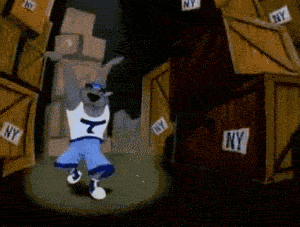
#titanic#titanic the musical#titanic the legend goes on#legend of the titanic#tentacolino#in search of the titanic#movies#film analysis#film#review#bad movies#wtf#why#rapping dog#animation#long post
31 notes
·
View notes
Text
Can Zootopia offer a solution to the stagnation of the Disney love story?
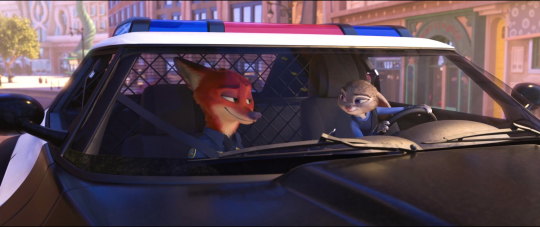
I’ve been thinking a lot lately about whether it’s a good idea for a fox and a rabbit to make out, and it’s making me think twice about everything I ever learned about love from Disney movies.
Let me backtrack a bit. As you’re probably aware, I was a pretty huge fan of Walt Disney Animation Studios’ latest movie Zootopia, for reasons I’ve already explained in detail. As it turns out, I was far from alone in this response: pretty much the whole world turned out to see the animal crime caper, turning it into a critical and commercial smash that exceeded most reasonable expectations, with the internet dissolving accordingly into a swamp of Judy Hopps and Nick Wilde fanart and GIFs. With the studio in newly sequel-happy mood, the question was inevitably put to Zootopia directors Byron Howard and Rich Moore of whether Zoo2pia (I’m copyrighting that name) might be something they’d consider. Replying in the affirmative, the filmmakers gave a few hints of how they’d approach a follow-up to their intricately designed race relations parable, revealing that the first thing they’d have to consider before continuing their story of prejudice, racial profiling and political fearmongering is... whether the fox and the rabbit will make out or not.
This might strike you as an odd allocation of priorities, but it’s indicative of the specific way in which fans tend to connect with Disney stories, and the the broader trends this reflects in terms of how the idea of love is represented within their films. Neither Howard nor Moore is a hormone-addled shipper fixated on perceiving their own work in terms of potential hookups (well, Rich Moore kind of is, but in a nice way), so the fact they’ve felt the need to publicly address this point first and foremost speaks volumes about the degree to which the concept of romance has come to dominate audience interpretations of the studio’s work. Zootopia is not really a film about love, but it is a Disney film, and viewers have been trained by experience to expect Disney films to wallow in adolescent ideas of starry-eyed romance; therefore, when Disney presents us with a likeable male/female pairing with sparkling repartee and great chemistry, it’s little wonder that people will rush to put two and two together - particularly on the internet, a place where someone will have drawn basically every character in fiction having sex with Shrek.
Still, the arguments surrounding the implications - romantic or otherwise - of Zootopia’s emotional journey are particularly interesting, as they open the door for a wider discussion about the characteristics and limitations of the traditional Disney love story. There’s a reason that the conversations about Nick and Judy tend to start and end with “will they hook up?”, and that’s because Disney have a lengthy history of presenting “will they hook up?” as the single most meaningful and important personal journey that any set of characters can experience. It’s a precedent that’s not only reductive in terms of the kinds of stories that Disney films can tell, but also does a disservice to the sheer diversity of emotional adventures and experiences that Disney could be depicting while still keeping “love” as the central theme. This fossilised precedent - inherited from storytelling traditions going back centuries - is the main reason why Disney find themselves backed into a corner with Nick and Judy, harangued by fans to define their whole characters on the question of whether they’re going to kiss or not, trapped by expectations they themselves created over eight decades of filmmaking. It’s a tough spot to be in - but I also believe that Nick and Judy might be the perfect characters to help them get out of it.
“AND THEY ALL LIVED HAPPILY EVER AFTER.”
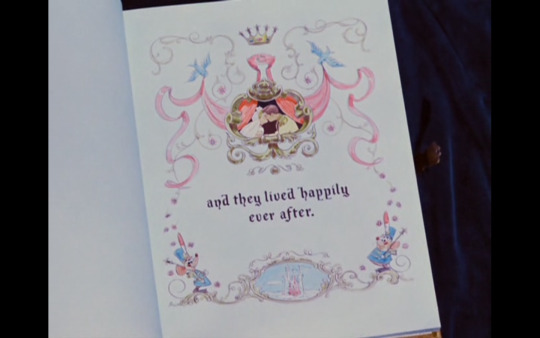
This phrase is synonymous with the grand tradition of fairy tale storytelling and Disney’s own role in popularising the genre among modern audiences; it’s also the single most immutable element of their in-house approach to depicting romance, to the point that it’s becoming a bit of a rod for their backs. You’d probably be surprised if you actually look at the number of feature-length Disney films that are based on traditional European fairy tales - I count only eight of their 55 releases so far, and just three prior to the start of their “modern” era circa 1989, but your personal definition of “fairy tale” may vary - but there’s still a distinct sense that these are the movies that really form the foundation stones of their storytelling empire. In that context, the choice of Snow White and the Seven Dwarfs as their feature debut feels like a deliberate mission statement, a declaration of their intent to found their brand on fairy tale principles - that is to say, timeless, whimsical family entertainment that’s heavy on wonder and magic, and low on cynicism and clouds without silver linings.
Of course, this is a slightly limited and sanitised interpretation of fairy tales as a genre, but it’s the one Disney has stuck with, setting it as the default tone for Disney movies, even when the subject matter veers far away from standard fairy tale territory. There are a number of ways in which this has manifested - a heavy emphasis on coming of age stories, for example, and on villains receiving fatal comeuppances - but there are few areas where this influence can be seen more clearly than in the unbreakable fixation on love and romance as the engine powering male/female relationships. Disney films are thick with dashing, handsome heroes and swooning porcelain heroines falling in love beneath starry skies, and - just as in most fairy tales - the vast majority of these movies treat the moment when they say “I love you” as the end of their journeys as real people with stories worth telling. Anything else that might happen to the characters from that point - either as individuals or as a couple - is hand-waved away with that nonspecific “happily ever after” epithet, whether it’s spelled out in literal terms or conveyed via camera language.
It’s obvious to see the appeal of this kind of story - it’s a tidy way to end, playing off the old-fashioned view of marriage as a moment when the transition from child to adult is completed - but the focus on the happily-ever-after narrative as the alpha and omega of storytelling is proving to be massively limiting. In particular, it’s amazing to think how Disney films can fixate so firmly on the concept of love, pushing their iconic love ballads and romantic heroines to the forefront, without ever showing awareness of the fact they’ve been representing the same aspect of love - which in reality comprises the first 1% of a long-term romantic relationship - over and over again, to the almost complete exclusion of anything else.
Naturally, this opens up obvious pathways for discussion about the need for greater social diversity, LGBT representation and depictions of non-conventional lifestyles in Disney movies, but honestly, it’s not like the studio has even come close to exploring the full breadth of what a purely conventional by-numbers heterosexual relationship looks like, either. As far as Disney seem to be concerned, the initial stage of a romantic relationship between a man and a woman - from their meeting up until the point where they mutually decide to become a couple - is the only proper definition of a “love story”, leaving vast swathes of human experience unrepresented and unacknowledged by their movies.
LOVE AS A DESTINATION, NOT A JOURNEY
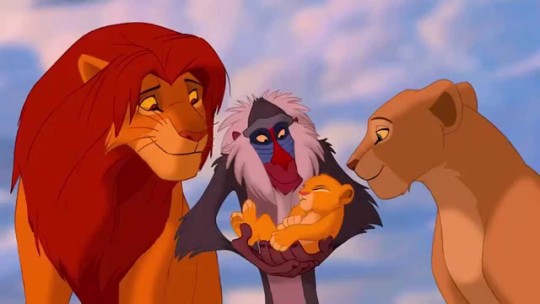
I don’t want to lambast Disney harder than I need to for this problem, which I’d characterise less as a moral failing and more as a creative one. I don’t think they’re doing it entirely consciously; more likely, it’s an unfortunate consequence of their unquestioning internalisation of the fairy tale template, which almost always depicts the act of finding love as an end goal, rather than a first step. It works on the presumption that a declaration of love is inevitably followed by a stable, monogamous and essentially event-free relationship that results in the production of children - and that the most important function of those children is to grow up and become romantic leads themselves, taking their place in the same cycle. Forget what The Lion King told you about antelopes and grass - this is the real Disney “Circle of Life”, and it’s so rooted in old-world nuclear family thinking that it probably came across as a quaintly escapist fantasy even to some of those watching Snow White back in 1937, to say nothing of the Tinder-using Millennials watching Zootopia on Netflix in 2016.
As a consequence, we’re left with a situation where we have basically zero overtly love-centric Disney movies where the lead characters are shown to be nearer to the middle or end of a relationship, or where the evolution of an existing romance is a key element of the film; love is always treated as a final destination, reached when the characters in question have expended their worth as active protagonists. I really can’t think of many examples of Disney showing real interest in the depiction of a growing, established romance - oddly, the best I can come up with are the non-anthropomorphic canine capers Lady and the Tramp and One Hundred and One Dalmatians, which are unusual for getting their male and female leads together as couples relatively early on and spending the rest of the film dealing with the consequences; even then, you could still accuse One Hundred and One Dalmatians of basically pigeonholing Pongo and Perdita into fairly bland “parent” roles after the prologue. “Happily ever after” is a comforting-sounding thought until you realise that it’s basically being used interchangeably with “and nothing else ever happened to these characters that's worth knowing about”, which is a reductive and fairly depressing attitude when you boil it down.
Of course, part of the reason we never see the continued stories of any Disney couples is because of the studio’s historic resistance to sequels; I’m not going to fault their commitment to original stories, but I’d also be happier to dish out praise if they weren’t using all of those clean slates to rehash the same damn boy-meets-girl trope ad nauseam. Besides, it’s not as though Disney’s half-hearted dalliances with sequels have produced anything more progressive in this respect. It’s sort of cheating to count the largely awful direct-to-video sequels of the 1990s and early 2000s in this kind of analysis, as they’re not really part of the official Disney canon, but it feels worthwhile to do so when these movies were founded - and usually actively doubled down - on problems established in the main body of work. Pretty much confirming their reductive implied meaning of “happily ever after”, we got a huge mass of dreck like The Lion King II: Simba’s Pride, The Little Mermaid II: Return to the Sea and Lady and the Tramp II: Scamp’s Adventure, which made a habit of shuffling their former lead couples - now blandly loved-up - off to the sidelines to fill the static roles of “mummy and daddy”, allowing their Xeroxed children to take centre stage, often to star in predictable first-flush-of-romance stories of their own. Not all of the DTV sequels followed this approach, but enough of them did to create a damning trend, and the fact that more movies following the same template - including a ghastly-sounding sequel to The Aristocats - were in the works when John Lasseter shut down that production line makes me doubly glad that he did.
We’re all aware of Disney’s vast cultural influence, so I don’t really need to spell out the negative impact of telling generations of children that marriage is the death knell for all their adventures; still, I’m more convinced that it’s a consequence of unthinking adherence to a formula, rather than a deliberately regressive statement. Maybe Disney and their beancounters believe that dealing with the broader realities of a relationship is too humdrum, too unromantic or too adult for their intended family audience to connect with, but I’d beg to differ: much as I’m generally ambivalent to DreamWorks’ Shrek series, those films make an honest - if sitcom-esque - attempt to explore Shrek’s evolving long-term relationship with his wife Fiona with a semblance of real-world complexity and progression, and it did so without alienating any kids or hurting its commercial prospects. Hell, even Blue Sky’s dopey Ice Age franchise gives its characters more long-term romantic development than anything Disney have ever attempted in their movies, and that’s saying nothing of the sophisticated presentation of relationship issues in Up and The Incredibles, achieved by a Pixar team who don’t share their parent company’s adolescent fixation on courtship, making it easier for them to reach for genuine maturity.
THE ZOOTOPIA DILEMMA
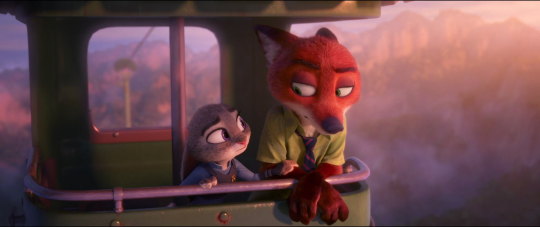
It’s this sort of cultural baggage and weighted implications that have ended up putting the makers of Zootopia in such a difficult position when it comes to managing audience expectations surrounding a sequel. As I’ve said, Zootopia is an incredibly uncommon Disney films in a lot of respects, and one of its most unique qualities is that it centres on a male and female character bonding over the course of an adventure, yet doesn’t overtly delve into the issue of romance at all. Given how many Disney movies go out of their way to jam courtship subplots into the margins of movies that really aren’t about male/female relationships in any sense (The Fox and the Hound, The Lion King and Mulan all spring to mind as examples), it stands out as an even more extreme outlier. In a less franchise-minded era, it probably would’ve been allowed to remain that way, but that’s not how things work in 2016, meaning Nick and Judy’s relationship - a deep emotional connection with a flirtatious chemistry - isn’t seen as an acceptably unconventional conclusion, but as an open-ended question in need of an answer.
Of course, today’s media-savvy Walt Disney Company will be aware that any answer they give will end up being incredibly loaded. Even Rich Moore - who’s been gleefully enthusiastic in encouraging fans to speculate about Nick and Judy’s status since the film came out - seemed cautious about the prospect of actually addressing the question definitively, saying:
“We will have to take on the question, what is Nick and Judy’s relationship like? And somebody’s going to be disappointed. It will either be romantic, or it will stay a friendship, and those who ship them are going to go crazy, and those who just want them to be friends will say, ‘Why did you make it a romance?’ So we need to gird ourselves for that.”
Whether they’re explicitly aware of it or not, Moore and Howard have essentially been pincered by two opposing reactions to the monolithic nature of Disney’s storytelling formula. On one side, you have a legion of loyal Disney fans who have bought wholeheartedly into everything the studio has ever taught them to expect from a love story, and therefore see Nick and Judy’s status at the end of Zootopia - close enough to use the L-word, but not in an overtly romantic sense - as a frustratingly incomplete version of something they’re happily familiar with, which needs to be taken to its natural conclusion of kissing, marriage and babies. On the other hand, you have an equally vocal contingent of audience members who have grown disillusioned with Disney’s romantic conventions due to their predictability and reinforcement of essentialist gender roles, and have no confidence in a Zootopia sequel that pivoted in this direction doing anything to change that; as such, they’d regard the transformation of a mould-breaking story of platonic love into just another happily-ever-after as a regressive betrayal. It’s easy to see how both sides have reached their points of view; it’s less easy to figure out exactly how the directors might address one without alienating the other.
BROADENING THE DEFINITION OF A DISNEY LOVE STORY

Howard, Moore and everyone else involved in the conversation about Zootopia’s franchise prospects will be spending a lot of time mulling this conundrum over, but really it’s something the whole studio ought to be considering, because it’s clearly a company-wide issue. Disney are stuck in a situation where their definition of a love story has become set in stone, outdated and harmfully omnipresent, meaning a growing percentage of viewers now sees it as an oppressive, crumbling edifice that needs to be torn down. Disney, though, are unlikely to stop being a bunch of soppy old romantics any time soon, and - outliers like Zootopia aside - are probably not going to want to stop making movies with love and romance as key story components. The answer, therefore, is to start diversifying the definition of a Disney love story so they can keep making these kinds of films without the audience feeling like they’re being force-fed the same narrowly-focused formula over and over again.
To be fair to the Mouse House, this seems to be something they’ve been trying to do in the past few years. There’s certainly been a shift in approach since the Disney Renaissance era of the 1990s, which leaned heavily on old-school fairy tale romance as part of a conscious embrace of traditional ideals; by contrast, their post-2000 work has been broader in scope, with more movies like Lilo & Stitch, Brother Bear, Meet the Robinsons, Bolt and Big Hero 6 providing a familial perspective on the theme of love, without a reliance on courtship subplots as the be-all and end-all. At the same time, even their more conventionally romantic movies like The Princess and the Frog and Tangled have taken impressive strides towards greater emotional and intellectual shading in their central relationships, creating organic chemistry between three-dimensional characters without anyone seeming like they only exist to be “the boyfriend” or “the girlfriend”.
As in so many other respects, though, it’s the gargantuan mega-blockbuster Frozen that gives the clearest indication of how Disney’s ideas are evolving. Part of the reason Jennifer Lee and Chris Buck’s movie became such a global phenomenon was its willingness to deconstruct some of the oldest fairy tale cliches, including an ostentatious critique of the genre’s traditional fixation on male/female romance as the ultimate form of “true love” and a refreshingly atypical celebration of non-romantic sisterly bonds instead. This revisionist approach - coupled with the strong and widely-acknowledged LGBT acceptance overtones of snow queen Elsa’s character arc - have made the Frozen franchise the current poster child for diversified Disney storytelling, and the planned sequel gives them an opportunity to build on this further; to take just one example, the burgeoning relationship between the lead couple Anna and Kristoff offers a chance to show how a fairy tale romance actually functions past the point of “happily ever after”, which would be something of a first for the studio. Nevertheless, while Frozen is definitely a step in the right direction, there’s still a sense that its status as a revisionist fairy tale is as limiting as it is liberating; as much as it critiques the stereotypes of the format, it’s still very much defined by them. As such, a need remains for an entirely new type of Disney love story that doesn’t have to spend all of its time and energy deconstructing old conventions, and can instead move away from them entirely.
THE ARTISTIC AND BROADER SOCIOPOLITICAL RAMIFICATIONS OF HAVING THE FOX AND THE RABBIT MAKE OUT
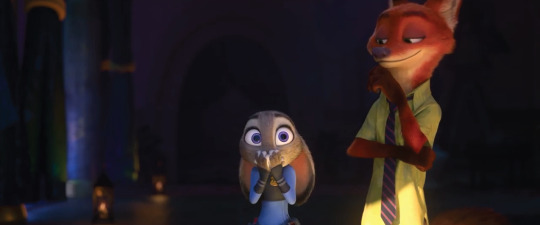
Which brings me neatly back to Zootopia, Nick Wilde and Judy Hopps. Now, I’m not completely falling in with the online shippers here; a romance storyline certainly isn’t something that Zootopia *needs* to explore, nor would I be painfully disappointed if the filmmakers went in a different direction with the characters in a hypothetical sequel. Nevertheless, it’s a concept that I find intriguing, because if there’s one modern brand that provides a better springboard than any other to offer a genuinely new take on the Disney love story, it’s Zootopia.
Clearly, formula and rigid convention are very much the enemy in this current battle to modernise Disney romances, and Zootopia has already demonstrated that it’s well-equipped for that fight. Maybe it’s a stretch to call Howard and Moore’s movie genuinely subversive, but at very least it’s an unconventional triumph that really stood out from the rest of the field of mainstream children’s animation. It dared to tackle challenging topics like social justice and systemic prejudice, amid a sea of play-it-safe self-empowerment fables; it was a rare Disney film that traded non-specific timelessness for a sharp dissection of the sociopolitical state of the world today; and it was a female-led animated movie whose heroine wasn’t fighting for love or family loyalty, but for her career, personal convictions and moral growth. I can see why viewers who responded to that wouldn’t want to see that story and those characters forced into an outdated template, but based on how successful Zootopia has been in breaking moulds so far, who’s to say it couldn’t break another one?
Part of the reason why I’d be optimistic that a Zootopia love story would feel different from the conventional ballad-driven happily-ever-after model is because that kind of escapist fantasy simply wouldn’t fit into the world the original movie created. I’ve always felt that Frozen’s deconstruction of fairy tale romance came off as half-hearted due to that film taking place in the exact same sort of exaggerated Broadway-tinged hyperreality, where amplified emotion remains the primary currency, as any other Disney movie; Anna’s love-at-first-sight infatuation with the two-faced Prince Hans might be played for satire, but when it comes to presenting her genuine relationship with Kristoff, it’s still told as a story of dashing heroes and curse-breaking acts of true love, because that remains the world those characters live in. By contrast, the setting of Zootopia - despite its anthropomorphic flourishes - isn’t the same kind of abstract storybook reality at all; it’s a recognisable and grounded world of microwave dinners, deadening bureaucracy, institutionalised prejudice and political corruption, where the heroes have to deal with paperwork, office politics and casual racism. Even if Disney approached the writing of a Judy Hopps romance storyline with the intention of following their typical fairy tale formula, I suspect they’d quickly realise it wouldn’t work, and it’d be fascinating to see how they then attempt to strike the right balance between their instinctively sweet-natured romanticism and the kind of social complexity and down-to-earth verisimilitude that specifically defines Zootopia .
This is why I also feel - with the greatest respect, of course - that the many enthusiastic fans who’ve been sending Rich Moore their lovingly-rendered drawings of Nick and Judy’s sun-kissed wedding day and mutant fox/bunny hybrid babies may be missing a trick. If we’re accepting that the greatest value of Zootopia comes from its potential to let Disney explore social issues from a contemporary perspective, then marriage and babies would be just the kind of played-out cliches they should be keenest to avoid. Seeing Disney protagonists getting married wouldn’t be particularly novel at all; watching them navigate the perils of urban living, balance their personal and professional responsibilities, and come to terms with the gap between ambitions and pragmatic reality certainly would. There’s also the significant scope an evolving predator/prey romance would give the writers to create parallels with interracial relationships, potentially providing a natural way to further explore and deepen Zootopia’s core themes of prejudice, social stigmatisation, the plight of minority groups and the different ways that people pigeonhole each other. It’s a potentially rich cocktail of ideas that are fundamentally different in tone and content from any previous Disney film, while shifting the focus away from the age-old “will they/won’t they?” dynamic to tell a love story that actually starts with “I love you”, rather than ending with it. Heck, just this last aspect on its own would go a long way towards expanding the definition of a Disney love story to more accurately reflect the totality of what the experience of love means in the 21st century, and that’s got to be a good thing.
For now, I’m happy to file these thoughts away under the category of idle speculation; for all this talk, there isn’t even a confirmed Zootopia sequel to speak of, and I’m not going to pretend I have any right or wrong answers about the hypothetical plot of a non-existent film. Still, Howard and Moore’s interview comments show that those inside Disney are aware this debate is happening, so it’s my hope that the broader questions it raises about Disney love stories don’t pass them by, regardless of whether Zoo2pia happens or not. I’ve never really bought into the idea of Disney being some kind of malign all-consuming force in world culture, but there’s no doubt that their films do play a disproportionately huge role in shaping young people’s baseline understanding of certain issues - and when it comes to love, they’re not even telling half the story. Whether Zootopia is or isn’t the right vehicle for tackling this problem remains up to the directors and the studio, but given how effectively their movie called out regressive old ways of thinking, there’d be something apt about Disney using Nick and Judy’s further adventures to reinvigorate one of their most tired storytelling tropes. If they could do that successfully, it’d feel more satisfying than a thousand identikit happily-ever-afters and fairy tale weddings ever could.
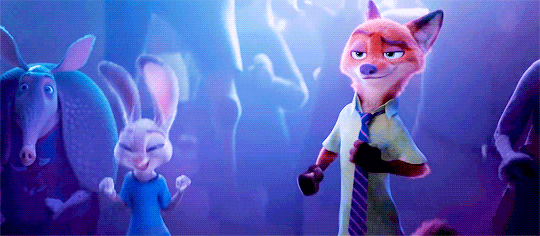
#Zootopia#zootropolis#zootopia 2#Disney#Walt Disney Animation Studios#long post#film analysis#movie analysis#romance#fairy tale#Nick Wilde#judy hopps#nick x judy#wilde hopps#wildehopps#shipping#rich moore#Byron Howard#Sequel#frozen#frozen 2
133 notes
·
View notes
Text
Monsters University > Finding Dory
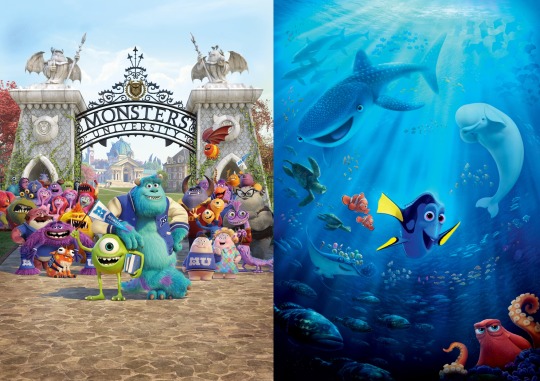
The year is 2016, and the Era of Pixar Sequels - formerly a hazy prospect on the horizon - is very much in full swing. There was a time when we all thought of sequels as antithetical to the studio’s whole identity, with only one film in Pixar’s first ten - the Disney-requested Toy Story 2, an unlikely triumph bashed together in trying circumstances - being a non-original property, but the tide has turned since then, with seven of its next 11 being sequels or prequels. It’s a pretty drastic shift in approach, and one that’s been spoken about in suspicious tones by many - including myself! Nevertheless, those who always kept the faith in Brand Pixar are likely to be feeling pretty vindicated at the moment, thanks to the tremendous response to Finding Dory, which has been just the tonic the studio needed after The Good Dinosaur’s commercial washout and the biggest success story of their patchy post-Toy Story 3 period.
Riding a tidal wave of Millennial nostalgia into US cinemas, the fishy sequel scored the biggest ever opening weekend for an animated film in June and is now comfortably the top-grossing animation of all time in America, while its global total is flirting with the magic $1 billion mark. It’s also proven a critical favourite, earning a 94% score on Rotten Tomatoes and a 77 on Metacritic - not quite the same level of rave earned by acknowledged masterpieces like Inside Out or WALL-E, but a definite step up from the collective shrug The Good Dinosaur received - and also a tier above the lukewarm reception afforded to 2013’s Monsters University, their previous non-original movie, which earned polite notices but was generally perceived as a bit of a lesser effort. Coming so soon after the legitimately awful Cars 2, Dan Scanlon’s unasked-for Monsters Inc prequel was a lightning rod for a lot of the worries people had about Pixar’s new sequel habit three years ago; while it performed well commercially, it’s never been talked about with much love, either at the time or in the years since.
Finding Dory’s critical and financial success will help change the narrative around Pixar sequels to a certain degree, helping fans to look forward to Toy Story 4, The Incredibles 2 and hell, maybe even Cars 3 with a bit more optimism. However, the pleasant glow cast by this reassuring, crowdpleasing hit also does a good job of retrospectively illuminating the finer points of Monsters University, revealing it to be a far better and braver film than it have first appeared under the harsh, punishing spotlight that Cars 2 was shining on it. Mike and Sulley’s second big-screen outing was a tough sell from a creative point of view, with a premise that felt less organic and more forced than this summer’s Finding Nemo sequel, but dig deeper and you’ll find a work of laudable thematic ambition that adapts its material with more coherence and a lot more imagination than Dory, to the point where I’d rank it as a better piece of work overall, even if its appeal is less immediate. When it came out, Monsters University was microanalysed as a manifesto for Pixar’s entire creative future, and that no longer feels like a proportionate, reasonable or relevant way to look at it; with the benefit of some distance and a useful comparison point in Finding Dory, I do hope more people might see this apparently shallow college comedy had a lot more going on under the hood than it got credit for.
SAME CHALLENGES, DIFFERENT SOLUTIONS
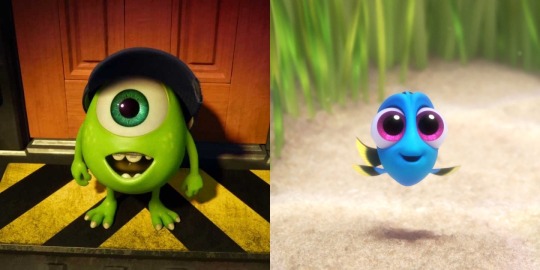
In a lot of ways, Monsters University and Finding Dory feel like siblings, in that they’re both fundamentally devised as solutions to the same problem. Neither Finding Nemo nor Monsters Inc were designed to lead into a sequel, with both movies telling stories that didn’t exactly call for continuation; as such, neither of their follow-ups seem like they were made with a sense of creative necessity being the main driving factor. You don’t have to take my word for it: in the case of Finding Dory at least, director Andrew Stanton has been clear about the Nemo sequel being something Disney pushed for, rather than just emerging from the ether as a flash of inspiration.
Of course, this kind of origin doesn’t have to doom the movie by any means, but it does pose the challenge of having to take a story with self-contained character journeys and finding new layers to explore, unearthing fresh but relevant themes that the first movie didn’t touch upon, or recontextualising the characters to put them in new scenarios that will showcase unseen sides of their personalities. Any follow-ups to Finding Nemo and Monsters Inc were always going to have to solve this conundrum; what’s fascinating is the contrastingly different answers Stanton and Scanlon came up with for their respective films.
In the case of Finding Dory, Stanton chose to deep-dive into the underlying character psychology of Ellen DeGeneres’ eponymous amnesiac fish, finding a new aspect of her personality that went unresolved in part 1, and then planted that idea within a story structure that essentially mirrors the original movie’s journey structure; these remixed character ingredients helped to evolve the familiar concept in a new direction that feels very much like the original story, but with distinct new wrinkles. Scanlon’s Monsters Inc prequel, on the other hand, is a much more transformative work, one that reimagines Billy Crystal’s wisecracking Mike and John Goodman’s gentle giant Sulley in a recognisable but very different point in their lives; it removes them entirely from the familiar setting and dynamics of the first movie, allowing them to be used to power a whole new style of story with a theme, tone and message entirely separate from its predecessor. To use a left-field James Cameron analogy - because why the hell not? - if Dory’s rhyming narrative approach is more characteristic of the Terminator 2 style of sequel writing, then Monsters University’s pitch is closer to the genre-switching reinvention of Aliens. This isn’t to say one approach is inherently better or worse than another; as ever, it’s all a matter of execution, and in this case I’d argue that Monsters University is the bolder, richer film that complements its predecessor more meaningfully, even if it ends up missing out on some of the comforting familiarity on which Dory was able to capitalise to such great emotional and financial success.
FINDING DORY: A NEW PERSPECTIVE ON A FAMILIAR STORY
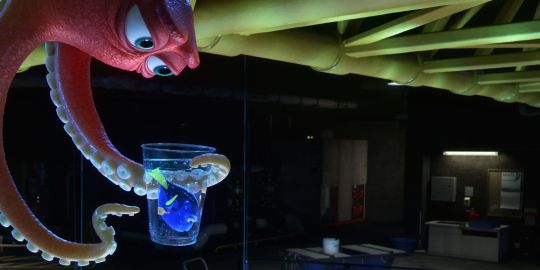
None of this is to say Finding Dory isn’t without its own considerable merits. On the contrary, it’s genuinely impressive how well it does in tapping into undiscovered reservoirs of character and story potential buried within Finding Nemo, which always seemed like one of the most complete and fully contained Pixar stories. The geographic scale of the 2003 film’s journey may have been huge, but the stakes were some of the most intimate and personal that Pixar ever dealt with: one father’s journey to rescue, reconnect with and accept the capabilities of his physically disabled son, while letting go of the fear inside himself. It’s a beautifully clean and simple arc, and there didn’t seem to be anything else to say about it; therefore, when it was announced that the sequel would focus instead on Dory - the first movie’s charming but essentially two-dimensional comedy relief character - it set a lot of Cars 2-shaped alarm bells ringing, raising concerns that Pixar might once again be veering away from the original film’s clear emotional throughline in favour of shallow hijinks centred around a single-joke sidekick.
Fortunately, Dory proves to be a character of infinitely greater depth than Cars 2’s tedious hillbilly protagonist Mater, and the choice vindicates Stanton’s view that Finding Nemo left a wealth of compelling emotional growth for Dory on the table. While it’s certainly true that her cheerful obliviousness and forgetful nature were played mainly for laughs, she has moments of great pathos in that first movie, hinting at the lonely life she’s led and the degree to which her mental handicap must have hindered her over the years. Crucially, it’s not something that’s ever specifically resolved, either: Marlin and Nemo both learn something from her optimistic outlook, but beyond finding a home and family with them, her troubled relationship with her past and her own unreliable mind doesn’t receive any specific conclusion. Ultimately, she’s a supporting character in Finding Nemo, so that lack of resolution doesn’t harm the story, but in retrospect it’s easy to see how Stanton might reexamine the character’s arc and see an organic jumping-off point for a follow-up; much moreso than Lasseter’s bizarre idea that a farting redneck tow truck would make a good lead for a spy movie, at any rate.
With a lovable but tragic new heroine swapped into the main role, Finding Dory is able to broadly retrace the steps of Finding Nemo’s journey of self-discovery, hitting similar beats about learning to accept the virtues and flaws of one’s own self and those of others, but in a way that avoids feeling like a bare retread due to the different flavour Dory herself brings to the story. In particular, the switch from a physically handicapped title character to one with a mental disability allows Pixar to add real texture to the series’ core message of understanding, while keeping up the great work last year’s triumphant Inside Out did in bringing attention to mental health issues. Even if the continuation of the story never feels quite as organic as, say, the Toy Story trilogy - where each new instalment felt essential and cumulatively enriched the central themes with each addition - Finding Dory still feels like a more natural progression than I thought possible, and a worthy companion piece to an iconic film.
MONSTERS UNIVERSITY: STRIKING OFF ON A NEW PATH
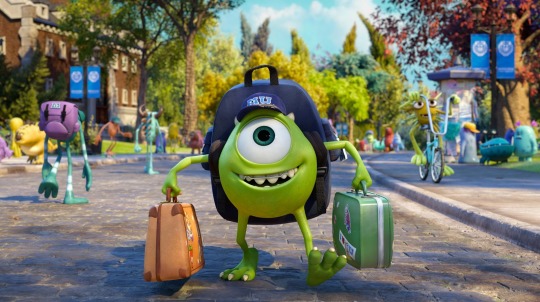
Still, if Finding Dory didn’t immediately stand out as an appealing prospect, that’s nothing compared to the uphill battle of perceptions that Monsters University had to fight; in fact, I’m still not convinced it’s won that battle, even now. The original Monsters Inc is one of Pixar’s most popular efforts, yet also one of the simplest; there are a few broad ideas in there about how love changes a person’s priorities and how compassion can triumph over fear, but by and large it doesn’t really reach for any grand intellectual themes, relying instead on the crackling chemistry of the Goodman/Crystal double act and the sweetness and sincerity of its emotions. Theoretically, this could have made a follow-up an easier sell than an extension of an open-and-shut story like Finding Nemo, but I can’t think of many people who genuinely thought the idea of a college comedy telling the narratively redundant story of Mike and Sulley’s first meeting was a good one, especially so soon after the Cars series had faceplanted in its pivot from small-town slice-of-life drama to goofy spy movie pastiche.
As it turned out, the feeling that Monsters University would be a fundamentally different movie from Monsters Inc were well-founded, but the final result was far from the perfunctory, disconnected experience that many were anticipating. It’s certainly true that Scanlon’s film is surprisingly uninterested in repeating the beats of its predecessor, not even for the purpose of flipping them around and recontextualising them as Finding Dory does, to the point that it barely touches on the thematic foundations and conflicts of Monsters Inc at all. What was surprising is what a refreshing approach this turned out to be, especially given that prequels are so often stiflingly beholden to their predecessors, fixating on needlessly explaining character backgrounds (rarely as interesting an idea as writers seem to think) or repeating the same story on a smaller scale. Instead, the writers of Monsters University take the core elements of Mike and Sulley’s characters - Mike’s contented company-man optimism, Sulley’s easygoing self-confidence - and imagines an entirely new storyline, setting and thematic journey that allows them to deconstruct and rebuild those personalities, rather than pointlessly striving to conform to Monsters Inc’s ill-suited template.
The result is a rare prequel that feels self-sufficient and purpose-built to explore a wealth of fresh new ideas, dealing with heady stuff about second chances, the difference between innate talent and acquired ability, and bouncing back from heartbreaking personal failure. Even as its plot meanders away from Monsters Inc’s beaten track, it finds a huge amount of meaning in its journey back to the first movie’s starting point; its characters, meanwhile, retain their souls and fundamental identities even as they’re intelligently rewritten to serve the needs of the new themes. If there’s any sense of disconnect, it’s because Monsters University sometimes adds so much to the original material that it creates inconsistencies - particularly in the case of Mike, whose flippant, comical presence in Monsters Inc seems jarring compared to the emotional depth his younger self demonstrates. Still, that’s mostly a testament to how well Scanlon’s movie tells its story, and is therefore about as mild a “criticism” as you could imagine.
BIGGER RISK, BIGGER REWARD

Of course, this isn’t to say Monsters University is a flawlessly executed movie; certainly, it leans a bit harder than it needs to on generic college movie antics to drive the action, and it also crams in a lot of plot for its 104-minute runtime, resulting in a few rushed moments and an odd structure that requires a 30-minute preamble before getting to the main “Scare Games” storyline. But it’s also a fantastic working demonstration of what can be accomplished by stepping outside of a formulaic comfort zone to go for something a little more risky, and the relative conservatism of Finding Dory only accentuates that. Andrew Stanton made a technically marvellous film filled with charm, good humour and creative design, which sticks the landing on its big moments of emotional payoff - but it also never totally stops feeling like it exists purely as a reaction to the first movie rather than something that truly stands alone, and an elaboration on a theme that had already been articulated to everyone’s satisfaction. For sure, it’s a very smart answer to the question of how to make a sequel to Finding Nemo, but it never quite explains why the question needed to be asked in the first place.
A follow-up to Monsters Inc could have felt very much the same, but by going off-piste, Monsters University becomes something very uncommon: a franchise movie with a genuinely fresh identity and an opportunity to say something original and subversive. This is perhaps the single most significant area in which Monsters University exceeds Finding Dory: instead of seeming content to simply justify taking up the audience’s time, Scanlon’s film is driven by a real desire to give them something challenging to think about. I feel as though this aspect of the movie got missed by a lot of critics in 2013, partly because of preconceptions about its concept, and partly because the broad brush strokes of the coming-of-age storyline seem fairly prosaic on a basic level. I’m sure you feel you know the drill: two characters from opposite backgrounds and worldviews are thrown into a situation where they have to band together, help each other overcome their flaws and score an unlikely triumph that defines who they’ll go on to be. In the case of John Goodman’s Sulley, this plays out basically as you’d expect it, with the talented but arrogant prodigy learning the value of humility and hard work en route to his dream career as a Monsters Inc scarer - all of which would be par for the course if Sulley was the main character of Monsters University. Instead, the focus is shifted to Billy Crystal’s Mike and his lifelong dream of also becoming a top scarer - which ends in crushing, heartbreaking failure, despite all of his struggles and efforts.
This stands out as a pretty uncommon choice for the main hero’s journey in a children’s film, and is particularly unheard of in a Disney-branded movie - which, as Dan Scanlon has stated, was very much an intentional choice, born partly from the desire to make a film that stood entirely apart from Monsters Inc. As creative as the premise and world design of the 2001 film is, the plot can broadly be said to fit the basic Disney/Pixar template of a hero making a brave stand against a status quo and changing it through sheer force of will; Monsters University’s approach, which shows what happens when the irresistible force of an innocent dream meets the immovable object of reality, is much rarer, and it’s made all the more impactful by the way the film toys with the audience’s expectations of how these kinds of stories typically play out. At every stage, we’re invited to sympathise and invest in the young Mike’s childhood dream, watching him strive onwards in the face of naysaying and adversity as he puts everything on the line for his one big shot … only to realise in that moment of truth that he doesn’t have the raw ability to make it, and he never will. It’s an unfortunate consequence of the film’s busy third-act storytelling that the full impact of this sucker punch is brushed over a little bit, but the gutsiness of the idea still registers, particularly given how aggressively children’s movies - and Disney films in particular - usually push the message that hard work and a never-say-die attitude can make all your dreams come true. Equally impressive is the way this concept is developed into a nuanced finale that still hits the usual inspirational beats, as Sulley helps Mike get past the death of his lifelong ambition and realise his true path to greatness lies elsewhere - in coaching - which he would never have discovered without first hitting rock bottom and letting go of his assumptions about himself. In a sense, the message mirrors the journey of the movie itself: sometimes, greater success can be found on the road less travelled.
A GREATER SENSE OF PURPOSE
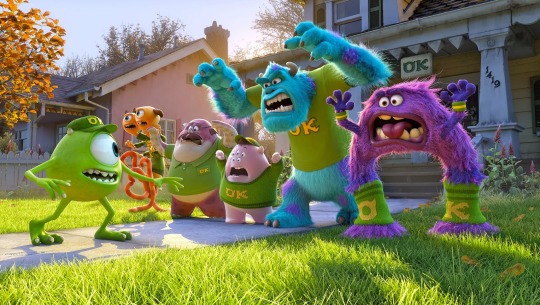
Again, this isn’t to say that Monsters University has inherently greater worth than Finding Dory simply by virtue of being more original; after all, a familiar concept well-executed can be just as meaningful as one that’s more groundbreaking but less accomplished, if not more so. However, that’s not how it shakes out in this case, as it’s the Monsters prequel that seems to gain tangible holistic benefits from having a stronger sense of purpose and originality behind its theme, while Finding Dory seems to struggle to stick to a consistent tone and get all of its various components to work in tandem.
To an extent, this was a trap that any sequel to Finding Nemo was always going to be at risk of falling into, simply because the 2003 movie was one of the most tonally distinct and striking movies to emerge from a major US animation house at the time. Many of Pixar’s preceding movies had featured moments of introspective beauty, but Finding Nemo really was something else, a film that blended intimate emotions with a epic scale of ocean-wide breadth. Unified by a mournful Thomas Newman score, it retained a consistent sense of melancholy wonder that persisted even when the on-screen action dipped into jovial slapstick and capering; Finding Dory, unfortunately, proves less capable in this regard, with a far greater sense of whiplash between its solemn moments and its goofier excesses. Scenes dealing with Dory’s inner struggles and the plight of her long-lost parents hit with the emotional force they require, but the awkward way they sit alongside the sitcom-y slapstick antics of supporting characters such as Destiny the nearsighted whale shark or Bailey the neurotic beluga creates more friction than at any point in Finding Nemo. It’s possible the first movie’s sillier moments were no less flippant than those of its sequel, but the consistent tone that tied everything together has been lost - due in no small part to the odd decision to bypass the evocative deep ocean backdrop in a single scene, with most of the action taking place in a rowdier and much less atmospheric marine park setting.
Still, this failure to maintain a consistent tone is a less troubling problem than the script’s uncharacteristic failings when it comes to writing to theme. Of all the big American studios, Pixar are usually the top dogs on this front, with their characters functioning not only as endearing personalities but also as embodiments of key aspects of a philosophical journey. Finding Dory certainly has a strong thematic throughline in terms of Dory’s journey of self-acceptance, but the supporting cast don’t seem to have that same level of meaning to them; the fact that almost every characters has some form of chronic disability suggests the intention was there to tie them all together thematically, but the execution is patchy. On one end of the spectrum, you have Hank the seven-armed octopus, a likeably gruff presence who nevertheless seems constantly one scene away from delivering a character-defining tragic backstory that never actually comes; on the other, you have Gerald, a gormless sea lion who gets casually victimised for laughs in a way that’s strangely at odds with the film’s inclusive message of universal love. This lack of thematic conviction never derails the film or anything, but it is a persistent, nagging issue that comes to a head with an absurd car chase finale that’s entertaining to watch, but really doesn’t feel like the logical culmination of an emotional journey. Finding Nemo’s fishing boat finale was a stormy, dramatic battle of wills that challenged our heroes to demonstrate the lessons they’ve learned in a life-or-death struggle; Finding Dory’s ending is a wacky action sequence with slow-motion sight gags and an octopus driving a truck. It’s entertaining enough, but it feels lifted out of a much goofier film - in fact, it’s very similar to the finale of Illumination’s The Secret of Life of Pets, which was much better suited to having a farcical Looney Tunes ending like this - and it adds to a broader sense that this wasn’t actually a story that mattered very much.
Monsters University, as mentioned, has a few moments of wonky pacing that result in certain emotional moments rushing past a little faster than they should, but even at its most hurried moments, it has a clear sense of what it wants to be that Finding Dory can’t match. True, its supporting cast are basically played as broadly as Finding Dory’s various marine misfits, but they’re written to embody the film’s themes in a much more comprehensive way; in a film about second chances, true callings and dismantling preconceptions, the various college movie archetypes (the stern dean, the outcast nerds, the privileged elite fraternity) naturally fall into roles that challenge or support Mike’s personal journey in a way that’s organic and obvious without feeling overly predictable, thanks to the unconventional way the story resolves itself.
If there’s one single point that really illustrates the discrepancy between the two movies, though, it’s the way they handle their co-stars, Sulley and Marlin. Having taken the lead roles in Monsters Inc and Finding Nemo, respectively, both main heroes find themselves demoted to supporting roles for the sequels - but it’s only Monsters University that’s really able to make the character’s return feel necessary. Finding Dory’s inability to give Marlin (or Nemo, the former title character) anything to actually do this time around is one of its most serious problems, with Albert Brooks’ pessimistic clownfish ending up a reactive and fairly grating personality, hogging screentime while showing zero growth or having no impact on the heart of the story. This seems worse when compared and contrasted to Monsters University’s thoughtful reworking of Sulley as an integral support role, which actually stands out as one of the best examples I’ve seen of how to refresh a character by giving them a new context. His introductory scene - in which he swaggers late into a university lecture, radiating arrogance and entitlement, embodying everything we’re rooting for the diligent, humble Mike to fight against - is a moment of understated genius, temporarily turning the audience against an iconic, beloved character simply through intelligent use of theme, and making his subsequent transition from an antagonist into a cuddly best friend into a genuinely meaningful journey. This is the difference between the two movies in a nutshell: Finding Dory, for all its craftsmanship and moving interludes, opts for the perfunctory solution that apes its predecessor to lesser effect, whereas Monsters University takes its pre-existing components and tries to build something genuinely new out of them.
WHAT WILL PIXAR LEARN FROM THIS?
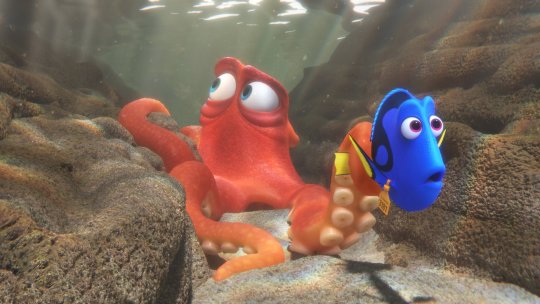
Despite preferring Monsters University to Finding Dory by a wide margin, I don’t hold any ill-will at all towards the newer movie, nor do I begrudge it any of its stellar success. It’s always welcome when a well-made movie finds a big audience, and it’s good to see Disney - which in Captain America: Civil War, Zootopia, The Jungle Book and Finding Dory has now produced the four highest-grossing films of the year - being commercially rewarded for its commitment to high-quality mass-market filmmaking.
As a Pixar fan, though, I’ll be most curious to see what the studio learns from the varied reception its franchise movies have received so far. It’s widely known that they’re the kinds of filmmakers who do read and listen to reviews, so it won’t have gone unnoticed that their more iterative sequels (Toy Story 2 and 3, and now Finding Dory) - have been among their biggest critical and commercial successes, while the more transformative spinoffs - Cars 2 and Monsters University - have received more muted responses. You have to wonder how this discrepancy might influence their thinking as they approach the writing of Cars 3, Toy Story 4 and The Incredibles 2; indeed, it’s already been confirmed that Cars 3 will be a deliberate return to the earthy tone and themes of the first Cars, following the widespread pushback to the second movie’s genre switch. Naturally, I’m as receptive as anyone to the idea of a Cars sequel actually being tolerable, but at the same time I can’t help wonder if it’s simply an isolated case of sensible franchise course-correction, or a symptom of a wider move towards more conservative and less imaginative sequels. Of course, it’s too early to actually say whether that’s the case - certainly, the fact that Toy Story 4 is being pitched as a “romantic comedy” suggests the studio’s love of genre-hopping isn’t dead - but it would be massively disappointing if the relative underappreciation of Monsters University meant we never got another Pixar sequel like it.
Look, I realise the inherent absurdity on crying tears over the alleged misfortunes of a movie that grossed close to $750 million worldwide, but Monsters University is about as close as the Oscar-laden Pixar have gotten to making a film that you could realistically call underrated, and I strongly suspect that its franchise trappings and unprepossessing concept stopped a lot of people from digging deeper into it and finding its moments of courage and quality, which deserve to be spoken about alongside the studio’s very best work. Finding Dory may have proven a bigger material success, but as far as its cultural impact goes, I’ll be happy if its ultimate legacy is to decontaminate the concept of Pixar sequels enough that more people go back and give Monsters University another go. Unlike Finding Dory, it may not have been the film people wanted or expected at the time - but as the young Mike Wazowski learned, it’s in stepping outside your preconceived wants and expectations that some of your greatest successes can be found.
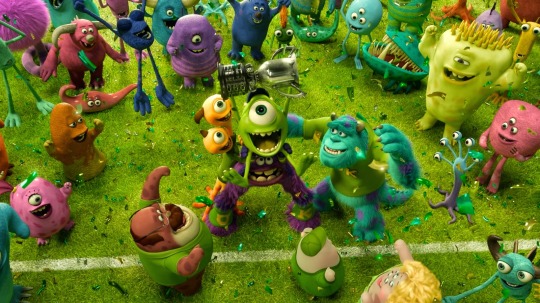
#monsters university#monsters inc#finding nemo#finding dory#marlin#dory#baby dory#nemo#mike wazowski#james p sullivan#Pixar#Disney Pixar#Disney#film#film analysis#movies#movie critique#movie analysis#long post
17 notes
·
View notes
Text
Illumination Domination: can the makers of Minions become bigger than Disney?

These days, you don’t have to be a bona fide box office pundit to be at least peripherally aware of the commercial buzz accompanying big movie releases. Once upon a time, box office numbers were basically only really discussed by accountants and Hollywood trade journals unless record-smashing totals were in play, but the internet has changed all that, and these days it’s much harder to go to the movies without knowing at least something Batman v Superman’s box office battle with Captain America: Civil War, Deadpool’s breakout success, Zootopia’s billion-dollar run, Alice Through the Looking Glass’s crashing failure or Ghostbusters’ fight to drown its naysayers in sweet profits. Still, not everything gets the same level of attention, and if there’s one recent story that doesn’t seem to have gotten the recognition it probably warrants, it’s the frankly stunning performance of The Secret Life of Pets, the latest movie from Illumination Entertainment.
Illumination, of course, are the studio behind The Lorax, the Despicable Me movies and the ubiquitous Minions brand. Almost everyone will recognise their films; some will be aware of the studio’s name, though I suspect it’s not as many as you might expect. Despite their recent successes, the Illumination marque still doesn’t seem to carry a lot of instant recognition; certainly not on the same level as Disney or Pixar, and arguably not to the degree DreamWorks enjoyed in their Shrek-powered prime years, during which they quickly established a public identity as the industry’s young, hip upstart challenger. By contrast, Illumination’s rise to prestige has been a lot more modest, with the distinct characteristics of their work infiltrating the general consciousness more gradually and subtly, seemingly without anyone really noticing. It’s why the studio was able to put out The Secret Life of Pets in the middle of a busy summer and storm to an astounding $104.3 million US opening weekend - comfortably the biggest opening ever for a wholly original film - on the strength of its pedigree and marketing alone, and still garner relatively few disbelieving headlines about what a significant milestone that actually is.
Well, I’m calling it, even if nobody else is: Pets’ performance marks out Illumination as one of the genuine powerhouse brands in Hollywood - the first in history to deliver a $100 million-plus opening without the benefit of any pre-existing name recognition - and absolutely confirms the studio’s position as Disney and Pixar’s biggest contemporary rival, handily outstripping the more established likes of DreamWorks, Blue Sky and Sony. In only six years since the release of its debut feature, it’s carved out a distinct niche and laid down a strong identity that audiences have come to recognise and trust, even if they don’t actually know the Illumination name. Now, the company are poised for even more significant growth in the coming years, so it’s high time we really start consciously getting to grips with the good, the bad and the ugly of these billion-dollar underdogs, because they’re going to be making more noise than ever before very soon.
HOW THE HELL DID THIS HAPPEN?

Again, it’s worth marvelling at just how remarkably rapid Illumination’s ascent has been. This is a company that was only founded in 2007, when competition in mainstream US animation was at its fiercest; it went on to score a surprisingly huge hit with its first film, Despicable Me, in 2010, enduring a couple of critical and/or commercial hiccups with 2011’s Hop and 2012’s The Lorax before coming within touching distance of billion-dollar success with Despicable Me 2 in 2013, then going one better and handily passing that milestone with 2015’s monster hit Minions. Maybe the billion-dollar mark doesn’t mean as much as it used to for live-action blockbusters, but for animated movies it remains a pretty monumental thing; besides Minions, the only films to pass $1 billion are the Disney-backed Frozen, Toy Story 3 and Zootopia, and no other studio - not even DreamWorks, with the amassed might of its Shrek, Madagascar and Kung Fu Panda franchises - have come close.
There are a few key people at the heart of Illumination’s astounding success - directors Pierre Coffin and Chris Renaud have been involved in almost all of the studio’s films so far, while writers Cinco Paul, Ken Daurio and Brian Lynch have written all six between them - but the individual most closely associated with the studio’s ascent is that of founder Chris Meledandri, a producer whose name gets publicised a lot more than you’d expect for an executive, rather than an actor or director. I remember being struck by the oddness of Meledandri being the second-most prominent name used in the promotion of Despicable Me after headline star Steve Carell - even to the point of Meledandri receiving a spoken name-check in the trailer - but the studio’s trail of triumph since then suggests he’s doing something right. Meledandri spent time with Disney and Fox - producing Cool Runnings for the former, and Ice Age and Alvin and the Chipmunks for the latter - before Universal poached him in 2007 to set up Illumination. As might be expected, the veteran producer brought some sound financial principles with him - to date, none of Illumination’s movies has been budgeted much higher than $75 million, at a time when other animation houses are spending upwards of $150 million or even $200 million on their productions - but he also seems to have some decent creative instincts, as his insightful keynote speech at last year’s Annecy International Animated Film Festival demonstrated.
Whatever the source of the inspiration, the studio’s commitment to efficiently-made, broadly-appealing movies with a distinct voice have reaped substantial rewards during a decade where many of its key rivals have struggled to consistently maintain a confident sense of identity, with the result being that Illumination are now firmly established as the most consistent challengers to the Disney hegemony. The likes of Sony and Blue Sky produce patchy, anonymous work with no particularly consistent identity, so those brand names mean little to audiences; the stock of the once-mighty DreamWorks, meanwhile, has fallen so drastically due to years of bloated, underperforming projects that it’s been sold off to Universal’s parent company Comcast, meaning it’s gone from being one of Illumination’s most indomitable competitors to a downtrodden stepsister in a mere half-decade. The takeover, which was confirmed in June, puts Meledandri in charge of both Illumination and DreamWorks, essentially turning him into the John Lasseter equivalent within Universal’s new animation empire - and seemingly positioning DreamWorks as the less successful support act next to Illumination’s star attraction. Given that Minions more than doubled Kung Fu Panda 3’s worldwide gross on half the budget - and that The Secret Life of Pets made more in the US in a single week than the Panda threequel did across its entire American run - it’s not hard to see why.
CRAFTSMANSHIP, CHARISMA, CHEERFULNESS: WHAT ARE THEY DOING RIGHT?

The significance of The Secret Life of Pets’ gargantuan opening may have passed over the heads of the mainstream press - distracted, perhaps, by the bigger, more eye-catching but also more predictable success of Pixar’s Finding Dory - but you can bet your ass that Hollywood will be taking notice, and probably learning the wrong lessons. Perhaps they’ll start greenlighting more movies about talking animals, or more films featuring babbling marketable sidekicks, while ignoring the real reason why Pets and Minions hit so big - namely, that audiences know implicitly what it means to see an Illumination movie, and they know it’s something they like.
This concept of identity is one I’ve talked about repeatedly, but it’s the real key to the long-term success of any big player in animation, an industry where positive associations with a studio’s name - be it Disney, DreamWorks, Laika or Ghibli - is often more valuable than the fame and success of any individual franchise or character. Studios need to have a strong unifying creative voice behind their work, a set of reliable distinguishing characteristics that audiences will come to know and love, regardless of whether they’re seeing characters they’re familiar with or brand new ones. In this respect, Illumination have set out their stall expertly, taking only a handful of movies to define a recognisable voice, which is perhaps their single most important of their many successes.
The best use of caricature of any modern studio
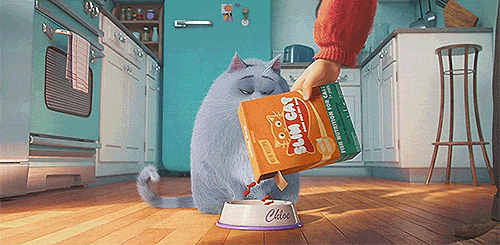
A common criticism of mainstream animation since CGI took over is that there’s a sameness to the aesthetic of each film, regardless of which studio is making it. It’s not a totally fair critique if you take the time to examine the different styles closely, but there’s certainly truth to the idea that most other companies have copied the fundamentals of their style from Pixar’s playbook, the result being that many modern ‘toons share a common approach to stylisation, physics and the specific shorthand used to abbreviate recurrent elements such as the human form.
On this front, Illumination have really been able to distinguish themselves, carving out a distinct approach to the design and movement of their worlds that’s different from what most other studios are doing. Disney and Pixar’s visual approach skews towards picturesque, stylised naturalism; DreamWorks, meanwhile, experiment more with their art styles, but largely follow Disney’s lead in terms of how everything moves. Illumination, on the other hand, have gone in the other direction, fully embracing cartoon logic in a way that owes much more to Dexter’s Laboratory than Snow White and the Seven Dwarves; as a consequence, they’ve become the best caricaturists in the business, taking naturalistic movements and amplifying them to their elastic limit, and creating wonderfully diverse worlds full of gangling or blob-like characters who still somehow read as entirely human. Certainly, they’re not the only company trying to break from the Disney/Pixar template in this regard - Sony have tried something similar with the Cloudy with a Chance of Meatballs movies and Genndy Tartakovsky’s Hotel Transylvania series, but those films are anarchic and abstract enough that Illumination’s wacky-but-grounded style still registers as its own distinct thing. Admittedly, Meledandri’s former charges at Blue Sky are trying to do something similar to Illumination with their ongoing Ice Age movies - particularly in the elastic knockabout Scrat sequences - but compare the reception of Blue Sky’s latest effort to llumination’s, and there’s little doubt who’s doing it better.
Naturally, the biggest testament to the success of Illumination’s approach on this front is the phenomenal success of those ubiquitous Minions. Critics may not have adored the Minions movie, but there’s a reason that audiences stuck with what could have been 90 minutes of meaningless, directionless chattering, and it’s that the studio’s animators rose to the challenge of turning these shapeless yellow Kinder Egg capsules into emotive characters readable enough to near-wordlessly carry one of the most successful movies of all time. The Despicable Me movies, too, are filled with visually diverse characters with that same sense of impeccable caricature (the second movie’s Antonio, who condenses all of the visual cliches of a smouldering Latino heartthrob into the body of an 11-year-old, is a particular highlight), while one of the great joys of The Secret Life of Pets is watching Illumination apply the same skill to animal characters, capturing and amplifying the movements of each species even when their designs have been abstracted into pudgy blobs. And it’s not just characters they’re able to do this with; as their techniques have improved, the studio has shown more willingness to experiment with locations, moving from the largely anonymous locales of the original Despicable Me to the vibrant, stylised depictions of 1960s London and modern New York that lend so much colour to Minions and The Secret Life of Pets, respectively.
Illumination don’t get enough credit for the freshness of their visual approach; even if they’re not pushing forward the technical frontiers of the art form like Disney and Pixar, they’re doing a hell of a job with comparatively minuscule budgets. Frankly, their combination of simple design work and dynamic animation may be one of the reasons why they’re able to keep costs so low to begin with, and that’s to be applauded given how much money DreamWorks have flushed away recently without cultivating a style half as distinctive. Perhaps there’s nothing inherently pioneering about making a “cartoonish cartoon”, but it certainly seems to mean something to audiences, and that - rightly - is all Illumination will care about.
Anarchic but logical storytelling through physical action

Action-driven storytelling is an sorely underrated filmmaking talent, and the films that do it well don’t often get the kudos they deserve. There’s a sniffiness about movies propelled by physicality instead of dialogue, but even if critics don’t always acknowledge the difficulty of making a film this way, audiences can certainly tell the difference, and vote with their wallets when it’s done right.
Illumination are incredibly skilled in this type of filmmaking, and have the box office receipts to prove it. You can point to any number of middling animated movies that string together contrived slapstick sequences or meaningless stretches of busy nonsense to add eventfulness and energy to an otherwise thin story, but that’s not what Illumination generally do. Sure, the Despicable Me and Minions movies thrive on anarchic comedy action setpieces filled with violent pratfalls and outlandish tech, but there’s always a sense of logic and progression to them, and they always drive forward the story being told, with the stakes constantly shifting to put characters on the back foot, or to challenge their abilities in different ways. The world of Despicable Me wouldn’t be half as fun without the delicate balance between their sweet cores and the ramshackle Spy-vs-Spy craziness that surrounds them, while the Minions movie wouldn’t exist at all if the animators weren’t able to use action to advance and characterise mute protagonists without the benefit of intelligible dialogue. The animators’ playful use of space and geography is enhanced further by their industry-leading use of 3D, a visual gimmick that’s underutilised by a lot of animation houses (Pixar’s 3D presentations have, to date, been oddly muted), but form an essential part of the visual texture of Illumination’s movies. Indeed, the end credits gag of Despicable Me - which sees the Minions trying to reach further and further towards the screen through the use of ladders and other comedic props - literally doesn’t make any sense without the third dimension, and it’s a shame that most people watching it at home these days don’t possess the tech to appreciate the craft behind this scene.
Of course, it’s worth pointing out that Illumination don’t always hit home runs in this respect. The Secret Life of Pets, for example, contains many sequences of considerable creativity, but also others that feel frantic for their own sake; The Lorax, meanwhile, bungles this balance completely (I’ll have more to say on that fiasco later). Still, even if it goes wrong, I’m glad there’s at least one company working in the industry who understand that the Disney/Pixar formula of emotion-driven stories of self-actualisation isn’t the only way of doing things, and that there’s a place in the market for some knockabout Looney Tunes mayhem. Even if they’re not the only studio dealing in comedic action, they’re the only ones who’ve been able to launch a billion-dollar brand off that talent, and to score a $100 million US opening weekend simply with the promise of more of the same.
Sincere sweetness over snark
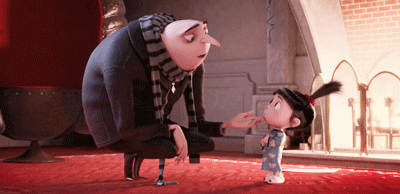
Illumination’s flair for physical comedy is probably their single most saleable asset - as the defining success of their Minions brand has shown - but it’s the underlying innocence and sweet nature of their work that really stops them from simply becoming a like-for-like swap for the faded DreamWorks. The house that Jeffrey Katzenberg built, as I’m sure you’ll remember, established its foothold in the market by putting a focus on hip, cynical snarkiness, rejecting old-school Disney idealism in favour of savvy quips and postmodern gags that were initially refreshing, but quickly became grating through overexposure.
It would have been easy for Illumination to follow suit - particularly given that most mid-tier animation houses adopted that style as their template during the early 2000s - but they’ve largely avoided doing so, instead embracing an intimate, cheerful cutesiness with a flavour of its own. This was one of the most pleasant surprises of their debut Despicable Me in 2010 - the celebrity cast and slapstick-focused marketing certainly suggested something in the DreamWorks vein, which is why the movie’s innocently adorable story of a single father bonding with his adopted daughters was so disarming. Even though subsequent Illumination movies have been busier and more tonally conflicted at times, that same simple sweetness has remained, whether that be Despicable Me 2’s aww-shucks romance, the familial bond between the eponymous stars of Minions or The Secret Life of Pets’ sentimental tribute to the love pet owners have for their animal friends.
That’s not to say that any of these ideas are groundbreaking or unique to Illumination, but there’s something distinct about the simplicity of their approach. Disney, Pixar and DreamWorks all tend to go big when they present emotional themes, reaching for universal truths; Illumination, by contrast, just seem content to warmly depict how nice it is to love and be loved. It’s unquestionably a positive, humanistic instinct that ensures Illumination’s movies are largely free of the kind of grandstanding, smug sarcasm that marred so many of the worst movies of the post-Shrek era; there were points during the 2000s where the whole industry seemed to develop a radioactive aversion to “corniness” (read - sincerity), and it seemed like it would never be OK to make a straightforwardly earnest animated movie ever again. I feel Illumination’s wholesome successes had a part to play in dismantling that attitude, and for performing that vital service to animation, I’m willing enough to forgive the studio a Lorax or two.
BIG HEARTS, NO SMARTS: WHAT ARE THEY DOING WRONG?
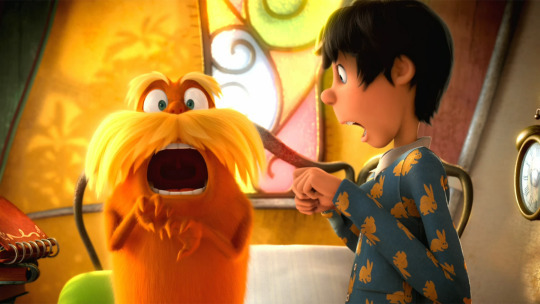
Laying out this identity so clearly has been a hell of a feat for Illumination, but the downside of making such a big, loud impression means that it hasn’t only been their positive qualities on global display. For all their commercial successes, the biggest blemish on their record is the fact they still haven’t made a film that looks likely to go down as a true classic for the ages, a la Snow White and the Seven Dwarves, Toy Story or even Shrek. Six movies into their lifespan, their best-reviewed film remains their debut, Despicable Me, which fell short of classic status in most people’s estimations, and subsequent films haven’t come any closer to that watermark. Despicable Me 2 and The Secret Life of Pets both received polite notices rather than raves; Minions’ reception was mixed at best, despite its record-breaking box receipts; Hop and The Lorax, meanwhile, were regarded with suspicion or outright hostility.
This actually would’ve felt like less of a problem if Illumination’s output had been a little more scattershot and experimental, but because their films have felt so unified in style, it’s already possible to identify recurrent, persistent limitations of their style that are preventing them from bringing proper substance to their movies on a consistent basis. Disney and Pixar’s formative movies were works of genuine creative heft, and even DreamWorks had a legitimate satirical or deconstructionist point to make with its cynical early works; Illumination, by contrast, give off the impression of being content to put together fizzy surface-level entertainment and unwilling to probe any deeper to reach for genuine meaning and purpose. In this respect, the comments made in 2013 by house writers Cinco Paul and Ken Daurio - who’ve penned almost all of Illumination’s movies to date - seem telling, explaining their Mormonism-inspired desire to “write movies that are uplifting, optimistic and for everybody”, while “never wanting them to be preachy”.
Perhaps as a consequence of this, Illumination’s filmography is great at conveying straightforward feel-good emotion, but continually skims past or outright mishandles its opportunities to evoke anything more profound. Their most recent effort, The Secret Life of Pets, has a real problem with this, exacerbated by the fact it cribs so directly from the Toy Story series, which are among the most emotionally mature children’s movies ever made. Whereas the lead characters of Pixar’s flagship trilogy were given pause to contemplate the nature of selfless love, impermanence and mortality through their various adventures, the inner lives of Pets’ animal protagonists come across as small-minded and petty, and the lessons they learn are incredibly basic ones about balancing a desire for attention with an ability to share. The script does actually contain a moment that seems like it’s there to give the material some real heft - shaggy rescue dog Duke’s attempt to reunite with his beloved owner, who is revealed to have died - and to act as a counterpart to Toy Story 2’s heartbreaking “When She Loved Me” abandonment flashback, but in practice the revelation just glides past inconsequentially, almost without comment or reaction from the characters. It’s almost as if the writers got scared by the intensity of the emotion within their grasp and backed away, resulting in a more comfortable, more consistently upbeat and infinitely shallower movie. Even their best film, Despicable Me, is guilty of this to a degree: the relationship between villainous protagonist Gru and the three little girls who win his heart is definitely the most affecting element of any of their movies, but there’s another moment here - the one where Gru allows the girls to be taken back to the orphanage - that, similarly to Pets, feels like a skimmed-over version of a scene that could’ve had a much deeper emotional impact.
Inarguably, though, there’s no film in Illumination’s repertoire that’s ruined more catastrophically by this shallow approach than The Lorax, their 2012 adaptation of the beloved ecological fable by Dr Seuss. Now, I’ll confess to not having actually seen the reviled live-action hybrid movie Hop (and I really don’t want to, honestly), so I’ll limit myself to stating that The Lorax is comfortably the worst of Illumination’s fully-animated efforts, and perhaps the worst thing about it is that it plants the idea that the studio’s reluctance to handle challenging, intelligent material is as much due to a lack of brains as a lack of stomach. Tackling Dr Seuss’ professorial and political approach to children’s literature was always going to be difficult for Illumination’s middlebrow sensibilities, especially since The Lorax is a slim, sombre polemic against the impact of capitalism on the environment, with only the merest glimmer of potential hope at the end of an otherwise bleak story. Any feature-length adaptation of that material would have to expand and probably lighten the material, but Illumination’s cack-handed approach completely buries it in noisy details, charmless new characters and needless framing devices that suffocate the nuance. The strain of stretching a narrative best suited to a brisk 10-minute short into a punishing 90 minutes completely defeats Illumination, and it seems to cause them to lose control of their process entirely, as they start falling into all of the traps they’re usually best at avoiding. Paul and Daurio’s script defaults to an uncharacteristically snarky and pop-culture-oriented style of quippy humour, which plays against their own strengths and feels totally wrong for Dr Seuss; worse still, their flair for organic action direction also falters, resulting in a load of busy, noisy mayhem that does nothing but pad the length and destroy the pacing (a mid-movie river chase and a bewildering sequence with Betty White as a snowboarding granny, in particular, are pure sawdust). Even the animation in The Lorax is stilted and devoid of the usual gusto; the book’s aesthetic is copied closely enough, but the movement is lifeless and bland, stifled by an inability to work out how to make the Seuss and Illumination styles dovetail.

However, it’s the story’s intellectual centre that really ends up getting hollowed out by all this. The original book’s cautionary tale of environmental annihilation at the hands of a thoughtless and ultimately regretful capitalist is unusually challenging for a children’s story, with a broad political scope and a finale that requires young viewers to really question themselves. This kind of soaring ambition is miles outside of Illumination’s comfort zone, and it’s depressing to see them respond by clumsily clipping the story’s wings. Humanising and fleshing out the Once-ler, Seuss’s misguided protagonist, could have been a good starting point for enriching the essential tragedy of The Lorax, but not when that plotline is reduced to an afterthought within an overarching framing story that’s almost entirely of Paul and Daurio’s own creation, and seems to exist solely to rephrase and insultingly simplify Seuss’ intended moral messages. It’s as though they thought audiences wouldn’t be able to stomach the story’s ideas unless they were spoon-fed via a wisecracking kid protagonist with a wacky family and a bland love interest, or a one-dimensional new corporate villain whose cartoonish, gleeful avarice undermines the point the story is trying to make about subtle complacency driving good men to bad actions, and who only seems to be there to serve as a third-act Big Bad in a tacked-on happy ending sequence that totally removes any bite from the original book’s angry satire.
The wide-ranging nature of The Lorax’s creative failures, even in areas where the studio is traditionally strong, may mean it can simply be written off as an uncharacteristic swing-and-a-miss or a bad choice of material; still, it doesn’t do much to dispel the prevailing concern that Illumination’s reluctance to tackle complex material is less a creative choice and more an issue of incapability. Currently, this is an important string missing from the studio’s bow, and until they show growth in this area it’s unlikely they’ll ever produce the great, timeless animated movie you’d expect from a team of their talent and commercial stature.
WHERE WILL THEY GO NEXT?
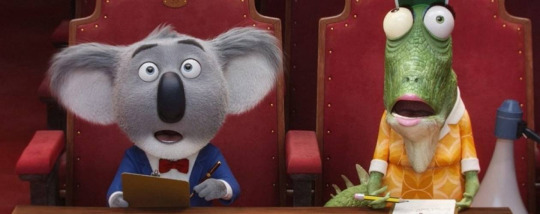
Fortunately for Illumination, time and space for growth is something the studio will have plenty of in the years to come. The tremendous success in the US of The Secret Life of Pets bodes well for its prospects ahead of its gradual worldwide rollout, and represents an enormous vote of public confidence in the brand, so it has ample scope for further expansion and experimentation with the concept of what an “Illumination movie” can be. Pleasingly, rather than resting too much on their laurels, it looks as though that’s exactly what they’re planning to do.
Up next from the studio is the star-studded musical comedy Sing, due for release just before Christmas. 2016 marks the first year with two releases from Illumination, which might give rise to worries about oversaturation, but Sing looks intriguingly different from the rest of their body of work in several key ways. At first glance, it’d be easy to write off this movie - with its anthropomorphic cast and reality TV-influenced storyline - as a cheap, vacuous Zootopia knock-off, but the key differentiator here is the presence of writer-director Garth Jennings, for whom this appears to be something of a passion project. The British filmmaker, an outsider to Illumination’s traditional creative brain trust, is best known for his flawed but ambitious 2005 adaptation of The Hitchhiker’s Guide to the Galaxy and the well-liked coming of age movie Son of Rambow; Sing marks his first directorial credit since 2007, and it’s clear from the trailers that he’s trying to do something a little different with it. The concept of celebrity-voiced animals singing popular songs in a talent show sounds like standard mediocre animated fare, but there’s a pleasing focus in the marketing on the emotional stakes and personal struggles of the ensemble cast, with unvarnished melancholy and subtle social commentary colouring the depictions of their unfulfilling lives. Whether the final film follows through on this remains to be seen, but so far there’s definitely signs of real potential for Jennings to deliver a movie with some of the emotional depth and ambition that Illumination have found difficult to achieve so far. I’d be surprised if The Secret Life of Pets didn’t ultimately end up being the more successful of the studio’s two movies this year, but Sing is shaping up to be the bigger creative step forward; at very least, it’s a sign that they’re willing to welcome new voices into their stable, rather than relying on the tried-and-tested.
Beyond Sing, the studio’s plans become more hazy. Unlike Disney and Pixar, who always seem to have at least a half-decade’s worth of future movies confirmed and dated at any given point, Illumination’s upcoming schedule mostly consists of pencilled-in release dates for yet-to-be-announced projects. There’s certainly a third Despicable Me movie coming in June 2017 - destined to be huge, even as it faces the challenge of balancing Minion mayhem with cutesy family stuff a bit better than Despicable Me 2 did - and a sequel to The Secret Life of Pets in 2018, meaning the company now has two hit franchises on their hands. There’s also a new animated version of Dr Seuss’ How the Grinch Stole Christmas coming at the end of 2018, which will be under pressure to learn from the failures not only of The Lorax, but also of the garish, shrieking live-action nightmare that Ron Howard and Jim Carrey gave us back in 2000. Yet aside from these three locked-and-loaded projects, Illumination’s future looks like an odd grab-bag of eclectic licences and concepts floating in the ether; ideas they’ve been linked to include an animated Seuss update, The Cat in the Hat, and a live-action biopic of the author himself starring Johnny Depp, as well as movies based on Ricky Gervais’ picture book Flanimals, acclaimed manga series Pluto, advertising mascot Emily the Strange and the young adult book series Lockwood & Co.
If anyone else is able to piece together a creative direction from that seemingly random mix of concepts, you’re smarter than I am. Again, it’s difficult to know how many of these pitches are still being actively developed - some of these projects haven’t been discussed for years and may have just fallen by the wayside - but at very least, it does seem to indicate that Illumination might be willing to step outside their comfort zones a bit. That’s an encouraging sign, because the recent Comcast/DreamWorks deal means that Illumination’s future trajectory could have a lot more industry-wide significance than anyone could’ve expected five years ago. Back then, Illumination were just another upstart animation house jockeying for space in a crowded market; now, they’re bona fide titans, and it’s likely that Universal are going to want to push the brand harder than ever as they look to build an animation empire to rival Disney’s. What this means in practice is still unclear - it’s unlikely that anyone inside or above Illumination will want to lose the lean, efficient approach that’s helped them make such cheap, profitable movies so far, while Chris Meledandri’s exact role in operating the now-behemothic Illumination/DreamWorks/Comcast machine is yet to be decided - but it’s safe to say that the Illumination way of doing things is going to studied much more closely in the coming years. Going from being a plucky outsider to an industry leader in a few short years means dealing with altered expectations; it’s a mantle that Disney and Pixar have mostly worn with poise and confidence over the years, whereas DreamWorks seemed to get weighed down by it after a relatively brief period of peak success.
How a studio that have so far based their whole identity around a modest, small-scale approach approach to both art and business respond to this is anyone’s guess: will they ramp up their production budgets and pack their schedule as DreamWorks did? Will they start swinging for the fences artistically, a la Disney/Pixar? Or will they make the rest of the industry dance to their merry tune, bringing average budgets down and ushering in a new era of zany, cheerful slapstick? Only time will tell, but it’d be nice to see the Illumination success story continue for a few years longer, at least. Their films have been far from perfect, but there’s been enough craft, good humour and winning warmth in their finest moments to earn a chance to showcase what they can really do on the biggest stage; I’m just hoping that now they’re up there, they’ll be able to think of something to actually say.

#illumination#illumination entertainment#minions#despicable me#the secret life of pets#secret life of pets#sing#the lorax#lorax#despicable me 2#Disney#Pixar#dreamworks#animation#film analysis#film#movie critique#movie analysis#long post
17 notes
·
View notes
Text
Wreck-It Ralph 2 and the new era of Disney sequels
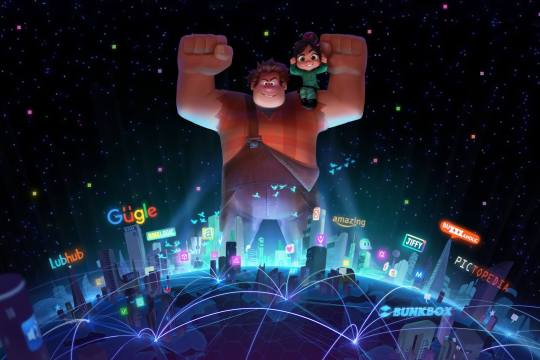
In my recent posts, I’ve spent a lot of time discussing Disney’s status as Hollywood’s leading cinematic empire-builders and purveyors of franchise fare. This can be viewed in both positive and negative ways: aficionados see them as a cultural institution, reliably providing quality entertainment with a consistent identity for almost a century; detractors see them as arch-capitalist mercenaries, ruthlessly monetising their ideas over years and decades until they grow into cultural behemoths that suck all the air out of the room. Both viewpoints have merit, to be honest, but whichever side you land on, there’s no denying that Disney have a keen commercial sense that- when allied with their fixation on legacy - manifests as an unstoppable desire to seek out every possible opportunity to expand their brand.
For all this, though, an ever-present anomaly sits at the very heart of their business model, despite often being overlooked, and that’s that Walt Disney Animation Studios, the company’s flagship team, doesn’t make cinematic sequels. This has always been an odd quirk of the way Disney does things, but it’s stood out more and more glaringly with the passage of time. How can it be that Disney - the most notoriously expansionist and brand-obsessed company in the industry - is leaving all that money on the table and steadfastly refusing to turn its biggest, most iconic movies into ongoing franchises? Yet even as Hollywood has become more sequel-oriented than at any point in history, Disney has remained steadfast; of the 55 currently released films in the Disney animated canon, only three sequels have been made - The Rescuers Down Under, Fantasia 2000 and 2011’s Winnie-the-Pooh - none of which fit anyone’s idea of what avaricious franchise-building looks like. For decades, it seemed like this no-sequels tradition would stand the test of time, an immovable pillar of Disney’s ever-evolving identity…
...until June 30th 2016, when a stuttering Facebook Live video showed an endearingly enthusiastic John C. Reilly smashing down a fake wall with foam fists to confirm a theatrical sequel to Wreck-It Ralph for release on March 9th 2018. It’s an announcement that’s been widely welcomed - and one that could represent one of the most important creative turning points in Walt Disney Animation Studios’ 80-year history.
WHY IS THIS SUCH A BIG DEAL?
youtube
Perhaps I’m making a bigger deal out of this news than most of the outlets reporting on it, but I suspect the majority of casual observers haven’t realised its significance because they haven’t actually noticed how downright weird it is for Disney to be announcing a sequel of any kind - least of all a sequel to Wreck-It Ralph.
Disney’s commitment to prioritising original stories over sequels within its animated canon hasn’t always got the recognition it deserves, but it has to be said that it’s sort of their own fault, with the constant avalanche of ancillary non-cinematic spin-offs, merchandise and blanket promotion that accompanies each of their releases somewhat distorting the message. Even their most strikingly original films end up feeling ubiquitous and culturally ingrained after a short amount of time; admittedly that’s no accident, and is in fact part of how Disney manages to make its movies feel iconic, but some of that brand-building has come at a cost. Specifically, it’s the ill-advised glut of direct-to-video animated sequels churned out by the company’s B-teams during the 1990s and early 2000s that have done the most damage; beginning with The Return of Jafar in 1994, these cheaply (and often poorly) made franchise-extenders were released steadily for almost 15 years, with a few (The Jungle Book 2, Return to Never Land) even earning theatrical releases, just to confuse public perceptions that little bit further. Current chief creative officer John Lasseter shut the cheapquel production line down in 2007, rightly recognising the diluting effect these knock-offs were having on the Disney brand, but by then the reputational damage had already been done, creating a perception of Disney sequels being a ten-a-penny inevitability, rather than a highly unusual rarity.
In reality, the core Walt Disney Animation Studios team’s historic resistance to sequels has been strikingly unwavering, particularly when viewed against the evolution of the wider industry since 1937. For the first few decades of its history, Disney’s approach didn’t really stand out in a Hollywood environment where successful sequels were a rarity in general, but they’ve continued to hold out long after all of their rivals have succumbed to the trend. Franchise-driven filmmaking has been the prevailing model for mainstream blockbuster releases for around two decades now, and none of Disney’s competitors in the animation industry have proven immune, with DreamWorks, Blue Sky Studios, Illumination Entertainment et al showing no shyness about producing second, third or fourth sequels to their biggest movies when the box office results supported it. Heck, even Disney-owned Pixar has has bowed to conventional wisdom regarding sequels over the last few years - reportedly at their parent company’s urging - and yet Walt Disney Animation Studios’ own sequel output remains limited to those anomalous follow-ups to The Rescuers, Fantasia and The Many Adventures of Winnie-the-Pooh, all lower-key Disney movies sequelised for idiosyncratic, non-mercenary reasons. Meanwhile, the iconic big hitters - The Jungle Book, Aladdin, The Lion King etc - have remained as standalone movies, as least as far the big screen is concerned, in an era when any other company would have drained the well dry decades ago.
Of course, there is one other notable exception to Disney’s unusual policy that I’m deliberately overlooking: namely, last year’s announcement of a planned sequel to Frozen, its biggest success and the highest-grossing animated film of all time. There’s a reason, though, for considering Frozen 2 is a slightly separate issue. While the confirmation of a Frozen sequel was certainly an unexpected anomaly given Disney’s history, it almost seemed par for the course at the time, given that the cultural narrative surrounding Frozen has basically been an unbroken string of non-stop unexpected anomalies. There was a certain sense that Frozen 2 might be a one-off, a unique exception to the no-sequels rule made in recognition of the first movie’s status as an entirely unexpected $1.27 billion global phenomenon exceeding anything Disney has achieved in at least 20 years; Wreck-It Ralph, on the other hand, was a much more conventional, run-of-the-mill success, its $471 million global gross in 2012 only rating as the fourth highest-grossing animated film of its year, as well as ranking lower than Tangled, Big Hero 6 and Zootopia among recent Disney movies. As such, it’s the latter announcement that represents the bigger indicator of a meaningful strategic shift; if the monstrous success of Frozen opened the door for commerce-driven, supply-and-demand sequels to be seriously discussed at Walt Disney Animation Studios for the first time in eight decades, then Wreck-It Ralph 2 is the first evidence that the route is now wide open, and that even a moderately profitable film now has the potential to become part one of a cinematic franchise in a way that’s never been possible at Disney before now.
WILL WRECK-IT RALPH 2 BE ANY GOOD?
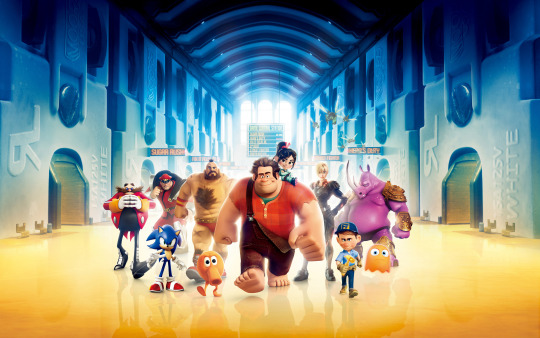
To be clear, none of this should be taken as any slight against Wreck-It Ralph or its now-confirmed sequel, about which there’s plenty of cause for cautious optimism The original movie was never really the all-star Who Framed Roger Rabbit? mashup extravaganza for videogame characters that it was sold as, but it more than made up for that with its smart humour, charming visual imagination and its sincerely-etched theme of unwanted outsiders earning their place in society through self-acceptance. It was a tremendous feature directorial debut for The Simpsons and Futurama alumnus Rich Moore, who has since added to his reputation by helping Byron Howard turn the once-troubled Zootopia into one of the biggest critical and commercial smashes of 2016.
Moore has earned a lot of goodwill and trust for his work with Disney to date, and has been talking openly about his desire to do a Wreck-It Ralph sequel since the first movie’s release; at the time, it came across as a Disney newbie’s slightly overenthusiastic misunderstanding of how the studio’s creative model worked, but now it appears he may have known something we didn’t at the time. In any case, there’s little reason to suspect that Moore - who is returning to the director’s chair for Wreck-It Ralph 2, this time alongside regular collaborator Phil Johnston - would return for a sequel without a good idea in mind, given the thematic and emotional richness of his first two Disney projects.
Indeed, the basic synopsis we’ve been given - Ralph and his sidekick Vanellope explore the internet - sounds potentially ripe for story potential, and it’ll be interesting to see how far Moore and co are willing to take the idea. Certainly, on a surface level the film is sure to be filled with witty technology gags and trippy Tron-like visuals to evoke the idea of cyberspace as a living world, but there’s also an opportunity for the film to dive more deeply into online culture, and the social impact - both positive and negative - that the internet has had on human lives over the last few years. A story like that would seem to suit the sensibilities of Moore - a sharp humorist with an active social media presence - and would continue Disney’s trend towards more contemporary and thematically challenging movies, following the tremendous response to the socially-conscious Zootopia.
Of course, it may not turn out that way at all, and we’ll actually end up with a colourful, throwaway adventure movie cobbled together from internet in-jokes and videogame cameos. That’s not to say there wouldn’t be pleasure to be had from that, but given that Wreck-It Ralph 2 now finds itself acting as a litmus test for Disney’s new approach to sequel-making, the hope is that they’ll produce something with enough genuine ambition and thematic heft to help assuage some of the concerns many long-time Disney fans may be feeling about this strategic shift. I’ve written before about Zootopia being a film crying out for continuation; I wouldn’t say the same of Wreck-It Ralph, which, despite its strong personality and vibrant world, felt self-contained and comprehensive in its character journeys; showing an ability to expand the material intelligently rather than stretching it thinly would earn Moore and Disney a lot of credit at this important juncture.
WHAT COMES NEXT?
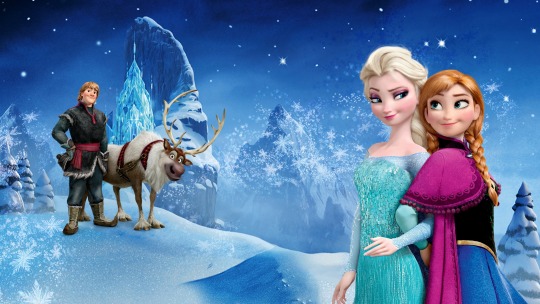
In the near term, the main question arising from the announcement is what it might mean for the films in the company’s forthcoming schedule that Wreck-It Ralph 2 seems to have displaced. The new movie has been slotted into the early 2018 date previously occupied by Nathan Greno’s Jack and the Beanstalk adaptation Gigantic, which has now slipped to November of the same year amid reports that it’s undergoing some reworking. That’s common enough for animated movies as to not register as any great cause for alarm, but the more interesting question is how all this affects the aforementioned Frozen 2, which was announced over a year ago, yet remains without a release date. Moana seems set to receive a big push surrounding its late 2016 release, and Wreck-It Ralph 2 and Gigantic now occupy both halves of 2018, so it seems unlikely that a juggernaut Frozen sequel would be crammed into 2017 at this point, particularly since it basically has to be a winter release by definition; as such, we probably won’t see it until late 2019 at the very earliest. As mentioned before, it’s not unusual at all for Disney movies to have long gestation periods, but it does seem strange that a previously unknown Wreck-It Ralph follow-up would be greenlit a full year after Frozen 2 and yet still beat it to cinemas by at least 18 months. Does this indicate that Frozen 2’s development is proving laborious, or is it just a sign that Disney are playing things a lot more carefully with what is now their undisputed crown jewel? We’ll find out in three or so years’ time, I suppose.
Of course, with the floodgates now officially open, it seems nearly impossible that we won’t now see further sequels added to the pipeline, and fans and shareholders alike are likely to start getting increasingly vocal about what those should be. For instance, it’s surely inevitable that a sequel to Zootopia - a film that more than doubled Wreck-It Ralph’s worldwide box office gross - will be getting some serious discussion, though it should be noted that Moore’s commitment to Wreck-It Ralph 2 means he probably won’t be involved in a hypothetical Zootopia 2 released any time before 2021. Disney might choose to proceed without him, of course - Zootopia was Byron Howard’s baby more than it was Moore’s, after all - but on the hand, the studio deemed it important to bring back the original directorial teams for the Wreck-It Ralph and Frozen sequels, so it’s clear they’re keen to maintain their historic creator-led approach where possible. Meanwhile, questions will also start being asked about the sequel potential of other recent hits; I can’t help but wonder if Disney might have chosen to make cinematic rather than TV-based follow-ups to Tangled and Big Hero 6 - both of which also outperformed Wreck-It Ralph - if this precedent had been set sooner rather than later.
Nevertheless, the implications of this shift in attitudes extends further forwards and backwards than just the films of the last few years. More than ever before, Disney will be able to go into future films knowing that continuations of successful new movies are an established option; might this mean that more conventional sequel production timelines are put in place, with follow-up movies treated as pre-planned possibilities, rather than retrospective additions? Could a strong performance for Moana, for example, be followed by Moana 2 and Moana 3 at two-year intervals? Or might the company go the other way, and try - in earnest, this time - to do what it failed to do on the cheap in the 1990s, turning its most beloved legacy classics into sagas? In a sense, the recent spate of Disney live-action remakes suggest the idea may have crossed their minds, but even so, you feel there’d be a difference in perception and internal pressure between creating a sequel to the live-action remake of The Jungle Book, and making a sequel to the iconic original version of The Jungle Book or The Lion King, produced to sit alongside their predecessors in the main animated canon. I’m not expecting Disney to go that far - doing so would be an enormous creative gamble, and would also require the company to officially admit all those crappy DTV sequels don’t actually count, which is something they should do, but probably never will. But hey, Disney have surprised me a lot lately, so what the heck do I know?
HOW SHOULD WE FEEL ABOUT THIS?
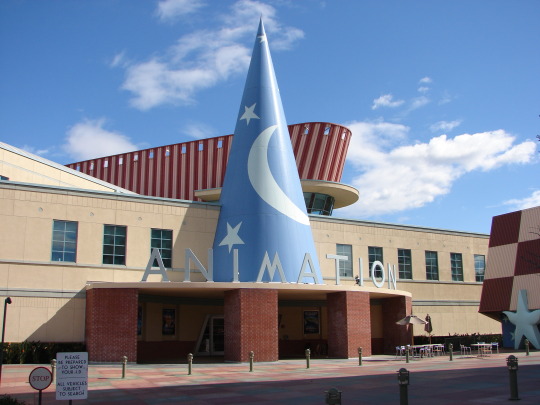
For long-time Disney fans, the idea of the company breaking an 80-year habit and finally falling in with the rest of the industry on sequels is likely to leave some mixed feelings. On the one hand, it does feel like a laudable tradition may be coming to an end, potentially weakening a deep-rooted commitment to original, creator-driven storytelling that’s persisted since Walt Disney’s lifetime, and moving the company towards the kind of conservative, branding-driven strategy of safe sequels and shareholder-controlled franchises that are proving such a blight on mainstream filmmaking at the moment. The Pixar example will be raised as a discouraging omen; although the Emeryville animation house continues to deliver high-quality work, not many would dispute that its overall standard has dipped somewhat since the genuinely dreadful Cars 2 kicked off its current sequel-focused run.
On the other hand, the Disney of 2016 has a much better sense of positive momentum and energy around it than Pixar has had since 2011, and I’m certainly inclined to give the Second Renaissance-era Disney A-team the benefit of the doubt when making sequels to a much greater degree than I did to the Dark Ages Disney B and C-teams that produced Kronk’s New Groove and Brother Bear 2. After all, Walt Disney Animation Studios is currently producing its best original material in 20 years, while on a broader company-wide basis, Disney has shown an encouraging understanding of how to balance the needs of an ongoing franchise with a commitment to continued quality and purpose. Handled correctly, the lifting of the studio’s longstanding sequel moratorium could represent a new creative frontier, giving them an opportunity to develop stories and characters over multiple years and instalments for the first time. How, for example, might a revitalised modern Disney with the capability to tell serialised stories handle epic material like The Chronicles of Prydain, the acclaimed fantasy series it condensed so shoddily in 1985 with The Black Cauldron? Or could Big Hero 6’s tentative foray into the Marvel universe be developed into something more substantive over multiple instalments?
Right now, there isn’t enough evidence to make a judgement either way, so it’s best to just sit tight and wait to see what kind of movies Wreck-It Ralph 2 and Frozen 2 end up being. I highly doubt either film was greenlit for the purpose of acting as a canary in the sequel coal mine, but you can certainly bet that heavy-duty excavation of said mine will follow if both projects make it out alive. For the time being, though, there’s no harm in having a little optimism and holding out hope that this new era for Disney turns out to be just as fertile and creatively exciting as the one we’re currently in - even if the creative model it’s transitioning to is a slightly more conventional, a little less traditional and maybe a bit less unique.
#Disney#Walt Disney Pictures#Walt Disney Animation Studios#disney history#animation#film#film analysis#movies#movie critique#movie analysis#wreck it ralph#wreck-it ralph#wreck it ralph 2#wreck-it ralph 2#frozen#frozen 2#Zootopia#zootropolis#zootopia 2#sequel
4 notes
·
View notes
Text
The live-action Disney remakes are pointless. Does that matter?
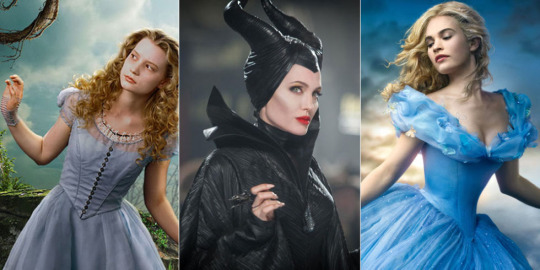
Disney has been thinking about visions a lot lately, and I don’t just mean the red-faced android bloke from The Avengers. Visions are incredibly important when planning and managing long-running franchises or bodies of creative work, and right now, there’s no company in Hollywood that’s more dedicated to doing that than Disney - and, arguably, there’s nobody doing it better. While the likes of Warner Bros and Fox struggle to find a unified vision for their various tentpole franchises and would-be cinematic universes, Disney has been amassing a small army of them, running them with impressively consistent efficiency. Whether it be the Marvel Cinematic Universe, the burgeoning rebirth of the Star Wars series, or the ongoing success of the Walt Disney Animation Studios and Pixar stables, Disney has established the template for long-term, vision-driven franchise management that all the other studios are struggling to replicate.
But there’s another Disney franchise that’s sparked into being over the last few years, and it now represents one of their most lucrative and lavishly-nurtured cash cows. When Tim Burton’s live-action remake/reimagination of Alice in Wonderland was announced in 2007, few could’ve predicted it would become a billion-dollar success in 2010 - fewer still would’ve guessed it would inspire the company to begin systematically raiding its entire animated back catalogue and remake seemingly every single one of them, but that’s the reality we seem to be facing in 2016. A new live-action redo of a beloved Disney movie seems to be announced every other week, and with a new take on The Jungle Book becoming another surprise $900 million-plus worldwide hit over the last few months, it doesn’t seem likely that Disney will be dissuaded from announcing more - even when taking into account the more recent commercial bellyflop of Alice Through the Looking Glass.
However, looking out over the incoming tide of remakes, something continues to trouble me: I still don’t really know WHAT I’m looking at when I see these movies. We’re now five movies into this strange new venture - or six, if you want to count the weird Disney-branded version of The Sorcerer’s Apprentice from 2010 starring Nicolas Cage - and it’s still frustratingly difficult to get a bead on what the overall vision for these remakes is. What is the overarching artistic justification for remaking these movies? What is Disney looking to bring to the material by rendering them into live-action? Is there any actual mission statement here, or are these films being chucked out on a totally ad hoc basis, coming up with a reason for being on the fly? And what should we, as audience members, critics and Disney aficionados, actually be going into these films expecting? The billion-dollar receipts have shown that Disney has found a formula to serve its shareholders with these movies - but is there a similarly coherent answer to the question of what these movies are supposed to contributing to Disney as a cultural institution, and to us as viewers?
WHY DO THESE FILMS NEED A POINT, ANYWAY?

Before looking further for the purpose of these live-action Disney remakes, it’s worth addressing the broader question of whether it’s actually important for these movies to have an overarching point at all. From one perspective, it’s sort of an odd thing to ask for; in one sense, individual movies ought to stand alone on its own terms, serving the needs of its story and audience to the best of its ability, in order to turn a profit and contribute to a virtuous cycle of risk-and-reward Hollywood filmmaking. Viewed in this light, the answer to the question of “vision” is easily answered: Disney is a film studio that wants to make new movies that audiences will like. They’ve realised that live-action versions of classic animated movies are popular, so they’ll keep making more until they stop being popular. Do we need any more justification than that?
Well, yes and no. I’m not enough of a starry-eyed naif to believe that Disney isn’t as mercenary and calculating a business as any of the rest of them out there, but I’d also argue that there are few companies with as trained and sentimental a fixation on the idea of legacy as Disney. Ever since the days of Walt himself, the idea of leaving a cultural footprint of quality and substance has been more than just an ideal to pay lip service towards; it’s explicitly been their core business model, in both word and deed. Disney has always been one the foremost proponents of the concept of artistic-vision-as-commercial-imperative: the idea that by developing a reliable model for producing high-quality work, the company can ingrain itself as a beloved institution within society, reaping the sustainable commercial benefits that this creates for years and decades. This is why Disney’s animation studios have always had such a fierce reputation for ruthless behind-the-scenes battles to create work that’s timeless, instead of just “good enough”; it’s why it then monetises and merchandises that work so doggedly, and engages so enthusiastically in self-mythologising practices like the Disney Vault and vanity projects like The Reluctant Dragon or Saving Mr Banks. Disney knows that a strong sense of long-term vision and purpose is the difference between a string of flash-in-the-pan successes that can sustain a company for five years, or a steadily-built marble-finished reputation that can last for a half a century.
That sense of continued purpose, lasting through rich and lean years, has been the foundation of the success of Walt Disney Animation Studios for many decades, and in more recent years it’s been clear that its successful newer subsidiaries are following this example. The Disney Animation template, enduring through all of the studio’s various iterations and personnel changes, has been the production of timeless, creator-driven imaginative fantasies with lovable characters and cutting-edge animation; younger sibling Pixar have adopted a similar but distinct variation on the same idea, with their films drawing more upon buddy chemistry, contemporary themes and tight thematic construction. Similarly, in the last decade the Disney-owned Marvel Studios has also carved out a strong identity for itself, grounding all of its varied character franchises in a core ethos of colourful, upbeat, humour-infused adaptations that bring Marvel’s famous superheroes to life on the big screen in a way that’s relatable and personable.
These may sound like quite broad categorisations, but the creators working for these studios have honoured their mission statements diligently, to the point that there’s now a strong cultural awareness of what constitutes a “typical” Disney/Pixar/Marvel movie, and a sense that audiences know what to expect and look forward to when they walk through the door. Sometimes, this can be a double-edged sword (hence the “what if [X] had feelings?” jibes at Pixar, or the MCU’s reputation for formulaic third-act aerial battles) but on the whole, the effect has been positive, creating a sense of trust and permanence about the respective brands, and a feeling that audiences will buy into a Disney film on name recognition alone, because they know the Disney name means something.
MUDDIED WATERS
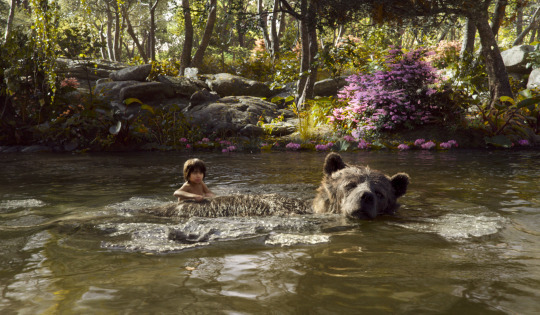
So what does it mean for an audience member to walk into a live-action Disney remake? At the moment, the answer is “almost anything”, which might sound like a positive thing, until you realise that unfettered, directionless creativity is just as much of a double-edged sword as rigid formula. Theoretically, the lack of overarching purpose means the directors of these remakes have free rein to do whatever they want with the material they’re given, allowing them to explore their own creative visions without needing to be subservient to a wider strategy; in practice, what we’ve gotten is a series of films that Disney’s marketing department clearly wants us to feel are all of a piece with each other, but in practice are so wildly divergent in style, intent and - crucially - quality that it’s like sitting down at a restaurant unsure as to whether you’re about to be brought a gourmet burger, a plate of liver and onions, or some overcooked soggy vegetables.
Let’s look at the opening salvo of this live-action movie project, the double whammy of Tim Burton’s Alice in Wonderland in 2010 and the Angelina Jolie star vehicle Maleficent in 2014. These two movies, taken together, seemed to set out a fairly clear vision for this informal live-action remake label, with both films sharing a common purpose by applying a revisionist eye to their source material. Both took iconic elements from their animated forerunners but spun them in off-kilter new directions, finding contemporary themes in the subtexts that sometimes ran counter to the intent of the original material, meaning they served as commentaries and responses to the original works as much as homages. That both movies happened to be of questionable quality undermined the impact of this vision to a certain degree, but their undisputed commercial successes appeared to give Disney a mandate to carry on using this live action sub-franchise as an outlet for its introspective, self-analytical and revisionist tendencies…
…before Cinderella and The Jungle Book came out, and threw the entire template out of the window. I’m not about to complain too bitterly about the strategic confusion of this sudden pivot when the resulting movies were demonstrably so much better than either Alice or Maleficent - indeed, I’d take Kenneth Branagh’s Cinderella over the animated movie on which it’s based - but it’s strange to observe how strongly they push against the purpose of the two films that preceded them. Cinderella, in particular, couldn’t run more contrary to the ethos of Alice or Maleficent if it tried; it doesn’t have a revisionist bone in its body, offering a resolutely traditional fairytale in every respect, albeit one with slightly more textured characterisation and emotion than we’re used to seeing from the Cinderella story. It’s a lovely little confection, but there’s not much in the way of a bold statement of broader forward-looking intent to be gleaned from it. The closest it comes to reinterpreting the material is its excision of the original movie’s songs and talking animals, which might have been taken as an indicator that future movies would at least try to differentiate themselves from their animated counterparts by taking similar steps to ground the stories… apart from the fact the next movie was The Jungle Book, a film entirely about talking animals singing songs.
Again, it’s worth noting that Jon Favreau’s take on The Jungle Book was an artistic success, earning its glowing critical reception with its technical virtuosity and smart updating of the story’s colonialist themes, but is so faithful and reverent to the original movie as to stand as a complete (and probably unintentional) refutation of the “revisionist remake” pitch that Alice and Maleficent seemed to be setting out. Since then, we’ve witnessed Alice Through the Looking Glass (the first sequel to be spawned from this project) become a complete commercial washout, and while there are many well-documented reasons for this - the long gap between entries, the waning appeal of Johnny Depp, the fact nobody actually liked the first film, and that the sequel was also kinda crappy - I can’t help but wonder if it might have fared a little better if Cinderella and The Jungle Book hadn’t undermined and erased that original deconstructionist mission statement so thoroughly, thus making Looking Glass seem like even more of a pointless, out-of-place anachronism than it otherwise would have been.
THROWING EVERYTHING AT THE WALL
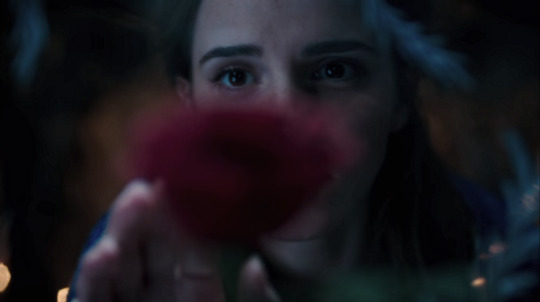
As yet, this apparent lack of a coherent direction doesn’t seem to have struck either Disney or their audiences worldwide as being a particular problem. The company’s schedule is filling with additional live-action remakes at a prodigious pace, making even the MCU’s chock-a-block dance card look modest and restrained by comparison; however, that rapid proliferation doesn’t give me any more confidence that there’s any overarching master plan in place here, particularly when looking over the list of movies they’re confirmedly or allegedly planning. Up next is director David Lowery’s take on Pete’s Dragon, promising an emotional indie-ish take on a lesser-regarded story, followed by Bill Condon’s Beauty and the Beast, which looks to be the most directly faithful and lavish remake attempted so far, to the point of keeping it as a full-on musical - a step further even than the stripped-back approach The Jungle Book took. Thereafter, we’re promised remakes of The Little Mermaid, Mulan, Dumbo (from Tim Burton), Winnie-the-Pooh, The Sword in the Stone, Pinocchio and the “Night on Bald Mountain” sequence from Fantasia, not to mention prequel movies based on Cruella De Vil, Tinker Bell and the Genie from Aladdin, plus sequels to the existing live-action Jungle Book and Maleficent movies.
To be blunt, this bewildering array of films does not strike me as the work of a studio with an actual strategy in place. We have ultra-faithful traditionalist homages rubbing shoulders with auteur-driven oddities (for Tim Burton’s Dumbo will surely be nothing else), while the planned Emma Stone-fronted Cruella prequel feels like a throwback to the Alice/Maleficent revisionist mould - an odd decision made to feel stranger by the failure of Looking Glass. Frankly, it feels like a random grab-bag assortment of concepts and styles that don’t feel of a piece beyond their shared source material, but they’re all being fast-tracked and put out under the same banner, marketed in similar ways at the same audience. The whole enterprise gives the impression that Disney are simply rushing as many ideas to market in as short a span of time as possible to capitalise on a fleeting market opportunity, with little regard for the sustainability or creative meaning of their work. This is unsettling and unusual for Disney, and feels uncomfortably redolent of Warner Bros’ swaggering plans to dump out 13 DC movies in seven years, with the actual creative strategy and ethos being thought up on the fly; more troublingly, it has a whiff of Sony’s stewardship of its now-dead Amazing Spider-Man franchise, which in its final days felt like executives throwing darts at a board and landing on random, bizarre ideas - a Venom movie! A Sinister Six movie! An Aunt May spy adventure! - in a vain effort to salvage a series scuppered by shareholder-driven thinking, and win back an audience that no longer understood why the vision they were being presented was of any actual benefit to them.
Nobody should actually be accusing Disney of going that far just yet. For the time being, they’ve earned the benefit of the doubt, having shown a keen understanding of the value of vision throughout their history, right up to the present day; Alice aside, 2016 has been a banner year for all of Disney’s divisions, the live-action remake business included. Even with its somewhat scattershot strategic underpinnings, the model has produced some quality work with The Jungle Book and Cinderella, and that’s sure to continue, but if this cycle of remakes is going to be such an omnipresent fixture of the Disney calendar for years to come, it would be reassuring to see some kind of coherent game plan emerging sooner rather than later. Nobody wants a repeat of the predicament that currently blights Fox’s X-Men movies, where a lack of sensible forward planning or a consistent creative strategy makes each entry in the series a total crapshoot in terms of quality, meaning audiences can never feel sure whether a solid entry will be followed by a shoddy one that works completely at crossed purposes with its sister productions and damages the value of the whole. That’s never been the Disney way, and that’s because they have always understood that audiences will quickly become less enthusiastic, then unsure, then wary, and ultimately rejecting of films that can’t properly articulate their own identity, value, purpose or core appeal. In remaking its classic stories into live action, Disney has found a new way to expand the definition of what a “Disney movie” is; it must now make sure to keep that expansion in check with a strong vision of what it wants to achieve going forwards, or else it risks letting that once-clear definition drift away into meaninglessness.
#Disney#Walt Disney Animation Studios#disney history#walt disney pictures#animation#film#movie critique#movies#alice in wonderland#alice through the looking glass#the jungle book#jungle book#beauty and the beast#maleficent#cinderella#film analysis#movie analysis#remake
7 notes
·
View notes
Text
The Angry Birds Movie: good enough for an animated film, and that’s a problem
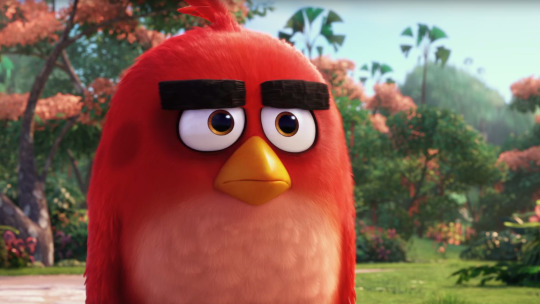
With the comics-based movie business doing a roaring trade for some years now, it’s way past time for the videogame-based movie to step up to the plate and prove its worth. Ever since the legendarily awful Super Mario Bros. movie got the genre off to an ignominious start in 1993, the game-based film has remained one of the redheaded stepchildren of Hollywood, despite many years of failed attempts to notch at least one unqualified home run. For this reason, 2016 has been billed as a big year for the would-be fledgling genre, with not one, not two, but four high-profile adaptations getting wide cinematic releases within 12 months. The first of these, the animated Ratchet & Clank, was a swing and miss both commercially and critically; bigger things are expected (or at least hoped) of the upcoming Warcraft and Assassin’s Creed, both adaptations of genuine AAA gaming brands with large budgets and respected directors.
However, right now all eyes are on The Angry Birds Movie, an animated comedy that rides into town with an unusually strong commercial pedigree and a clear confidence in its prospects for success. Unlike Ratchet & Clank - which saw developer Insomniac Games partner with the small-time Rainmaker Entertainment in their failed attempt to bridge the gap from console to cinema - Angry Birds creator Rovio have teamed with Sony, a major-league studio with proven experience of delivering bona fide animated hits, even if they’re not quite on the level of a DreamWorks or Disney. The film clearly boasts a substantial enough budget for its animation and worldwide marketing - both as an adaptation of a very current and globally recognisable game (again, sorry, Ratchet & Clank) and as the big new movie from Sony - and it’s looking very likely to do quite well. Indeed, if it performs at or above the ~$350 million level of Sony’s Hotel Transylvania or The Smurfs 2, that would be enough to push it past the $335 million gross of the 2010 adaptation of Prince of Persia: The Sands of Time to become the top-grossing videogame movie ever - not a high bar to clear, but an achievement nonetheless.
But the question people are really asking isn’t whether or not we’ll get a commercially successful videogame movie - there have already been a handful of those on a moderate scale, including the early Tomb Raider and Resident Evil instalments. No, what we’re asking is whether we’ll ever get a videogame movie that’s genuinely good, that feels as much of a real movie - made to proper standards of storytelling, organic flow, thematic depth and character richness as the best comic-based movies we get now - while still keeping the spirit and essence of the game in tact. Is The Angry Birds Movie that movie? Well, no. It’s certainly not the unmitigated disaster that might have been feared, but it never strives to be anything better than passable, taking egregious shortcuts in its own construction and undercutting some of its own surprising successes in order to achieve this middling goal. Nevertheless, it does what it sets out to do, creating a tolerable cinematic experience that basically passes muster as a mainstream animated feature film. That it does so in spite of its own instinct to settle for second best is weirdly depressing, in a way that says more about the current state of American feature animation than it does about videogames or birds.

With that said, The Angry Birds Movie turning out to be a “passable” film is probably far more than a lot of people were expecting, given the scepticism surrounding the project since its existence was first hinted at. That suspicion is obviously understandable; the instinctive reaction to the idea of making a film of Angry Birds, a largely plotless physics puzzle game based around catapulting spherical birds at green pigs in towers until they fall down, was always going to be one of moderate-to-severe bafflement. However, I’ll go out on a limb and argue that the source material was never quite as threadbare in terms of potential as that basic plot outline suggests. For sure, there’s not a lot of narrative meat on the bones of Angry Birds, but a key part of the appeal of the franchise over the years has been its success in creating an ever-growing cast of bright and strikingly-designed characters, plus a central slapstick action dynamic - the same qualities that helped propel the Despicable Me/Minions brand to billion-dollar success. Couple this strong sense of personality with the basic outline of the pigs-steal-eggs, birds-seek-revenge plot, and what you have isn’t exactly War & Peace, but there is something there that could work as the skeletal outline of a movie.
Besides, any artist will tell you that having a relatively sketchy outline to work within can be a blessing instead of a curse. One of the trickiest parts of adapting a videogame is that the density of the source material often deprives the filmmakers of their right to a blank slate, instead cluttering the canvas with a mess of iconography, character concepts and lore that may play out acceptably within the confines of an interactive medium where such things usually form part of the set dressing, but come across as derivative, ridiculous or flimsy when forced to take centre stage in a movie. In the case of The Angry Birds Movie, it’s fairly clear that first-time directors Clay Kaytis and Fergal Reilly, and writer Jon Vitti - an alumnus of The Simpsons - had quite a lot of space in which to improvise, to toy with the confines of the concept and create their own material, rather than being tethered to something inflexible and restrictive. The best-case scenario for this approach is 2014’s The Lego Movie, which saw writer-directors Phil Lord and Christopher Miller take the concept of “there are some plastic bricks” - potentially the most inherently plotless and uncinematic source material premise ever adapted into a film - and improvise something wildly imaginative out of it. Presented with an essentially clean canvas, they found something to say about the art of creation and the value of play that expressed and embodied the source material’s core ideals much better than if Lord and Miller had been asked to make a film of a more lore-intensive and plot-restrictive Lego licence - Bionicle, for example.
Nobody is about to compare The Angry Birds Movie to The Lego Movie in terms of quality, but the Kaytis, Reilly and Vitti have clearly applied the same sort of adaptive process to the thin licence they’ve been given, and it’s evident that actual thought has been put into how the rudimentary building blocks of Angry Birds might be arranged into an actual story with stakes, direction and something approaching a thematic purpose. Their single greatest success comes in the fact that, against all odds, they’ve actually come up with a pretty solid concept. Treating the enmity between angry birds and marauding pigs as a basic outline, they present a story that positions protagonist Red (Jason Sudeikis) as one of the only angry, cynical individuals living in a community of gratingly naive and chirpy island-dwelling birds, in which he feels like and is treated as an outcast. When devious pigs arrive on the island with obviously mercenary and malign intent, Red’s natural cynicism makes him the only individual who is able to predict the danger they might pose, but he is shouted down by a community unable to empathise with his rage; Red is only vindicated when the pigs launch an attack on the island and steal their eggs, with the responsibility now falling upon him to lead his community to fight back by teaching them how anger can be constructively harnessed to oppose and prevent injustice, while also learning to better control his own negative feelings in cases when they aren’t helpful.

Again, this is not on a par with Proust or Bertolt Brecht, but it is an elegant solution for adapting the premise of the Angry Birds mobile app into a legitimate cinematic story. It takes the idea of anger from the game’s title - in practice, an insignificant visual character marker designed to add personality to what might otherwise have been a fairly anonymous physics puzzle game - and uses it as a springboard for a thematic exploration of the differences between constructive and destructive anger, and how a healthy, moral society needs to accept the former and reject the latter in order to defend its own identity and ideals. With this context in place, Vitti’s script falls quite naturally into a three-act structure, and is also wise not to overstuff itself with a desire to include too many characters, with only a handful of birds getting starring roles while the remainder are deployed in cameos. The theoretical intelligence of the adaptation process is exemplified by the extended subplot featuring the Mighty Eagle (Peter Dinklage), a character who serves in the game as a special power-up that can only be called down through in-app purchases; in the film, the concept is translated into the Eagle being an overpowered but reluctant saviour figure who needs to be coaxed into action with great difficulty. On a meta, intellectual level, it’s a smart and genre-savvy idea, even if the resulting scenes are fairly meandering.
In these respects, The Angry Birds Movie actually emerges as an unlikely triumph, with an unexpectedly high standard of work having been put into adapting this challenging material from game to film. Unfortunately, this makes is all the more frustrating that the movie’s ambitions seem to stall out at the conceptual stage. After all the effort put into overcoming the self-fulfilling prophecies and inherent traps involved in making a videogame movie, it forgets to pay the necessary attention to the actual execution, implementing its good ideas in a rote, unimaginative manner that embodies every bad stylistic habit and prevailing industry cliche that characterises the most mediocre, unambitious animated movies of today. Maybe in spending so much time thinking about how to avoid making a bad videogame movie, they forgot that making a good animated movie involves sidestepping a similar number of pitfalls, and it topples into every single one as a result.
Nevertheless, the specific way in which The Angry Birds Movie botches its landing are sort of interesting, as they’re very indicative of a deeper-rooted inferiority complex that afflicts certain types of bad animated movie, wherein it almost feels like they don’t think they have the right or responsibility to be judged to the same standards as other types of film. Instead of aspiring to the highest possible quality of storytelling craft, emotional power and adult complexity as the likes of Disney and Pixar do, they seem to approach animation like it’s an inherently lesser form, and that it’s OK to cut corners and lean on tired old tropes in a way you’d never dream of doing in a live-action film. This subset of animated movies don’t seem to understand they’re supposed to be created with the same purpose as other films, that they are simply using different tools to achieve universal goals of empathy, emotion and philosophical contemplation; instead, they pad themselves out with mayhem, empty noise and stylistic quirks copied verbatim from their most popular competitors, though without any understanding of what those details were ever supposed to mean - because fundamentally, they don’t really believe that cartoons are meant to mean anything anyway.
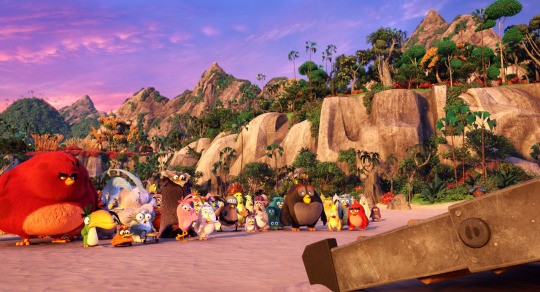
In the mid-1990s, these B-tier productions generally imitated the form of the Disney musical, replicating their most superficial elements with no underlying comprehension of why any of those decisions had been made in the first place, or what they were supposed to achieve by using them. They would feature songs … just because. They would feature cutesy animal sidekicks … because. They would maybe have a princess, a love story, a wacky sidekick played by a famous comedian … because. As the 90s gave way to the 2000s and Disney’s influence waned, standard practice regarding lazy animated-movie shorthand evolved. Out went the “I wish” ballads and the adorable sidekicks, and in came a huge swathe of sarcastic mannerisms and comedic tics swiped straight from the DreamWorks/Shrek playbook - though, again, with all of the the underlying conceptual or satirical meaning and purpose stripped out. Thus, animated movies were flooded with cocky grins, pop culture references, fart jokes, incongruous modern music and dialogue delivered as though performing an observational stand-up routine ... because.
To be clear: this is not to accuse every film that incorporates such mannerisms as being the products of insincere hack directors, or even to say they’re all irredeemably terrible films. But it’s irritating that every era has had its own set of these hollow little animated movie cliches born from an idea that you shouldn’t have to try when making an animation, that it’s OK to just stick a song here instead of crafting a genuine emotional moment, or that it’s fine to just have a fart joke there instead of developing a character-driven punchline, because it’s only a cartoon, and that’s how these things are done. The Angry Birds Movie is almost entirely constructed out of moments like this, and it’s infuriating, after all the graft the team put into adapting the premise and creating strong potential for thematic meaning, to see them take the lazy shorthand option for the actual execution on nearly every occasion.
Nowhere is this more apparent than during an opening 45 minutes that are unengaging at best and grating at worst, simply because it’s impossible not to be aware of how much everyone involved is going through the motions. This is the part of the film in which we ought to be getting to know the characters’ personalities and understanding the plot dynamics at play, but it’s nearly impossible due to its steadfast determination to keep the audience at arm’s length, using flippant cliches instead of writing that’s actually driven by the characters and scenario. We are introduced here to key players such as the misanthropic Red, the hyperactive Chuck (Josh Gad), the gentle giant Bomb (Danny McBride) and the kookily repressed Matilda (Maya Rudolph); theoretically, it’s possible to understand where they’re coming from as people, but you can’t feel anything for any of them because the voice actors - talented comedians, every one of them - clearly haven’t been directed to actually perform them as coherent characters with actual souls. Pretty much every establishing scene with the core cast is performed like a Saturday Night Live skit, with line deliveries emphasising manic, high-energy zaniness over actual emotion every single time. There’s no authenticity to this world, no underlying pathos or humanity; the structure is there to accommodate these essential qualities, but the script is so obsessed with layering on the icing with pop culture gags and toilet humour that it’s forgotten to bake the actual cake. I’ve written recently in praise of Disney’s Zootopia, which features an ideal counterpoint in the character of the cynical hustler Nick Wilde, played by a comedian - Jason Bateman - who works in much the same style as many of the Angry Birds cast. His fast-talking patter could've easily felt similar to what’s on offer in Angry Birds, but in practice there is an ocean of difference between the wounded underlying sincerity and humanity Bateman is allowed to bring to his Zootopia character, and the complete lack of any genuineness in Sudeikis’ Red in any of his Angry Birds scenes. The closest the film gets to trying to evoke some pathos for Red is a half-hearted montage showing what a lonely, misunderstood outcast he is, but even this is saturated with cheap gags and soundtracked disastrously by Limp Bizkit’s cover of Behind Blue Eyes, which utterly kills any lingering sense of emotional honesty it might otherwise have had.
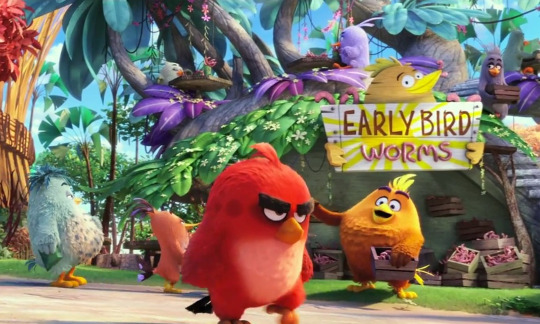
If the soulless, chattering assault of this opening act doesn’t drive you from the cinema, it’s worth noting that The Angry Birds Movie does eventually settle into more of a stable rhythm, letting some of its later moments breathe a bit more - the story developments surrounding the theft of the eggs, for example, are played for straight pathos - and the film improves accordingly. It never overcomes its instinct to undercut itself or recover from the absence of a proper emotional foundation, but some of the more intelligent structural and thematic choices do get a chance to peek through at times, and it becomes easier to appreciate some of the positive qualities it does possess. Misdirected though they frequently are, there’s no doubting this is a stellar cast, with Sudeikis, Gad, McBride, Rudolph and Dinklage backed by the likes of Bill Hader, Kate McKinnon, Tony Hale, Keegan-Michael Key and Sean Penn, among many others. This galaxy of stars do find room to express their talent at various points; of note, it’s nice to hear Dinklage giving a voice role a bit of energy after the catastrophic misfire of his high-profile part in the videogame Destiny, while the deployment of double Oscar-winner Penn in the near-wordless role of the growling Terence is an amusing gimmick. It should also be said that the film is pretty gorgeous to look at, with radiant colours, a snappily caricaturish animation style and a great sense of kineticism. When the film finally arrives at its raison d’etre - the sequence in which the birds slingshot themselves at the pig citadel - it is an impressive thing to witness, both as a creative cinematic translation of an utterly bizarre gaming concept and as an entertaining comedy-action setpiece, even if the script understandably struggles to fully justify why such an odd thing is even happening.
Given that there are some mild pleasures to be found in The Angry Birds Movie, it seems a tremendous shame that it didn’t have the courage to try to build on these and be better than it is, particularly given how much groundwork it did early on to give itself a fighting chance. It’s also a little troubling to think that a company like Rovio, unaccustomed to feature animation, could consult with industry veterans like Kaytis, Reilly and Vitti asking for advice on how to approach the adaptation, and be handed a list of check-box cliches and instructions on how to make the least ambitious, lowest-common-denominator version of the idea, while still having it basically pass as a mainstream animated feature that’s acceptable for global consumption. To be fair to it, it does actually manage to clear that bar, which is an achievement of sorts at a time when videogame movies generally struggle to even achieve competent mediocrity; on the other hand, maybe the fact that being competently mediocre is all it takes for an animated movie to earn a place at the table tells you more about what the industry deems to be acceptable standards than it does about the quality of Angry Birds.
Still, for good or ill The Angry Birds Movie does achieve its own goals and meets the bare minimum industry standard (Ratchet & Clank couldn’t even do that, remember), so it’s likely that the film will be able to leverage its status as a high-profile adaptation of a popular brand to secure commercial success on a scale beyond most previous videogame adaptations. If/when that happens, it won’t be surprising to see more companies attempting the big-budget animation route for their videogame properties - Nintendo are already making noises on this front, for example - rather than the riskier live-action route. If we are to see more cartoons based on videogames, though, let’s hope that animators take a look back at The Angry Birds Movie, see how unflatteringly it reflects their worst and laziest instincts, and adjust their standards accordingly. If all it takes to achieve par for American feature animation in 2016 is to take a mobile app, add a three-act structure, some fart jokes and a Limp Bizkit song, then that really is something worth getting angry about.
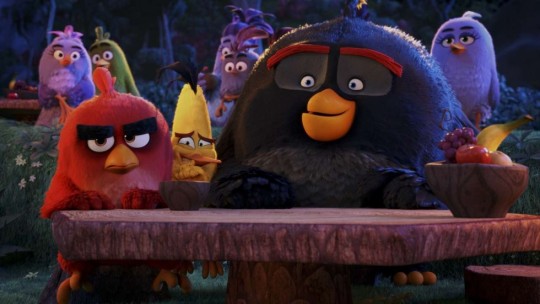
#angry birds#angry birds movie#the angry birds movie#rovio#rovio entertainment#sony animation#animation#review#long post#video games#birds#jason sudeikis#josh gad#danny mcbride#maya rudolph#bill hader#movie critique#movies
7 notes
·
View notes
Text
Five things Disney should learn from Zootopia
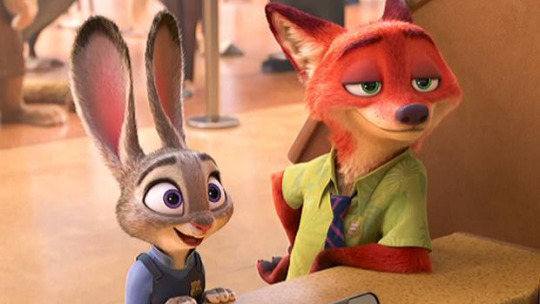
As of the time of writing this, Walt Disney Animation Studios’ 55th feature, Zootopia, has reached the $970 million mark at the global box office, and has a good chance at hitting $1 billion globally, based on its leggy performance in the slow-burn Japanese market, and the fact it’s still lingering in the US top ten, two and a half months into its $330 million+ domestic run. [UPDATE: As of June 5th 2016, the $1 billion goal has been reached. Congrats, Zootopia!] Passing the $1 billion milestone will put it among the top 25 highest-grossing movies of all time, as well as making it the fourth-biggest animated film ever and the third highest-grossing film not to be based on any pre-existing material (or second, if you count Titanic as being “based on pre-existing material”). Combined with its 98% score on Rotten Tomatoes, it’s fair to say Byron Howard and Rich Moore’s talking animal movie has gone down pretty bloody well.
One of the nicest things about the overwhelming success of Zootopia is that it didn’t feel particularly pre-ordained. Of the three films that are likely to remain above it in the ranking of top animated movies, both Minions from Illumination and Toy Story 3 from Pixar were clearly blockbusters by design, positioned and merchandised to hoover up dollars and goodwill that would inevitably be there; global champ Frozen, meanwhile, despite being a lightning-in-a-bottle freak phenomenon, can also be said to have benefited from some canny Christmas scheduling by Disney to align with its icy theme and the out-of-school availability of its young core audience. Zootopia, by contrast, was positioned as more of a schedule-filler, slotted into an early March family-movie gap between DreamWorks’ Kung Fu Panda 3 in February and Disney’s own remake of The Jungle Book in mid-April. It seemed designed to get in there, hoover up around $200 million in the US/$600 million worldwide - as has been standard for non-Frozen Disney movies in recent years - and be out of cinemas by the time summer blockbuster season got started in May. The fact that Zootopia’s home media debut is coming on June 7th - a mere three months after its cinema release - suggests that Disney had no idea they had a high-stamina $1 billion breakout on its hands; it’s tempting to wonder whether it could’ve climbed even higher if the studio hadn’t aggressively scheduled Jungle Book and Captain America: Civil War in such close proximity afterwards, evidently on the assumption that Zootopia would be done long before then.
Having lowballed the film’s potential in the lead-up to its release, the onus now falls on Disney to make sure it learns the right lessons from Zootopia, and give the film the legacy it deserves. Because make no mistake: this noir-tinged anthropomorphic police procedural isn’t just one of the finest Disney movies of the last 25 years, it also has the potential to be one of the most important, in terms of the teachable moments it provides for the studio as a whole.
LESSON ONE: THE TIME FOR SELF-DOUBT IS OVER

Like any long-operating cultural institution, Walt Disney Animation Studios tends to go through creative peaks and troughs, with the quality of its work and the confidence of its identity fluctuating depending on the studio’s current level of audience appreciation, critical respect and industry influence. Anyone whose formative experiences with animation came during the late 90s and early 2000s will recognise that these years represented a period of intense internal crisis at what was then known as Walt Disney Feature Animation, with their identity compromised internally by years of poor decision-making, and under siege externally from a sudden influx of legitimate competitors, many of whom were making their names and defining the zeitgeist by directly rebutting “the Disney Way of Doing Things”.
Zootopia marks the point that we can officially call it, if we hadn’t already: the lean years are over, and Disney has every reason to operate with unfettered confidence and swagger once again. The monstrous success of Frozen since 2013 demonstrated that “the Disney Way of Doing Things” was never as outdated as its rivals tried to paint it, that it was possible to make a quintessentially “Disney” movie and have it be embraced by audiences to the tune of billion-dollar receipts; with Zootopia, the equation has now been balanced, showing it’s also possible for Disney to be experimental and produce a film that functions entirely unlike anything in their past body of work, and yield the same scale of success. Sure, we’ve had left-field entries like Wreck-It Ralph ($471 million) and Big Hero 6 ($658 million) that have delivered solid-to-good returns before this point, but this is the first time in a long while that Disney have turned a film that wasn’t a traditional musical epic into a world-conquering success.
The salient point here is that Disney have gotten themselves back to the point where their name carries value and meaning for audiences again, the artistic and commercial judgement of the studio’s current creative braintrust having now been demonstrated across a range of widely different films. With luck, the vindication of an unconventional success like Zootopia should lead to more confidence and less conservatism about future creative decisions: after all, if audiences no longer doubt Disney, it certainly has no reason to doubt itself.
LESSON TWO: DISNEY CAN TACKLE BROAD-RANGING STORIES WITH SOCIAL IMPLICATIONS BEYOND INDIVIDUAL SELF-EMPOWERMENT, AND THAT’S FINE
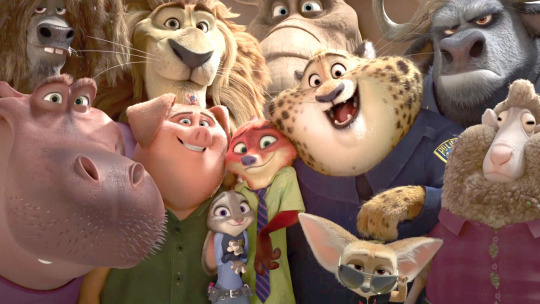
For better or worse, if there’s a single story type that Disney has been caricatured for being creatively obsessed with, it’s the self-empowerment fable. Indeed, Zootopia offers its own succinct skewering of the trope, with its pointed reference to “cartoon musicals where you sing a little song and all your insipid dreams magically come true” - made as a statement of its own defiance of that template.
If that seems like a surprisingly cutting bit of self-critique, it’s only because it’d be basically impossible for the studio not to be aware of its own reputation at this point. Going back to the 1940s, the overwhelming majority of Disney’s past work has been essentially small in scale, dedicated to the personal growth of one or two main protagonists, and their stories of wish fulfilment, individual accomplishment, coming of age or struggles for self-determination. These stories are told against backdrops of varying scales and complexity, but in almost all cases the worlds of Disney - whether they be small towns, idyllic forests, fairytale castles or sprawling kingdoms - usually exist and are designed entirely for the purpose of informing the central journeys of its heroes. Few Disney movies have shown much interest in the functioning of the broader social structure in which their characters live, and rarely offer any evidence of authentic three-dimensional life existing beyond the margins of the frame.
This isn’t a criticism in and of itself, but the emergence of sophisticated rivals in the US animation field post-2000 has clearly forced Disney to add more strings to its bow, and Zootopia represents the culmination of a gradual, deliberate evolution. Recent movies - particularly Wreck-It Ralph and Big Hero 6 - have ostentatiously paid closer attention to world-building than their forerunners, creating texture and incidental social dynamics within their settings that exist beyond the internal lives of the main characters; Zootopia, though, undoubtedly marks the apotheosis of this concept, going to great lengths to etch out a fully-formed imaginative alt-reality that is just as much of a presence and a character in the movie as any of the speaking cast. The setting offers a fully coherent social structure, rich thematic depth, a real feeling of history and an overwhelming sense that the story we’re presented by the movie is just one of many that take place within the city limits on any given day.
What’s more, Zootopia goes a step further than any of its predecessors by telling a story with a society-wide scale, weaving the interpersonal trials and tribulations of its core cast into the social fabric of its world, exploring the relationship between individual actions or attitudes and the wider development of the community in a socially conscious and politically intelligent manner. The fate of Aladdin’s Agrabah or The Lion King’s Pride Lands only ever felt important to the extent that they impacted the personal journeys of Aladdin and Simba; in Zootopia, the eponymous city is a place and a culture that palpably exists above and beyond the actions of Judy Hopps and Nick Wilde, and their journeys of self-actualisation happen within and comment upon a social context that’s developed independently of who they are. In that respect, it’s the closest Disney have come to making a socially-conscious alt-universe science fiction movie, which isn’t something anyone expected when they released that initial trailer of sloths working in a DMV.
The most exciting part of this development is the sense of gathering momentum and purpose behind it. This doesn’t feel it’s arisen as an accidental quirk in the creation of one particular film; rather, it feels like the creative instincts of the current generation of Disney storytellers are guiding the evolution and expansion of the house style, and, bit by bit, are helping to bring new flexibility to one of the most ossified components of the traditional Disney formula. Whether you’re a traditionalist or not, the diversification of the company’s output can only be a good thing, and it’s heartening to think that Zootopia might the tip of the iceberg in terms of broader, more ambitious Disney stories to come.
LESSON THREE: DISNEY CAN TOTALLY HANDLE CHALLENGING, POLITICISED MATERIAL WITHOUT PUSHBACK FROM CORE AUDIENCES

As the previous lesson demonstrates, a huge amount of how we perceive Disney as a cultural entity is defined by certain nuggets of entrenched wisdom that may or may not actually be true. Another of these received ideas is the long-held belief that Disney, as the monolithic embodiment of white-bread, corporatised establishment culture, is duty-bound to play it safe and avoid rocking the boat in terms of the range of topics and themes they tackle in their work. Zootopia, bluntly, demonstrates this idea to be a load of bollocks.
It’s easy to see why it’s been accepted for so long, though. Disney aren’t just a huge business, they’re also a cultural entity that draws much of their power and influence from the universal mainstream appeal of their work, and tackling divisive topics might seem anathema to that goal. Whether due to fears of alienating a core audience of children, inciting the wrath of conservative Middle America or triggering unpredictable political reactions in a diverse global market, many Disney commentators - and, indeed, probably many within Disney itself - have accepted that the company cannot be seen to be tackling or taking sides on sophisticated, complex or potentially controversial topics; in its desire to remain centrist and all-encompassing, it forfeits the ability and the legitimacy to play the role of agitator or ask probing questions.
To be honest, the majority of the Disney canon gives fuel to this idea. As discussed, very few of its films feature any commentary on cultural trends, particularly not contemporary ones; though the settings of each film differ wildly from each other, most take place in a hugely stylised, mythologised and hermetically-sealed fantasy version of their chosen locale. Even the likes of Oliver & Company - one of very few Disney films to be set in a recognisably modern (for the time) world - barely even nods to social realism, creating a storybook depiction of 1980s New York that exists largely as a manifestation of the personal journeys therein, with very few intentional social implications.
Zootopia is a complete reversal of this principle. Its world is an overt, direct reflection of modern America, with all of its complex social issues and politically challenging dynamics remaining in tact, and the film is just as dedicated to exploring and commenting on those deeper sociopolitical ideas as it is with the individual development of its characters. What’s more, the specific ideas it addresses read like an A-Z of the exact sort of hot-button issues that conventional wisdom suggests Disney would be keenest to avoid. Timely and contemporary meditations on sexism, racism, systemic privilege and inequality, abuses of power, the toxic politics of fear, stereotyping and profiling all come under Zootopia’s purview, and yet it never comes across as a polemic; not only is the treatment of these topics organic and accessible enough to remain suitable within the context of a family adventure, but the use of a non-specific animal metaphor proves to be a stroke of genius. It allows the filmmakers to examine the underlying sentiments and universal human instincts that fuel these concepts in a frank and uncompromised manner, yet with enough abstraction to sidestep the potential political blowback of drawing more direct real-world parallels.
Zootopia’s success in managing this difficult balancing act is exemplified by the notable lack of a substantial political pushback against the movie from any mainstream source, despite the high-profile nature of the movie - and despite the disproportionately larger backlash against Frozen, the revisionist politics of which were much less overt. Moreover, it appears to have been embraced equally across the world, even in those countries - such as China and Russia - deemed to be most sensitive and censor-happy about potentially incendiary messages in family entertainment. Given how quickly most adult-oriented cultural conversations about racism and the police devolve into bitter mudslinging, the fact that a Disney movie about a bunny cop was able to achieve this seems even more impressive.
Between Zootopia and Pixar’s 2015 masterpiece Inside Out (also developed under the oversight of executive producer John Lasseter’s creative committee system), it has been demonstrated that Disney-branded animation is more than capable of providing the skill and intelligence needed to turn complex, divisive subjects - such as societal racism and mental health - into accessible, universal stories that can register with audiences of all ages, without fear of controversy or alienation. Now that’s been established, we should hope they treat it as a matter of responsibility to do so more regularly. After all, Disney has had enough criticism over the years for the supposedly malign influence of its cultural dominance; now they’ve shown they can use that same power for social enrichment and enlightenment, they owe it to everyone to do it.
LESSON FOUR: THE COMPANY-WIDE DEDICATION TO THE PRINCIPLE OF “CHARACTER FIRST” IS WORKING
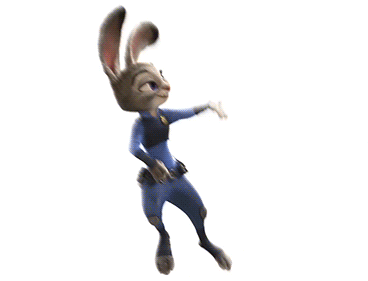
This lesson is one that extends beyond the output of the main Walt Disney Animation Studios team, and cuts to the heart of why the entire Walt Disney studio system - including all of its various divisions - appears to be enjoying such an unusually high batting average at the moment. As such, it could be the most important and wide-reaching of any of the points so far.
Disney has always understood the value of character IPs, and the idea of selling a franchise around recognisable and likeable anchoring personalities, but they’ve arguably never been as successful at actually executing it as they currently are. Disney-owned properties are ruling the world at the moment, from Marvel Studios and their sprawling Cinematic Universe through to the rebooted and revitalised Star Wars series, overseen by Lucasfilm. The films these various Disney subsidiaries are making are very different in nature from Zootopia and from each other, but all of them are adopting the same strategy of prioritising relatable, lovable characters at the very heart of the creative development process.
The MCU is going as strong as ever after 13 films in large part because all of its various characters have been sketched so personably that audiences are always delighted to see them - even if the film is subpar, or if they’re really not doing anything that exciting. It’s the reason viewers are still keen to see more Thor movies despite neither of the character’s previous solo outings setting the world alight, or why most people’s favourite scene in Avengers: Age of Ultron was the one where Earth’s Mightiest Heroes get boozed up at a house party. Meanwhile, the greatest success of last year’s Star Wars: The Force Awakens was not its fairly conservative storyline, but its introduction of a rich and diverse cast of fascinating new characters, whose personalities have been imprinted on fans so quickly that they’re now just as invested in Rey, Finn and Poe as they are in legends of cinema such as Han Solo and Luke Skywalker.
Naturally, this same principle is just as evident at the flagship Walt Disney Animation Studios, which has been trading heavily off the Pixar-tested-and-approved formula of mismatched buddy chemistry since John Lasseter took the creative reins of the studio in 2007. Over time, they have gotten better and better at it, creating huge amounts of pathos from the sparring, self-discovery and bonding of duos such as Bolt and Mittens, Tiana and Naveen, Rapunzel and Flynn, Ralph and Vanellope, Anna and Kristoff, and Hiro and Baymax. Judy and Nick are the latest iteration of a formula for creating winning, likeable character chemistry that the studio has been quietly perfecting for nearly a decade, and the embrace of the fox/bunny duo - as well as the wider success of Disney-owned properties on the whole - shows that this personality-first principle is working as well as it’s ever been. The lesson here, therefore, is not only for Disney to stay the course, but for other creators to learn what they can from this working model, whether they be rival studios or aspiring artists wanting to create a Nick and Judy of their own.
LESSON FIVE: MORE ZOOTOPIA NOW PLEASE

Each of the preceding lessons represents a potentially profound and substantial milestone in Walt Disney Animation Studios’ evolution as a relevant, contemporary and vital creative voice in global culture. Taken together, they point inexorably in one direction: make more goddamn Zootopia, you goddamn assholes.
Now that the audience has proven its receptiveness to the concept - to the tune of $1 billion - Disney has been handed a better and more natural jumping-off point for a wider storytelling universe than almost any previous film it has created. From a commercial standpoint, this is a key benefit of the wider scope that films like Zootopia offer; whereas the intimate focus of the traditional Disney story means they often act as closed loops, with single-use settings and character arcs, the Zootopia model presents future filmmakers with a living, breathing world, rich not only in detail and story potential, but also in thematic depth. Zootopia sequels and spinoffs wouldn’t need to be reverse-engineered or awkwardly extrapolated from a scenario that was only ever intended to support a single narrative concept; instead, they can draw upon a setting with enough complexity and moving parts to act as a functional model of the entire breadth of modern society, a fascinating and colourful petri dish in which all manner of new narrative opportunities can be developed.
The benefits of doing so would go beyond commercial concerns, though, and it’s easy to imagine that Disney’s creative talent will be drawn back to the Zootopia well for artistic reasons in the years to come. A sense of creative imperative is a valuable thing in franchise-based filmmaking, and it’s one that Disney have typically lacked when it comes to sequels; the standard model of personal journeys with happily-ever-after endings are often cheapened by continuation, but Zootopia’s society-wide discussions of prejudice, changing attitudes and the slow evolution of a progressive community have the potential to be enriched and deepened, taken in new directions and examined from perspectives that the current film can only allude to. It helps, too, that Judy and Nick are not presented as characters whose journeys as individuals have “ended” in any sense at the climax of the film, and whose relationship with each other is rendered with enough genuine chemistry and organic imperfection that there remains significant room for future growth, development and evolution.*
Disney’s unique relationship with sequels represents the main barrier to the further development of a wider Zootopia universe; cinematic follow-ups are an incredible rarity within the Disney canon, while the much-loathed policy of direct-to-video cheapquels churned out by B-teams was wisely killed by John Lasseter around a decade ago. Nevertheless, the studio has shown in recent years that its ideas on the matter are evolving, with Tangled, Big Hero 6 and The Lion King all receiving new TV series spin-offs, while the unprecedented box office success of Frozen has led to the greenlighting of an equally unprecedented cinematic sequel. Both approaches could potentially serve Zootopia more naturally than any of the aforementioned films, but it remains to be seen whether hitting the $1 billion mark - higher than any Disney film other than Frozen - will be enough to convince the studio to explore its brave new world further. What seems clear, though, is that in Zootopia, Disney is sitting on a potential commercial and creative goldmine, and they’re not typically a company that contents itself with just sitting on something like that for very long. In another set of circumstances that’d be a cause for lament, but in Zootopia’s, there’ll likely be quite a lot of people queueing up with pickaxes to help them start digging.
* - And hey, if you want to be all shippy about that “evolution”, then fine, have at it. A Nick/Judy romance could work organically in the story; the chemistry of the characters would translate fairly naturally; and it would give Disney a rare opportunity to explore the evolution of a personal relationship through the prism of Zootopia’s socially aware and recognisably contemporary viewpoint, rather than the typical 100-minute dash from meet cute to fairytale wedding, which for too long has been the only version of “love” Disney have seemed interested in depicting. Plus, hooking them up would naturally lead into a thematic conversation about interracial relationships and the impact social stigmatisation can have on personal lives and emotions, which would be an entirely natural direction to take the story in. There you go, Disney, have that idea for free! You’re welcome.
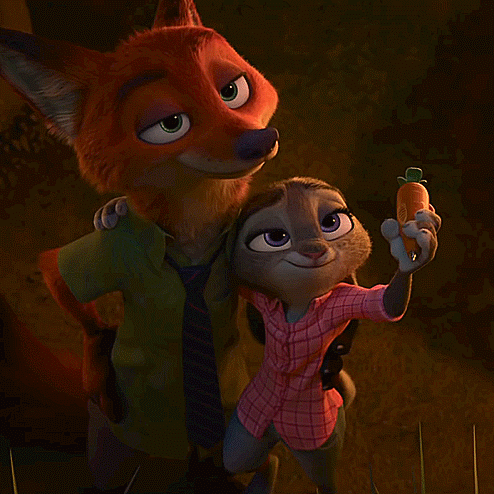
#zootopia#zootropolis#Disney#nick wilde#judy hopps#nick x judy#wilde hopps#frozen#john lasseter#byron howard#rich moore#jared bush#zootopia 2#walt disney animation studios#disney history#box office#animation
956 notes
·
View notes
Text
The Pixar Problem: Assessing the animation studio’s upcoming slate
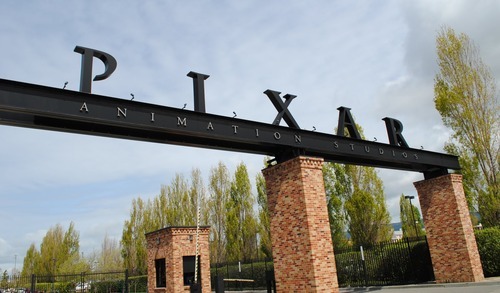
2014 is an odd year out for Pixar Animation Studios. Due to the recent rescheduling of its forthcoming feature The Good Dinosaur to late 2015, this year will be the first since 2005 in which no new Pixar film will debut, with the studio’s decision to retool its palaeontology-inspired comedy breaking a cycle of annual releases that it worked hard to put in place a decade ago. A sign that all is not well at the house that Luxo Jr built? Probably not on its own, but the two-year hiatus fans now face between Pixar releases provides an opportunity to reflect on the current state of play at the Disney-owned animation studio - and some will not be wholly encouraged by what they perceive.
At this point, it’s pretty clear that Pixar are in the second stage of their evolution as a mainstream animation house. The first commenced in 1995 with the release of the groundbreaking original Toy Story and ended in 2010 with the triumphant, record-breaking debut of that film’s second sequel. Part of Toy Story 3’s power and success came from the sense of seeing something culturally important being gracefully brought full circle; now, it feels as though the two films - with their cyclical themes and matching opening and closing shots - serve as bookends for Pixar’s Golden Age, that unmatched period of creative vitality when John Lasseter and his team rolled out 11 consecutive classics, and everything they touched turned to box office and Oscar gold. However, that loop is closed now, and since then they’ve struggled to retain that same sense of unfettered artistic courage and confidence. 2011’s Cars 2 was an outright critical flop that also fell below commercial expectations; 2012’s Brave helped to steady the ship, but was generally viewed only as a qualified success, associated largely with the acrimonious dumping of Pixar’s only female director Brenda Chapman; last year’s Monsters University, meanwhile, seemed to pass a lot of people by due to its unprepossessing prequel concept and apparent lack of ambition, as evidenced by its uncharacteristic omission from the Best Animated Feature race at the recent Oscars.
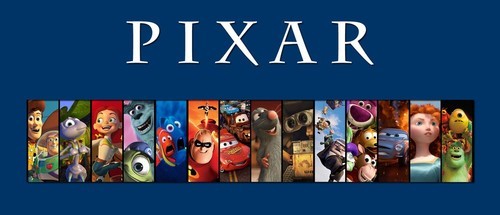
Here’s a list of all of Pixar’s confirmed releases between now and 2018:
Inside Out (June 19th 2015) The Good Dinosaur (November 25th 2015) Finding Dory (June 17th 2016) Unknown (June 16th 2017) Unknown (November 22nd 2017) Unknown (June 18th 2018) Untitled film about Dia de los Muertos (TBC) The Incredibles 2 (TBC) Cars 3 (TBC)
If we’re to assume the proposed Incredibles/Cars follow-ups and Lee Unkrich’s Dia de los Muertos movie are the three films scheduled for 2017/18 - a fairly safe bet - we’re looking at a pretty prolific period for the studio. In both 2015 and 2017, a biannual summer/winter release pattern will be adopted, similar to the one used by their main rivals at DreamWorks for a number of years now - an ambitious move from a business standpoint, and one that comes with a number of risks. After all, DreamWorks’ quantity-focused approach has led to a far more variable hit rate than Pixar over the years, and they’ve lost money on the failures of Rise of the Guardians and Turbo in the last 18 months alone. By gradually shifting from the biennial release pattern they maintained in their early years to the twice-yearly setup they’ll be experimenting with in 2015 and 2017, Pixar are running the risk of watering down their brand, turning their films from eagerly-anticipated cinematic events to a kind of ongoing cultural background noise.
Exacerbating this risk is the sheer quantity of sequels and franchise-oriented films Pixar seem to be churning out, which is by far the most worrying aspect of the company’s new direction. Again, assuming the schedule above is accurate, it’ll mean that between 2010 and 2018, the studio will have produced only four original movies, compared to six sequels or prequels - a far cry from their first ten films, in which Toy Story 2 stood out as the only sequel. I’m not advocating prejudging any of these films, of course - particularly given that the Toy Story series still stands as a trilogy of unprecedented, consistent quality - but there unquestionably seems to have been a behind-the-scenes climbdown from Lasseter and co’s previously stated commitment to only making sequels when an essential storytelling reason for doing so arises. Many have pointed the finger at Disney, who acquired Pixar in 2006, as the reason behind this change, and it’s difficult to argue against this line of reasoning; indeed, all of Pixar’s original Golden Age movies released post-merger (Cars, Ratatouille, WALL-E and Up) were already in development prior to the takeover, meaning the films we’re seeing now are a clearer reflection of Disney’s strategic vision for the Emeryville animation house. Indeed, Finding Nemo/WALL-E director Andrew Stanton - a Pixar vice president who’ll be climbing aboard the sequel train for the first time with Finding Dory in 2016 - seemed to confirm as much in a slightly dispiriting interview with the Los Angeles Times last year:
“There was polite inquiry from Disney [about a Finding Nemo sequel]. I was always: ‘No sequels, no sequels.’ But I had to get on board from a VP standpoint. [Sequels] are part of the necessity of our staying afloat, but we don’t want to have to go there for those reasons. We want to go there creatively, so we said [to Disney]: ‘Can you give us the timeline about when we release them? Because we’d like to release something we actually want to make, and we might not come up with it the year you want it.’”
Although Stanton’s tone is diplomatic, the implication of his comment is that Disney are the ones applying the pressure for more franchise fodder, leaving Pixar’s artists to make the best of a situation with which they’re not entirely comfortable. Although understandable from a business perspective, the new direction seems to be taking a toll on the once-infallible team. There’s a reason that so many studios and filmmakers seem to come unstuck making sequels - put simply, they’re bloody hard to get right, particularly when they haven’t been pre-planned, and most especially when they’re spun off from originals that are as precisely calibrated as Pixar’s tend to be. It may seem an obvious statement, but the characters and worlds we see in Pixar films aren’t real - they’re not self-sufficient entities with ongoing existence and internal lives, despite the illusion created by good storytelling. They’re cogs in a machine, components of wider narrative structures or thematic arcs that function as parts of a specific story. Pixar’s artists labour for years trying to get the character dynamics, lore elements and action setpieces of their stories to communicate a specific theme or emotional message as effectively as possible, stripping out extraneous characters or re-ordering sequences where necessary. As such, having a corporate overlord come in and tell the filmmakers to reconstitute their work into a second or third story is often like trying to build an all-new machine out of parts custom-designed for another. Skilled story technicians and engineers such as those at Pixar can do it, even under duress, but it’s always going to be an uphill battle, no matter how much time they’re given. Sometimes new plot ideas and themes will flow organically from old material - as the Toy Story sequels demonstrated so beautifully - but when you force the process, you’re more likely to end up with lacklustre follow-ups like Cars 2, which force beloved characters to shuffle through inessential, cobbled-together narratives, devoid of purpose, meaning and life.
One could argue that Disney are trying to employ the same franchise-oriented world-building principles that have proven successful for subsidiary Marvel - and will soon be applied to the newly-acquired Star Wars universe - but what’s good for the goose isn’t good for the gander in this case. There’s a huge difference between the type of storytelling employed by Marvel and Lucasfilm - which works by creating versatile character concepts and detailed fictional worlds to use in as-yet undetermined future stories - and the Pixar approach of using story and character as a personal expression of a specific idea. What’s most galling is that this isn’t a case of incompatible corporate cultures - Disney know all of this, and operate their flagship Walt Disney Animation Studios division under a similar principle. Its animated canon includes only three sequels (The Rescuers Down Under, Fantasia 2000 and 2011’s Winnie-the-Pooh) out of 53 films over a period of more than 75 years, and while this restraint has been counterbalanced by a proliferation of TV spinoffs, direct-to-DVD sequels and merchandising opportunities, Disney have by and large been fairly savvy about how to avoid diluting their core brand through needless recycling. It’s intensely frustrating that they seem so incapable of applying this same logic to their dealings with Pixar, particularly given the shared management structure between the two companies, and the fact that Pixar’s slump is coming at a time when Disney’s own animation division is enjoying a 20-year creative peak.

Whatever the causes of Pixar’s current struggles, the result is that the studio’s brand image - once as close to a guarantee of quality as has ever existed in the film industry - is becoming tarnished. The unenthusiastic, anger-tinged reaction to the Cars 3 announcement is a testament to this; once, it might have been taken on faith that Pixar wouldn’t move ahead with such an idea unless there was a sound artistic basis for it, but that trust is significantly weakened now. In the case of the Cars franchise, this is particularly understandable, as the lucrative yet critically unloved series has always been the studio’s creative Achilles heel. The first film is more accomplished and heartfelt than many critics give it credit for, but there’s no defence I can muster for Cars 2, a meaningless and nonsensical adventure that made no attempt to honour any of the original movie’s themes and ideals, trading them off for weak spy movie parodies and tired stereotype-driven comedy. I suspect John Lasseter’s obvious and unfettered enthusiasm for his Cars universe may have blinded him to its limited, one-note nature, but that doesn’t excuse the fact that Cars 2 felt like Pixar phoning in a focus group-mandated sequel in order to help Disney chase a lucrative merchandising payout, a perception deepened by Lasseter and co’s misguided decision to allow their parent company to dilute the brand further with last year’s cynical spin-off, Planes. At this stage, it feels like the Cars well is almost completely poisoned from an artistic perspective, and it’s difficult to see how any story idea for the planned threequel could possibly restore integrity to a franchise that’s come to embody everything corporate and mercenary about Pixar in the 2010s.
By contrast, the reaction to the prospect of a sequel to The Incredibles has been much warmer, with many looking at a second outing for Mr Incredible and family as the spoonful of sugar to help Cars 3 go down. Despite the fact that the original Incredibles is my favourite Pixar movie and quite possibly my favourite film outright, I’m not wholly convinced just yet, and won’t be until I hear more about the project. Brad Bird’s Pixar debut was an indisputable masterpiece, a rollicking adventure film in which every line, emotional beat and action sequence dovetailed perfectly with every other, creating one of the richest on-screen presentations of the superhero concept to date, as well as offering thought-provoking discussion of personal potential, perceptions of talent in society, and nuclear family dynamics. I’ve never bought into the idea that The Incredibles demanded a sequel, despite its open-ended nature; it truly felt like Bird had said everything he wanted to say as articulately as he could, and the writer/director’s reticence since then to commit to a follow-up seemed like confirmation that he considered this book to be closed. Apparently that’s now changed, as it’s been revealed that Bird is heading up the sequel project and devising a story, though it’s yet to be confirmed whether that means he’ll be occupying the director’s chair once again.
To my mind, the success of The Incredibles 2 hinges entirely on a) whether Bird directs again and b) whether he does so because he wants to, or because Disney paid him to want to. Point A is absolutely non-negotiable; point B will be harder to quantify, with the proof of the pudding coming only when the film is ready for consumption. It surprises me that Bird has been coaxed back to Incredibles, quite honestly; of all of Pixar’s directors, he’s the one who seemed like he’d moved on, both practically and spiritually. Unlike Andrew Stanton, who looks to be returning to the safety of Finding Dory with his tail between his legs after John Carter’s expensive bellyflop, Bird’s transition to live action has gone without a hitch, with 2011’s Mission: Impossible - Ghost Protocol proving a huge critical and commercial success, paving the way for his current collaboration with JJ Abrams on the upcoming Tomorrowland. While Bird never actually left Pixar - the studio has been slated to partner with him on his long-gestating San Francisco earthquake movie 1906 for several years now - it felt like he was always looking for a new and different project to challenge and stretch him as a filmmaker. If The Incredibles 2 can be that movie, we should all be very excited indeed; however, if this is simply a case of Bird following Stanton’s lead and toeing the company line for the sake of Disney’s commercial concerns, then I’d rather not see the original movie’s legacy gambled in that way at all.
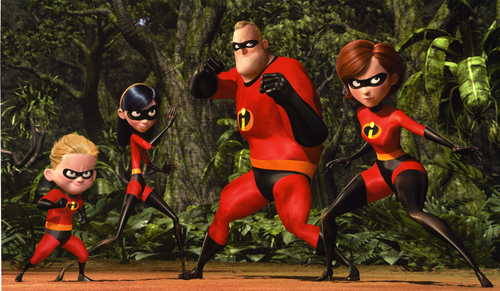
Among all these concerns about Pixar’s sequel fixation, it would be remiss to fail to at least give a mention to the original films the studio does have in development, some of which show strong potential. Their next feature Inside Out remains more than a year away but sounds refreshingly risky, following the interior life of an 11-year-old girl’s emotions, each personified as a character living inside the protagonist’s head. Setting itself apart with its offbeat concept and unusual (for Pixar) choice of a female lead, the material sounds well-suited to Monsters Inc/Up director Pete Docter and Toy Story 3 writer Michael Arndt, both of whom have shown themselves to be experts in the art of guiding and directing emotions. Meanwhile, Toy Story 3 helmer Lee Unkrich’s decision to base his first original film around the richly fascinating Mexican festival of Dia de los Muertos (the Day of the Dead) feels intelligent and adventurous, though more will need to be seen of the concept before any judgement can be passed. However, the omens for The Good Dinosaur are more troubling. The sauropod-human buddy movie has been beset by production difficulties, shunting its release date first from November 2013 to May 2014, then to its current ETA of November 2015; even more concerning is the fact that director Bob Peterson was removed from the project in summer last year, but no replacement has yet been announced, more than half a year later. Tempestuous production histories are not uncommon for Pixar - Toy Story 2, Ratatouille and Brave are all famous for their fraught development schedules and late-stage directorial changes - yet The Good Dinosaur’s problems feel severe even by these standards, and pessimism is likely to continue to surround the film until it has a confirmed director at the very least. The drastic steps taken by Pixar’s management to repair the project show they’re keen to get it right, as well they should be - after all, given the muted-to-negative reception received by their last three films, they must be as keen as anybody to avert suspicions that the studio is on a downward trajectory.
Whatever ends up happening, the next five years will be a hugely important period in the development and history of Pixar. The winning streak they enjoyed from 1995 to 2010 was never going to and could never have lasted forever; now that it’s over, the Emeryville team - which is, lest we forget, still home to some of the most talented artists in the entire business - needs to figure out where they’re going next. Right now, it seems like Pixar are treading water, consolidating what they’ve already built while reducing their margin of risk - all solid business principles, but less than encouraging from a group that transformed an industry and built their reputation on gutsy originality, fresh talent and faith in creative instincts over conventional wisdom. It’s a return to these ideals that would allow the company to avoid its current stumbles turning into a decline lasting years or even decades, a phenomenon that has affected Disney on more than one occasion. For its part, Disney - which only recently emerged from its own most recent slump in the last five or six years - need to avoid the temptation of short-term gains associated with running Pixar like they’re Marvel, or they risk killing the golden goose they went through so much time, money and executive politics trying to acquire. Of course, all of these concerns will be considered moot if one, several or all of the films scheduled by Pixar between now and 2018 turn out to be all-time classics, of the sort the studio used to produce on an annual basis. As ever, only time will tell - in the next half-decade, we’ll know for sure if Luxo Jr’s light is still shining brightly, or if it’s at risk of fizzling out.

10 notes
·
View notes
Text
Cloudy with a Chance of Meatballs 2 (2013)

What’s the point of imitation? There are plenty of answers to that question. Imitation can be a learning tool, a means of practising and developing one’s art; it can be a way of paying tribute, the sincerest form of flattery; it can provide a channel through which to satirise, deconstruct or otherwise comment on an original work or statement. In truth, there are plenty of legitimate, meaningful and productive uses for imitation, and countless artists and thinkers have used it as a means to a wide variety of laudable ends. But what about imitation for its own sake? The act of simply copying something for no reason other than to ape someone else’s style, to attempt to bask in their reflected glory, to simply replicate something unique that somebody else made without adding anything of your own into the mix? That’s a rather trickier practice to defend, and it comes loaded with all sorts of negative connotations. It’s the practitioners of this brand of facsimile that come to mind when you consider the word “imitator” as a pejorative phrase - the copycats, the phonies, the wannabes, the makers of knock-offs, rip-offs and cash-ins. What’s the point of that kind of imitation? It’s a question you might ask yourself more than once while watching Cloudy with a Chance of Meatballs 2. You may struggle to come up with an answer.
Sony Pictures Animation were always going to be up against it in crafting a sequel to the original Cloudy with a Chance of Meatballs, their breakout hit and the movie that really put them on the map. Sure, their 2006 debut Open Season raked in decent money and their 2007 penguin mockumentary Surf’s Up was largely well-liked, but Cloudy was the first Sony cartoon to marry critical kudos to commercial success; since then, its reputation has gradually grown, and the widespread recognition it now enjoys has been hard-won. Released in 2009 with little preceding fanfare and limited brand recognition (Sony’s presence as an animation house was minimal at that time, and the source material was a 32-page picture book by Judi and Ron Barrett with a simple plot and no characters), the movie - which told the story of an inventor who brings first fortune, then disaster to his home town by inventing a machine that makes food rain from the sky - was a strange and unique little film, blending a manic, stretchy visual style, a rapid-fire script and extremely left-field humour with genuine heart and thought-provoking messages. If its recipe was odd, it benefited from being prepared by two of the best chefs in the business - namely, the writing/directing duo Phil Lord and Chris Miller, making their big-screen debut ahead of their future successes with 21 Jump Street and The Lego Movie. Lord and Miller’s voice and sensibilities dovetailed perfectly with the free-thinking-outsider-made-good narrative they crafted out of the premise, creating a delightfully idiosyncratic disaster movie that looked, played and felt like nothing else being produced by the American animation industry, either at the time or since.
Producing a direct successor to a film that built its reputation on its singular, unconventional nature was always going to be a tough ask, but Sony’s job was made even harder by Lord and Miller’s decision not to return for a sequel. With both Jump Street and Lego on their plates, the pair passed directing duties over to Cody Cameron and Kris Pearn, the original film’s story artist and head of story respectively. Lord and Miller retain a story credit and executive producer roles on the new film, but the key creative duties were delegated to successors with relatively limited track records; Cameron, the more experienced of the Cloudy 2 helmers, was involved heavily in developing the Shrek series with DreamWorks, but had only previously directed the direct-to-DVD Open Season 3, while Pearn is a directorial first-timer, despite an extensive film and TV resume. New screenwriters John Francis Daley and Jonathan Goldstein, meanwhile, are mostly known for penning the live-action comedies Horrible Bosses and The Incredible Burt Wonderstone, neither of which received particularly overwhelming critical plaudits. Nevertheless, with Lord and Miller now focused with inept police officers and plastic bricks rather than falling food, the responsibility fell on this inexperienced team to reproduce a work that apparently defies replication, to capture lightning in a bottle for a second time.

It would be lovely to report they succeeded against the odds, but Cloudy 2 sadly emerges as a pale photocopy of the original, a working demonstration of how the effect, impact and meaning of a piece of art cannot be duplicated simply by repeating all the steps involved in its creation in sequential order. I don’t mean to unnecessarily denigrate the abilities, talent or past work of Cameron, Pearn or anyone else involved in the production of this sequel, but there’s no getting around the fact that the visionary touch and inimitable sense of identity brought to the original by Lord and Miller is simply not present here, and nothing offered up in its stead represents anything like a sufficient replacement. As previously discussed in my review of The Lego Movie, I believe Lord and Miller to be geniuses in their own way, and stepping into their shoes was always going to be a daunting and difficult problem to solve - however, Cameron and Pearn never really come close to an adequate solution, choosing instead to simply repeat what came before, while filling the gaps with off-the-shelf plot elements and shop-worn thematic ideas that their predecessors wouldn’t have touched in a million years. The resulting experience offers fleeting moments of surface pleasure and the external impression of comforting familiarity, but feels hollow, underdeveloped and underthought at its core.
It’s a shame, because the basic premise of Cloudy 2 - devised by Lord and Miller alongside Erica Rivinoja - is a decent one, eschewing the plot of the Barretts’ book sequel Pickles to Pittsburgh in favour of a Lost World-style concept that sees our hero Flint Lockwood (Bill Hader) heading a recovery expedition to his island hometown of Swallow Falls, which has become a wild jungle populated by sentient food creatures. It’s an idea that offers up plenty of potential if married to the right creative voice, but it becomes clear all too quickly that the new directors are struggling to develop an identity of their own, with alarm bells sounding before the film even gets underway. The first movie opened with a lovely, generous title card reading “A film by a lot of people”, a rare upfront acknowledgment of the collaborative nature of filmmaking that set the tone for the witty, unorthodox adventure that was to come; the sequel, unable to add anything new to this statement, simply reiterates it, calling itself “Another film by a lot of people”. This, too, establishes the mood for the 95 minutes ahead, but not in a positive way - it creates expectations of a film happy to repeat its predecessor’s ideas, rehash jokes and concepts we’ve already seen, and repurpose moments of fresh, anarchic creativity as predictable catchphrases and in-jokes. Sadly, these are expectations Cloudy 2 meets early, and often. The once unique animation is now simply the house style and its impact dulled as a result, while many of the first film’s gags - the exaggerated reaction shots, Steve the Monkey’s translator-enabled non-sequiturs, Tim Lockwood’s fish analogies - feel like they’re here because the directors think the audience expects them in a Cloudy movie, rather than because they’re still unconventional, funny ideas. Characters that surprised and delighted with their offbeat, unexpected weirdness the first time around - Manny the taciturn, multitalented Hispanic cameraman, Brent the unhinged and developmentally-challenged former child star - are dutifully shoehorned into the plot again, repeating their old shtick with diminishing returns. Naturally, it’s to be expected that any sequel will call back to older material to at least some extent, but all too often it feels here as though the refreshingly bold, surprising ideas Lord and Miller came up with for the first film have ossified into a stale formula the second time around.
Compounding the problem is the fact that so little of the actual new material Cameron, Pearn and co come up with for their film really works, either on its own terms or within the groundwork Lord and Miller left behind. Its main storyline - which picks up literally seconds after the conclusion of the first - revolves around the character of Chester V (Will Forte), a Steve Jobs-esque corporate magnate and scientific pioneer who takes responsibility for the cleanup of Swallow Falls, before later funding an expedition to shut down Flint’s food-generating machine once and for all. A whimsical mentor figure who (we’re told) is Flint’s childhood hero, it pretty quickly turns out that the millionaire inventor’s motives are less than pure, and he soon begins using his oily charisma to manipulate the Swallow Falls mission - and Flint’s naive hero worship - for his own advantage. As Cloudy 2’s primary addition to the overall mythos, Chester ends up exemplifying many of the sequel’s wider creative failings. He isn’t without his charms - his boneless, fluid style of movement is one of the few genuinely fresh visual ideas on display - but he’s a thinly-written character, with surprisingly little satirical play made of the obvious Jobs/Apple parallels, while his turn to villainy is well-telegraphed and obvious. Meanwhile, the film’s attempts to convince us of Chester’s significance and importance - both to Flint and to the viewer - fall flat, with a heavy whiff of retcon floating around early flashback scenes that tell us of the entrepreneur’s pivotal (yet previously unmentioned) role in inspiring the young Lockwood to follow the path of science, making our hero’s subsequent adulation of the character hard to swallow.
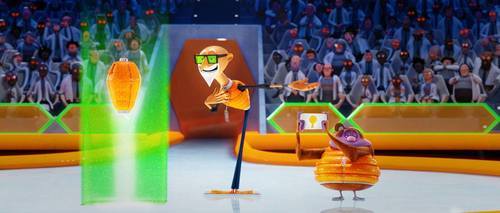
This would be less of a problem if Chester’s presence was used to facilitate the exploration of an interesting, fertile story concept, but any hopes of that are dashed around halfway through, when Chester’s influence over Flint cause him to turn against his friends, and it becomes clear that Cameron and Pearn have built their narrative on one of the most tired and creatively barren thematic concepts in the book. It’s a deeply dispiriting moment, considering the film’s pedigree. The first Cloudy was a heartfelt and sincere tribute to originality and outside-the-box thinking, and its desire to live by those convictions were etched into every frame; to follow that up with a hoary, banal sermon about how it important it is to be nice to and trust in your friends - perhaps the most generic children’s movie cliché there is - demonstrates a crushing lack of imagination. More disappointing still is the way in which the film struggles to maintain its predecessor’s progressive approach towards science, which was one of its most laudable and striking qualities. Mainstream American animation (and Hollywood filmmaking as a whole) generally has a bit of a problem with scientists, often depicting them as enemies of free-spirited imagination or arrogant destroyers of the natural order, so the first Cloudy’s commitment to championing scientific curiosity and intellectual thinking over populist, reactionary interests felt remarkable, especially within the confines of the frequently science-phobic disaster movie genre. By casting Chester - a scientist with selfish, evil interests at heart - as the villain of Cloudy 2, the sequel reverts depressingly to type, its leave-nature-alone overtones feeling like a dreary reinstatement of an established ideological status quo that the original so energetically opposed. None of this comes across as overt or intentional - I don’t claim or believe for a second that Cameron and Pearn are actually anti-science, but these bland, unchallenging and conformist subtexts were foreseeable and avoidable consequences of assembling a film out of received ideas, generic concepts and well-worn story formulas. The fact they chose to do so anyway shows a confusing lack of understanding of their predecessors’ work, particularly given the key roles they played in developing it.
With all that said, it wouldn’t be accurate to describe Cloudy 2 as a joyless experience, or even an overtly unpleasant one. Blandness and predictability are unquestionably cardinal sins when making a sequel to a Lord/Miller movie, but they’re not enough to render a film unwatchable. And unwatchable Cloudy 2 is not - riding so heavily on the coattails of the superior original robs the movie of its chance to greatness, yet it also shields it from outright mediocrity. As discussed, the Cloudy brand of visuals have lost a lot of their impact due to the unimaginative way they’re reused here, but they remain colourful, dynamic and interesting to look at, especially since nothing has come along since 2009 that really matches them. Similarly, this cast of characters retain a lot of their residual goodwill from the first film, and there is undeniable - if shallow - enjoyment to be had spending more time in their company, even if they’re not doing anything particularly compelling this time around. It would also be unfair to neglect the fact that Cameron and Pearn’s film does have one undeniable strong suit, of which it takes advantage to the best of its ability - puns, both visual and verbal, flow in abundance here, and even those who are aggressively turned off by the remainder of the film will struggle to stifle at least a small smile at some of the wordplay at work here. Indeed, Cloudy 2’s menagerie of sentient food monsters is one of its few aspects that approach the level of intelligent silliness you’d have hoped for, marrying pun-tastic species names such as Tacodile, Mosquitoast, Shrimpanzee, Cantelope, Meatbalrus, and Apple Piethon with eye-catching, visually witty designs. Similarly, it’s hard not to laugh when the script occasionally hits a stride and throws up food-based gems such as “there’s a leek in the boat!” or “stand back, I’m going to cut the cheese!”, even if such moments of sharpness are few and far between.
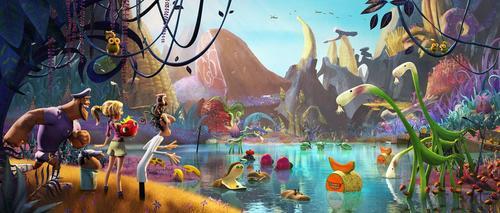
Meanwhile, the voice cast - most of whom are veterans of the first film - can’t really be faulted for the broad failure of the material, and largely do a commendable job. Bill Hader and Anna Faris are reliable anchors once again, even if Faris’ affable role as nerdy meteorologist Sam Sparks is disappointingly downplayed, while Andy Samberg (Brent), Benjamin Bratt (Manny), James Caan (Tim Lockwood) and Neil Patrick Harris (Steve the Monkey) make the most of the scraps they’re given by the script. Of the new additions, Will Forte - who played a generic citizen of Swallow Falls in the original - commands the most attention, playing Chester V with appropriately unctuous smoothness, but the character isn’t written well enough to be anywhere near as impactful as Bruce Campbell’s grotesque Mayor Shelbourne, the first film’s villain. More memorable is Barb, Chester’s neglected hyper-intelligent orangutan sidekick who gradually develops a conscience; she ends up being a disarmingly sympathetic character, although you feel that has more to do with actress Kristen Schaal’s innate likeability than the skill of the scripting. The only cast member who isn't quite up to speed is Terry Crews, who’s been left with the thankless job of replacing the absent Mr T as gung-ho town cop Earl; Crews gives it his all, but there’s no duplicating the unique brand of off-kilter, semi-parodic macho aggression the former A-Team star brought to the role, simply by virtue of who he is. In struggling to step into the shoes of an iconic predecessor, Crews’ difficulties mirror those of the film as a whole.
It’s hard to avoid feeling a little deflated by the time Cloudy with a Chance of Meatballs 2 reaches its perfunctory ending; most animation fans will have gone into this one with diminished expectations due to Lord and Miller’s no-show, but many will have at least hoped that the sequel might be a creditable companion piece, or at least a passable tribute act. Sadly, what they’ve received instead is a waxwork copy of the original - faithfully replicated on a surface level, but with all of the interior fundamentals absent, leaving the finished article inert and lifeless behind the eyes. In the absence of any interesting questions being asked by the film itself, it falls to the viewer to ponder the implications of its artistic failure. One wonders, for example, where Sony goes from here: the early promise of Surf’s Up and the original Cloudy seems increasingly faded now the studio’s copybook has been blotted by two reviled Smurfs movies and the underwhelming Hotel Transylvania. With nothing on their upcoming schedule but sequels to those films, plus a Popeye adaptation from two of the Smurfs writers (plus director Genndy Tartakovsky, who couldn’t save Transylvania from being a critical flop), it feels like with Cloudy 2, they may have let their best chance of ascending to their early heights again pass them by. Or have they? Was maybe this a project that was doomed from the outset, a futile effort to copy the uncopyable, to approximate a filmmaking voice that simply defies mimicry? Only time will tell whether Lord and Miller’s particular brand of lunacy is truly as unattainably unique as Cloudy 2’s fumbled attempts at facsimile make it appear, but it seems certain that Sony’s live-action division will be breathing a sigh of relief that the pair are back on board for 22 Jump Street, even as a shiver of apprehension runs down the spine of Chris McKay, the director heading the team tasked with creating a sequel to Lord and Miller’s masterpiece The Lego Movie without them. They will undoubtedly be hoping that a bolt of inspiration strikes them from above, and soon - imitation, it seems, will only get you so far.

#cloudy with a chance of meatballs 2#animation#review#movie critique#cloudy with a chance of meatballs
5 notes
·
View notes
Text
Get a Horse! (2013)
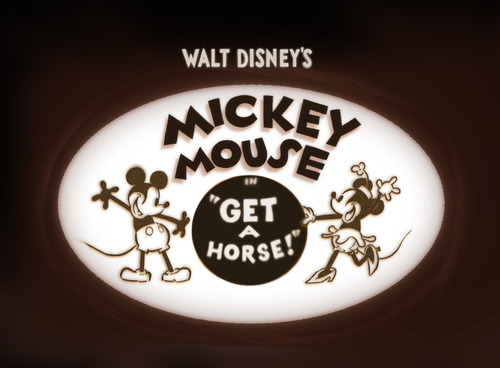
Is it just me, or have Disney come over all nostalgic in the last few years? Silly question, maybe - after all, the Walt Disney Company have long been the emperors of nostalgia, making billions each year through their ownership and commodification of the world’s collective childhoods - but there’s something misty-eyed about their recent output that feels a little more heartfelt and inward-looking than their usual brand of self-reverence. It’s probably no coincidence that this sudden onset of self-examination has coincided with the studio’s recent 90th anniversary, and it’s all over projects like Saving Mr Banks, the company’s Tom Hanks-fronted tribute to its iconic founder Walt (as well as Mary Poppins, one of its most beloved films), while many of its most recent animated features have also been informed by a desire to reclaim, reestablish and contemporise Disney’s oldest traditions and hallmarks (a process continued with its current fairytale hit, Frozen).
With all of this self-reflection and reassessment of Disney family values swirling around, it was always going to be inevitable that the focus of rumination would soon fall upon the little fella whose image is still plastered above the animation division’s logo, who is so intrinsically tied to Disney that you can evoke the company’s entire creative ethos and history just by drawing the outline of his ears. Mickey Mouse celebrated a milestone of his own recently - he turned 85 in November 2013, one month after Disney’s 90th - so now seems as good a time as any to consider what this character actually represents in the 21st century. On the surface, all seems well in the Magic Kingdom - Mickey’s still meeting and greeting thousands at Disney World each day, his cheerful face shifts millions of memorabilia products globally, and he remains one of the most famous and recognisable fictional creations of all time.
But what is he actually famous for, nowadays?
In the past, the answer was - as it should be - cartoons, as the mouse established his fame in countless Oscar-nominated shorts, before branching out into theatrical features, TV specials, comics, Saturday morning shows and more. Yet in the last few years or so, the creative output of the industry icon has stalled somewhat, his animated appearances becoming less and less frequent, his appeal growing more and more historical, his happy-go-lucky persona feeling increasingly antiquated and irrelevant. If Disney remain beloved, it was due to the ongoing quality of their non-Mickey-oriented work; the mouse was still an iconic symbol, but what he represented had changed. He had become the face of the arch-capitalist, merchandising-driven arm of the company, a litigious embodiment of cultural colonialism that regularly seeks to redefine copyright laws for its own ends and peddle Mickey-branded tat to as many generations of impressionable humans as possible until the world’s end. It’s a poor fate for a character that was once part of the vanguard of artistic innovation in Hollywood, but it’s one that Disney invited upon the mouse by reducing him to little more than a corporate masthead - hence South Park’s well-publicised satirical skewering of Mickey as a ruthless business mogul in a memorably vicious 2009 episode.
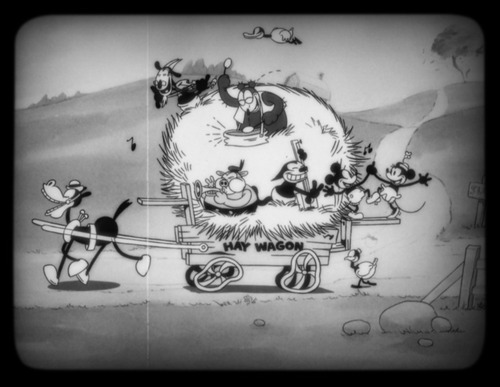
Belatedly, Disney have noticed they were at risk of losing the soul of their signature creation, and seem to have made the reclamation of Mickey’s identity a key priority. For the first time in a long time, Mickey Mouse is being pushed to the forefront of the company’s creative endeavours, rather than being lifelessly managed as a commercial brand. The Disney Channel has seen great success with its recent series of all-new Mickey shorts, overseen by Cartoon Network alumnus Paul Rudish, with three Emmys already in the bag courtesy of the delightful French-inspired episode “Croissant de Triomphe”; there’s even been discussion of handing the character his first starring role in a feature-length film, though it remains to be seen how and if these plans will come to fruition. Yet Mickey’s already back on the big screen - and the awards trail - with Get a Horse!, an innocuously titled yet superlative seven-minute sketch that has claimed both an Annie win and an Oscar nomination. Given prominence through its attachment to theatrical screenings of the blockbuster Frozen, it may be the canniest and most intelligent use of the rodent superstar in several decades. If Disney do succeed in reviving interest in Mickey in the long term, they’ll owe a tremendous debt of gratitude to Get a Horse!; even if not, the short film will still stand as a work of supreme invention and ingenuity.
Directed by Lauren MacMullan, the unveiling of Get a Horse! to the media last year was something of a secretive affair. Disney’s official synopsis and introduction for the short was deliberately vague and generic, obfuscating whether this was a recently-discovered vintage artefact from the Disney Vault, or an all-new production emulating an old-school style. In truth, it is neither, and the film’s gradual unfolding of its conceptual surprises plays out like a skilled performance of old-school stage magic. An obvious point of comparison would be Chuck Jones’ seminal deconstructive Daffy Duck short Duck Amuck, but its approach is also oddly comparable to Drew Goddard and Joss Whedon’s 2011 horror satire The Cabin in the Woods, in that it’s an ostensibly straightforward genre piece that quickly gives way to something altogether more meta and self-parodying; like that film, it’s also best enjoyed with an open mind and the bare minimum of preconceptions, so as to let its left turns and sudden about-faces be experienced as purely as possible. From that perspective, Disney’s cloak-and-dagger theatrics were more than justified, as the overwhelmingly positive reactions to the short have proven; still, it’s impossible to properly discuss Get a Horse! without venturing into “spoiler territory”, as the nature of its surprises - and the unique blend of styles and influences they create - is key to the short’s appeal.
Even before it starts revealing its true purpose, Get a Horse! is filled with simple pleasure on a surface level, applying a deft finishing touch to Disney’s recent aesthetic and conceptual overhaul of their icon. Anyone who’s seen Mickey in his recent appearances will have noticed he’s been taking on something of a new look - or, more accurately, an old one. Gone are the skin-toned face, white sclera and oversized gloves with which the character has been depicted since 1938 - modern Mickeys, including those featured in Rudish’s TV shorts and the recent Epic Mickey videogames, have returned to his 1920s roots for their primary inspiration, bringing back the pure white features and black dot eyes that the mouse sported during his nascent years of monochrome existence. Get a Horse! takes this trend to its logical conclusion, opening as an immaculate recreation of the very earliest Mickey shorts, right down to the tinny soundtrack, weathered film stock, 4:3 aspect ratio and - in one of the film’s most pleasantly reverential touches - the use of archival recordings of Billy Bletcher, Marcellite Garner and Walt Disney himself as the voices of Peg-Leg Pete, Minnie and Mickey respectively.
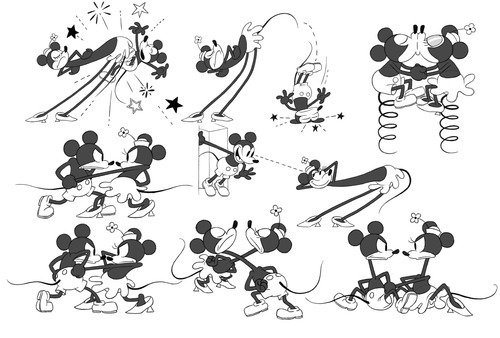
Overseen by the ever-reliable Disney veteran Eric Goldberg, the 2D portion of Get a Horse! is flawlessly observed, passing perfectly for a genuine relic of 1920s animation, but it’s the capturing and reclamation of Mickey’s personality that really makes the short shine. Disney, it appears, has been aware of the waning attraction of the character’s golly-gosh nice-guy persona, and is making a conscious effort to reintroduce his more rascally, mischievous tendencies. After all, these were the traits that gave the mouse such a vibrant screen presence back in the days when similarly impish comedians like Charlie Chaplin and Buster Keaton were his peers and contemporary influences; moreover, it’s the loss of these characteristics that have since made Mickey a slightly anodyne presence, especially when compared to his Warner Bros counterpart Bugs Bunny, who has retained his appeal over the years thanks to the timeless quality of his witty patter and slapstick antics. If there was ever a time when Mickey’s brand of squeaky-clean heroism was fashionable, it’s long since passed, and Disney - probably partway through adding up the billions in profits they’re making on Tony Stark and Captain Jack Sparrow merchandise - seem to have finally noticed. As such, the 2014 version of Mickey is a trickier animal, filled with cheeky charm and impudence, and always one step ahead of his antagonists - all while retaining his essentially good-hearted nature. Sure, it’s a throwback, but it’s also a sensible and overdue change. Similarly, Mickey’s old-school physicality makes a welcome return, characterised by spaghetti-like limbs, flowing movement and a willingness to put aside conventional physics for the sake of a good visual gag. The idea of contemporising a concept by returning to aesthetic conventions popularised in the 1920s might seem perverse, but in truth, audiences never really lost their capacity to respond to these techniques when done well, as the success of fluid-looking shows like Adventure Time has proven. In Mickey’s case, the rubbery trickster version of the character is simply a lot more fun to look at and to spend time with; watching the opening of Get a Horse! would suggest Disney’s animators agree.
Yet it’s only after a couple of minutes - when Mickey’s tangles with the villainous Pete result in his ejection through the front of the screen, into the modern world of 3D - when McMullan’s short breaks from its illusion of conventionality, and the fun really starts. Breaking the fourth wall isn’t a new idea in animation or in cinema, but there’s something that feels fresh and surprising - not to mention pleasingly literal - about the way that Get a Horse! handles the concept. The creative team mine the material to its fullest potential over the course of the seven minutes, seemingly relishing the comedic and visual possibilities the idea provides. Following his emergence into the “real world”, Mickey and trusty steed Horace - an underused character making a welcome return - conspire to take their revenge on Pete from both sides of the screen, moving in and out of the image, flipping the frame and interfering with the film reel to subvert the flow of gravity and time for their own ends. It’s a high concept that really soars - McMullan and co use this framework to orchestrate imaginative physical comedy setpieces that humorously weaponise the techniques and technology of classic film, in a way that classic cinema aficionados will adore. They also revel in creating visually fascinating juxtapositions of monochrome 2D and full-colour 3D imagery, providing an impressive showcase of the growing prowess of Disney’s CG animators in the process. Walt Disney Animation Studios has made great strides in blending the best of hand-drawn and computer-designed animation over the last few years, as films such as Tangled, Frozen and the short Paperman have shown, but seeing a style as quintessentially traditional as 1920s rubber hose animation brought as vividly and beautifully to life in CG as it is here makes you believe the gap between the two mediums may have been closed almost completely. On top of all this, the short film also proves to be one of the most persuasive advertisements yet for the merits of stereoscopy as a visual storytelling device, using the 3D illusion both subtly and ostentatiously to sell the illusion of two worlds existing on either side of a thin screen. Get a Horse! joins a short but growing list of works that relies upon 3D technology to achieve its creative goals - thus, it runs the risk of being artistically diminished upon leaving cinemas, unless the industry is able to reverse the general public’s current apathy about stereoscopic entertainment in the home. Until that happens, it’s best to take your few remaining chances to see this one in theatres.
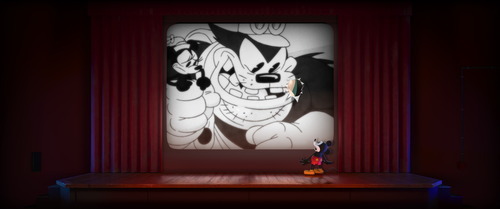
Still, for all this discussion of what Get a Horse! does and how it does it, its most important potential contribution to animation history comes from what it is - an innovative, brazenly creative, crowd-pleasing and uproarious bit of animation, starring Mickey Mouse. For many younger audience members, this will be the first experience they’ve ever had of laughing aloud at a Mickey Mouse cartoon, while even those who have done so before will be rediscovering the sensation for the first time in decades. It has been far, far too long since this beloved icon of cinema truly lit up the silver screen, took centre stage in a film that pushed the boundaries of the medium, and really felt like a movie star for a modern audience - and yet here, in 2014, he’s up there doing it again, looking like he hasn’t aged a day. The climax of Get a Horse!, in which the battered cinema screen collapses and gives way to a triumphant full-colour rendering of Mickey and pals dancing and cavorting in a pristine CG recreation of their 1920s homeland, feels less like an ending and more a promise of things to come; Mickey has metaphorically broken free of the history that had come to suffocate him, and is ready to stand at the forefront of Walt Disney Animation Studios’ creative endeavours once again.
Whether or not this comes to pass depends, of course, on Disney’s continued handling of the character in the years to come, but McMullan and her team deserve to be recognised for drawing a line in the sand and making a statement that Mickey Mouse can be - and deserves to be - a real cartoon character, not a corporate brand; that he he still has the personality and presence to star in dynamic, visually inventive and genre-expanding works; and most importantly, that he’s a mascot to be loved, rather than simply recognised. Get a Horse! may not have won the Oscar in the end, but it may well have won back the soul of Mickey Mouse, and that’s worth more than all the golden statues in the world.
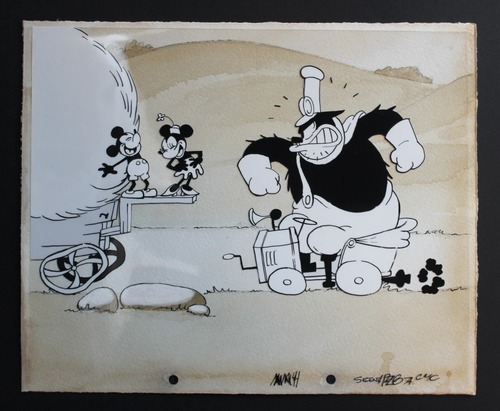
8 notes
·
View notes
Text
The Lego Movie (2014)

How do you define the line that separates talent and genius? And when do you decide when someone’s crossed that boundary? It’s a subjective question, and a bit of a loaded one. It is, after all, a failing of 21st century society that we have something of a tendency to overuse and subsequently devalue superlatives, casually tossing around words like AWESOME and BLOCKBUSTER like cheap confetti, until they just become run-of-the-mill words used to prettify the mundane. On our rapidly-moving cultural conveyor belt, this week’s “masterpiece” can easily become next week’s forgotten postscript; 2014’s “genius” might be 2015’s punchline, a phenomenon known as the “M. Night Shyamalan Effect”.
That’s why I feel the need to stress that it is only with due consideration and extensive reflection that I make the statement that Phil Lord and Christopher Miller, writers and directors of The Lego Movie, are kind of geniuses. It’s taken them a few films to prove it - though fewer than most need to earn that designation - but at this point, it’s become clear that they are possessed of an incredibly special and remarkable talent, the likes of which we may not see again for a long time. Not only do the duo have an unmistakable, unique voice that rings clear through each film they make, but it’s becoming clear they have some deeply interesting things to say - and an uncanny ability to repurpose even the most unprepossessing material into a viable medium through which to speak.
Witnessing the sudden and meteoric ascendancy of Lord and Miller in the last five years has been a surprise of the most delightful kind. Sure, they showed signs of their talent with Clone High, their sly, anarchic and sadly short-lived animated MTV sitcom (which saw them become two of the industry’s youngest ever showrunners), but it’s only since their debut feature - 2009’s Cloudy with a Chance of Meatballs - that their star has really risen, and the extent of their Midas-like powers have become clear. The pair are capable of true cinematic alchemy, taking ideas and concepts that sound utterly dreadful on paper and locating heart, soul and meaning within them. Cloudy - a thin 32-page children’s picture book with no actual characters - was turned into a brisk, witty sci-fi disaster movie that also managed to pay sincere tribute to the power of intelligence, scientific curiosity and original thinking; their follow-up, 2012’s live-action comedy 21 Jump Street, took an unfashionable and horrendously dated 1980s crime drama series with a laughable premise (young-looking cops investigate crimes in high school!) and transformed it into an absurdist, satirical triumph, expertly deconstructing high school movie tropes and gently critiquing the recycled nostalgia industry, of which it was ostensibly a part.
For their third feature, The Lego Movie, Lord and Miller have crafted a cast-iron instant classic that feels like it will be judged by history as being their signature film, no matter where else their careers might take them. Lego takes what may appear to be the worst concept they have yet handled - a movie based on a range of plastic toy bricks - and turns it into not only their best piece of work to date, but also a manifesto for the Lord/Miller ethos, a deep insight into the way they regard life and art. It is a generous, joyful, thoughtful and constantly surprising film, one which has something to say to anyone who has ever taken time to play, imagine and create.
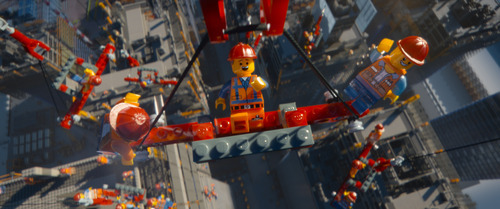
That this could be achieved within the confines of a film that many had pegged as a 90-minute advertisement for a multinational company seems remarkable, but in truth there’s an argument to be made that Lego - far from being a questionable choice of subject - may actually be the perfect partner for Lord and Miller. After all, the Danish toymaker and their products hold a uniquely sacrosanct place in the hearts and minds of several generations of children and parents, who revere the Lego range for its fascinating engineering and encouragement of creative play. As such, an offbeat subculture and nebulous sense of identity have sprung up around the toy, a melting pot of different universes and inspirations based upon and driven by the imaginations of its users, and curated with tact and humour by the brand’s overseers. The “world” of Lego may not have a defined sense of place and character in the manner of Hasbro’s Transformers or Mattel’s Barbie ranges, but it has something far more valuable to artists with sensibilities like Lord and Miller’s - a feeling of a communal imaginative space where the rules of reality are shifting and flexible, yet everything feels unified by the iconic visual identity of the bricks and minifigures themselves. It is a world in which dragons can chase flying cars, where buildings can become spaceships and crocodiles can have police sirens mounted on their heads - and the audience will accept it all unquestioningly, because it’s a world they’ve lived and played in before, and may have helped to create at one point in their lives.
Lord and Miller take the iconography inherent to the Lego aesthetic and - quite literally - build upon it a thousandfold, creating one of the most visually arresting animated films of recent memory. The duo already proved with Cloudy that they’re able to produce fresh-looking films even within the somewhat homogenised field of CG animation, but even that achievement is dwarfed by what’s on show here. Those who have experienced one or more of the Lego videogames may feel they’ve seen what a Lego world looks like in motion, but - with all due respect to the excellent work of TT Games - the movie interpretation is on another level entirely, a magnificently tactile plastic universe of infinitely intricate construction and breathtaking scope, ready to be disassembled, reassembled and reconfigured according to the demands of a fever dream storyline that passes through towering cityscapes, Western deserts, skybound utopias and more. The staccato stop-motion-inspired jerkiness of the animation style works perfectly in tandem with the deliberately artificial visuals, giving the entire enterprise a playful, homemade quality that serves the needs of the story more perfectly than you could possibly realise without witnessing it first-hand. It’s a film that provides deep joy simply by looking at it, and marvelling at the way in which even the particle effects - smoke, steam, fire, churning water - have been rendered in Lego bricks, or admiring the level of charisma the animators have been able to draw from a principal cast who - thanks to the film’s insane level of commitment to the toyline’s key design principles - possess only six points of articulation each.
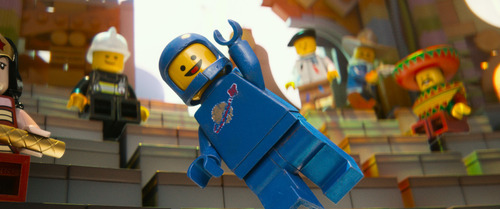
What’s most impressive about these visual choices is that they do not exist in a vacuum. Most filmmakers would kill to be able to utilise an aesthetic this striking even as a simple embellishment, but Lord and Miller have recognised the potential of their beautiful toybox as the basis for a remarkably textured discussion of the mechanics and purpose of play itself. The Lego Movie is set in a wholly artificial world, created from generic plastic parts and populated by generic plastic people, and yet - both on a narrative and a filmmaking level - it’s brought to life by the creative playfulness of those with the ability to reshape and recreate it into strange new forms. As such, it’s a perfect setting in which to examine play as a means of expressing and refining one’s own capacity to create original, individualistic ideas, exceeding the predefined boundaries laid down by urbanised society. But the film goes much further than that; frankly, I can’t remember the last time an animated film alluded to so many intriguing philosophical themes, let alone with such a light, effortless touch as is employed here. It ponders the delicate balance and occasional conflict between freewheeling creativity and formalised social structure; it champions the individual’s personal right and responsibility to explore, realise and embrace their own ability to create; more than anything, it argues passionately in favour of a world defined by the free, confident exchange of ideas, unfettered by insecurity, stigma, judgement or prohibition. You get the feeling that the messages of this film come from a place of tremendous honesty, and the candid insight it gives you into Lord and Miller’s personal ethos goes some way to explaining how they are able to do the things they do.
True, the directors’ earlier work on Cloudy contained echoes of many of these themes, but Lego’s discussion of the ideas is richer, more expansive and impassioned, in large part thanks to the seamless marriage between the film’s source material and thematic core. Perhaps its single best choice is its wonderfully conceived protagonist Emmet Brickowski (Chris Pratt), a wholly unremarkable schmo whose living consists of constructing characterless, identical skyscrapers according to a strict instruction sheet, and who has been made cheerfully supplicant by a homogenous culture that crushes aspiration through the celebration of banal mediocrity - a plot point conveyed with maddeningly catchy effectiveness by the film’s anthem “Everything is Awesome”. Emmet is a feckless, guileless nobody, too lacking in backbone to even be considered an everyman, but Pratt’s performance brings an innocence and charm that makes him sympathetic and relatable - particularly in an early scene where the true extent of his insignificance is brought home to him. Thus, when the punky freedom fighter Wyldstyle (Elizabeth Banks) and the wizened mystic Vitruvius (Morgan Freeman) - a pair of “Master Builders” with the ability to creatively reassemble their surroundings into new forms - enter his small world and task him with saving it by thinking for himself for the first time, the thematic resonance is twofold. On the surface, it parallels the slight tension between the two styles of play encouraged by Lego - follow by rote, or be adventurous? - but on a deeper level, it’s a scenario that provides the perfect platform for exploring Lord and Miller’s chosen themes. How do you innovate when society encourages you to paint within the lines? How do you generate your own ideas when you don’t believe yourself capable of it? What separates art from order, and what unites them? Emmet’s story is one for anyone who’s ever been presented with a blank sheet of paper and spent ten minutes staring at it blankly, while others around them scribble away.
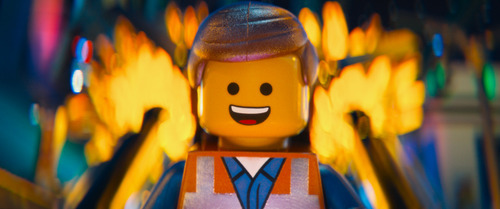
The Lego Movie is far from the first piece of art to analyse the role of the artist and creator in society, but I struggle to recall the last time it’s been dealt with in such a refreshingly egalitarian way. It’s disappointingly common for writers and directors to present this subject in a somewhat condescending, self-serving way - either by design or through unintentional bias - by lionising those with The Great Gift of Artistic Vision as superior beings, and denigrating those without it as being lesser creatures at best, outright enemies at worst. Naturally, this can be a sticking point for those who - both in Lego and in life - usually prefer to follow the instruction sheets, rather than taking the virtuoso approach. Those of us who are consumers and critics by nature, rather than creators, are often perfectly happy and fulfilled in appreciating the work of others instead of producing their own, and ought not to be judged as drones, dullards or enemies of individualism and non-conformity because of it; happily, thanks to the subtlety and consideration of its didactic approach, The Lego Movie manages to avoid doing any such thing. Certainly, the idea of empowering the artistic is its core theme, but the directors take pains to present this idea in a balanced way. One key scene acknowledges that sometimes, inside-the-box conventional thinking IS a useful skill, and can provide a grounded perspective often missed by those prone to flights of fantasy; furthermore, the film is careful to clarify its point that free expression and creative liberty is EVERYONE’s right, rather than being the sole preserve of an artistic elite. In Lord and Miller’s plastic paradise, not everyone can have great ideas all the time, but as long as everyone feels confident and willing enough to bring what they have to the table, you’ll be well on your way to building a better world.
The wealth of ideas on display in The Lego Movie is overwhelming, putting to shame dozens of more overtly artistic and contemplative films with the breadth of its ambition. There’s much more packed into its 100-minute runtime than can be absorbed in a single sitting, and many of its most interesting concepts are wrapped up in intricate narrative twists that are honestly too good to spoil here. But perhaps the most remarkable thing is that most of the time, you won’t even notice the complexity of the ideas you’re absorbing, because you’ll be laughing too much to realise it. Thanks to the memorable humour of its videogame incarnations, the Lego brand has developed a surprisingly strong comedy pedigree in the last few years, and the movie maintains that tradition with a crackling script that is just the right shade of offbeat and punchlines that are delightfully left-field; what’s doubly impressive is that it’s able to cultivate this cracked sense of humour without sacrificing its breadth of appeal, meaning there’s truly something for everyone here. Pratfalls? Check. Puns? Check. Witty trope deconstructions? Check. Visual non-sequiturs? Pop culture references? Social satire? Batman jokes? Charlie Day screaming the word “SPACESHIP”? All check. As previously proven on both Cloudy and Jump Street, Lord and Miller have rock-solid comedy credentials, but what’s most surprising is how much bite they’re willing to give the humour, even to the point of occasionally nipping the hands that are feeding them. As reverent as the film is about the Lego brand and its surrounding culture, a few moments feel slightly barbed - one quick gag hand-waves away the existence of several lesser-loved Lego toy lines (throwing the likes of Bionicle and Lego Friends under the bus), while another plot point laments the growing separation and divisions between the various Lego realms, which feels like an acknowledgment of the real-life criticism the company has sometimes faced for fragmenting its once-universal product into an increasingly large range of licensed sub-lines. Meanwhile, Warner Bros’ involvement in creating the film has given the makers licence to use a number of DC Comics characters (their Marvel counterparts, of whom Lego also make toys, are notable by their absence); their portrayal is often cuttingly - if hilariously - irreverent. Batman’s position in the pop culture pantheon is secure enough to survive Will Arnett’s depiction of the character as a hyper-macho, self-obsessed jerk, but if DC thought allowing Green Lantern to appear in the film would help to restore his reputation after the failure of his live-action movie debut in 2011, then allowing Lord and Miller to parody him as a needy, socially-ostracised nerd played by Jonah Hill probably wasn’t the best way of achieving it.

That said, if the corporate bean-counters were made uncomfortable by any part of The Lego Movie’s anarchic agenda, that clearly hasn’t filtered down to any of the other members of the crew, whose joy in making the film bleeds through every frame. This extends to the cast, a perfectly-judged blend of game A-listers, reliable character actors, proven comedians and well-chosen star cameos. Chris Pratt and Elizabeth Banks, as protagonists Emmet and Wyldstyle, handle the laughs and pathos with equal comfort, while the likes of Will Arnett, Charlie Day (as hyperactive spaceman Benny), Nick Offerman (as gruff robo-pirate Metalbeard) and Alison Brie (as the emotionally unstable fantasy creature Unikitty) all get plenty of opportunity to prove their comic chops. There’s also plenty of joy in hearing the Oscar-nominated talents of Morgan Freeman and Liam Neeson (as the morally conflicted henchman Bad Cop) wrapping their distinctive vocal cords around truly absurd lines; both are clearly having a ball. Special praise should also be reserved for Will Ferrell, whose role as the creativity-hating corporate villain Lord Business turns out to be much more complex than it first seems. He tackles the initial comedy megalomania with as much gusto and as little restraint as you’d expect, but he also gets a chance to show some impressive versatility when the script’s demands change later in the film. Some of Ferrell’s third-act scenes require him to play things straighter than he’s been used to doing for most of his career, but his contributions help these memorable sequences to ultimately form the emotional bedrock of the entire film.
Ultimately, a team effort makes The Lego Movie the fine work of storytelling, animation and comedy that it is, but it’s the touches of genius brought by its uncommonly gifted overseers that elevate it to the status of genuine modern classic. A sequel has been greenlit - of course a sequel has been greenlit - but it’s difficult at this point to imagine what else is left to say in the world of Lego. This film’s title - as bland as it once sounded - proves to hold more meaning than it seems; this is THE Lego movie, a comprehensive artistic statement that captures the essence of everything important and meaningful about the legacy, culture, experiences and emotions associated with the 65-year-old toy brand, and the generations of children and parents who have embraced it. That’s a hell of an achievement, and it’s near impossible to imagine lightning striking twice, especially if Lord and Miller - who have given no indication they might be involved in the follow-up - aren’t on board. Still, if the makers of the sequel take the lessons taught by this film to heart, you can’t count it out. After all, The Lego Movie is a film that expends immeasurable quantities of love, energy, craft and skill teaching us there’s no such thing as an idea that isn’t worth having, that any of us can contribute to a better world simply by being open and receptive to new concepts and creative risks. If the filmmakers of the future heed the rallying call - whether working on Lego movies or otherwise - we could find ourselves living in a world where new Phil Lords and Chris Millers emerge every year, where fascinating and offbeat ideas thrive, where films as good as The Lego Movie are the norm, rather than the rare, cherished exception - where everything, truly, is awesome. And that sounds pretty awesome to me.
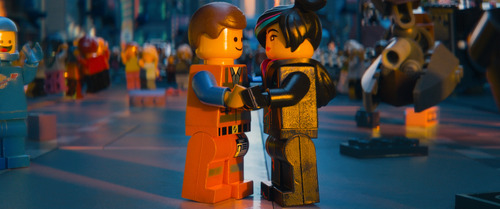
6 notes
·
View notes
Text
Frozen (2013)
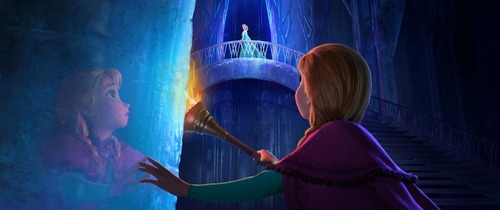
Reviewing a Walt Disney Animation Studios film is a much bigger job than it looks; if you’re not careful, you can soon end up caught in a wide-ranging cultural discussion spanning decades, rather than the 90-minute runtime of an animated movie. Thanks to the studio’s enshrined position in global pop culture and pervasive social influence - which stretches far beyond its primary medium - it’s hard to avoid considering these films from a historical perspective, rather than purely as a critic or a fan. Simple “filmographies” and “release schedules” are for puny mortals; when you’re dealing with one of American culture’s primary mythmakers, you’re speaking in terms of sweeping eras and movements, the characteristics of which reflect or shape the wider development of the animation industry in overt and subtle ways.
Right now, the studio is experiencing a sort of quiet revolution. Intensive, fundamental foundational shifts are occurring in Disney’s moviemaking method and mindset, but they seem to be happening under the radar, without anyone really noticing. The low profile of the Mouse House’s most recent reinvention is partly its own fault; the shock and awe that accompanied Disney’s early 90s Renaissance helped to sear a vibrant era of animated classics into the general consciousness, but it also ensured the disillusionment that accompanied the protracted decline of the subsequent decade was widely and painfully felt. Many who belonged to the generation swept up with the dreams and promises of The Little Mermaid, Beauty & the Beast and The Lion King had their connections to Disney violently severed by Brother Bear, Home on the Range and the other duds that followed; the studio may never fully win back their attention or trust.
And yet the current crop of Walt Disney animated features feel as though they’re flourishing away from the pageantry and hoopla that defined that earlier era. Since the wretched nadir of 2005’s Chicken Little, the studio has given itself the time and space to reconnect with its diluted core values, allowing it to experiment and figure out what it means to be a “Disney movie” in a hyper-analytical, socially conscious, post-Pixar society. These experiments have resulted in a wide range of outcomes, from freewheeling, idiosyncratic oddities (Meet the Robinsons) and trendy comedy adventures in the Pixar-forged contemporary mould (Bolt, Wreck-It Ralph) to nostalgic revivals of discarded formulas from past Disney eras (The Princess and the Frog, Winnie the Pooh). Yet it’s the revisionist, forward-thinking duo of Enchanted and Tangled that have had the greatest success in redefining Disney for the 21st century. A partly-animated satire, 2007’s Enchanted allowed the studio to reintroduce its traditional hallmarks and themes, covertly re-establishing them in the hearts and minds of savvy modern audiences under the veil of parody, before Tangled came along and progressed these ideas to their latest stage of evolution. The 2010 Rapunzel adaptation remains the most complete and confident Disney movie of the last 20 years, blending a strong personality, modern values and nostalgic elements to create a cohesive mission statement for the Disney of today, all without succumbing to navel-gazing or unproductive introspection.
Which brings us nicely to Frozen, a film that shares a kinship with its fellow past-participle princess pictures in more than just name. While it lacks some of the polish, coherence and thematic refinement of Tangled, it succeeds in feeling like a companion piece or spiritual sequel to the earlier film - a state-of-the-art movie that tells you exactly what state Disney’s art is in. When viewed together, the pair form a blueprint of the “new normal” at Disney, communicating a strong feeling that the studio understand who they are again, that they’ve rediscovered home soil. While Pixar have always found comfort in witty, heartstring-tugging road trip adventures and DreamWorks in wisecracking underdog comedies, Disney have reminded themselves that no matter how far they may stray, a sweeping musical melodrama can always help them find their way again.

Of course, retreating to the well-worn path of Broadway-infused fairy tales invites accusations of regression, but Frozen is brimming with evidence of the studio’s commitment to ensuring that its techniques and values are fit for purpose in the modern era. Certainly, from a purely technical perspective, the work of directors Chris Buck and Jennifer Lee is cutting edge, re-establishing Disney at the forefront of CGI animation, rivalling and even surpassing Pixar on several fronts. A latecomer to CG art, Disney’s capabilities in this field have developed remarkably since 2005; it mastered most of Pixar’s tricks with 2008’s gorgeous Bolt and has since been working to infuse some of the personality and stylistic tics of its seminal 2D work into the 3D medium, with increasingly distinctive and spectacular results. Tangled was one of the first films to truly replicate the same sense of flexibility, dynamism, stretch and squash that comes with precise hand-drawn line work using computer graphics; three years later, Frozen moves that benchmark higher, translating the charisma and warmth of Disney Renaissance-style character designs and animation into tactile 3D, complete with gorgeous particle effects, evocative lighting and photorealistic texturing work.
However, Frozen’s appetite for progress is most clearly evidenced not in its visuals, but in its contribution to Disney’s ongoing refinement of its approach to using fairy tales to communicate with contemporary audiences. This has been a key focus for the studio since the early 1990s, but the success of the Shrek films - with their scorched-earth cynicism towards Disney’s traditional happily-ever-after formula - has intensified the pressure to show why this storytelling genre is still relevant in the current era. Disney’s response to this has been admirably bullish, confidently stick to its guns and persisting with a careful curation of its in-house narrative style. Archetypes and formulas that still have power have been preserved, while the worlds it creates have been populated with modern sociological ideas and revisionist concepts, and tropes that no longer speak to people are being pruned away.
Frozen’s contribution to this process is telling and significant. On a nuts-and-bolts level, this is a fairly traditional story of princesses, magical curses, dashing heroes and happy endings - much moreso, in fact, than Hans Christian Andersen’s original fairy tale The Snow Queen, to which Frozen bears only the loosest resemblance. Look closer, though, and you’ll see the fabric of the script and characterisation is suffused with emotional intelligence and a progressive desire to examine and celebrate how interpersonal relationships actually work, rather than venerating some imagined ideal, creating a new breed of fairy tale that feels more approachable and true to life than ever. Female protagonists Anna (Kristen Bell) and Elsa (Idina Menzel) lie at the heart of this success; both characters are flawed, complex individuals who lack the distancing, unattainable poise and perfection of previous Disney heroines, and whose concerns and dilemmas feel like those of real people. The winsome Anna is a skittish, socially awkward, neurotic heroine, whose I-want-more longing and naivete are authentically portrayed without dimming the character’s essential intelligence; her sister Elsa is ostensibly cold, closed-off and aloof, but she’s written and performed in a way that successfully conveys a trapped, vulnerable, stifled and sympathetic soul, even when her icy facade gives way to aggression. The relationship between the two is far and away the film’s strongest suit; it’s quietly heartbreaking to watch the siblings’ initially close kinship gradually dissolve into alienation, estrangement and borderline conflict, yet the bond between them remains tangible, recognisable and affecting. In an incredibly male-dominated film industry, this core tale of sisterly relations stands as an exceptional and striking example of positive, universally appealing female-oriented character writing, and Disney - a company often criticised for the limitations of its depictions of women - deserves great credit for helping Lee and Buck to accomplish this.
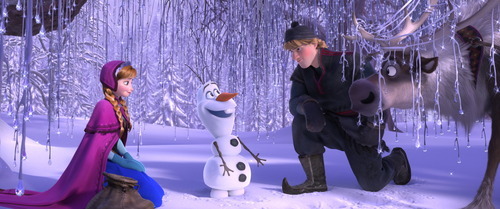
While it’s true that much of Anna and Elsa’s supporting cast are male - a change from the original Snow Queen story that prompted several unfavourable editorials in the lead-up to Frozen’s release - the issue is handled well in practice, as the script largely avoids allowing the men to deprive the ladies of their agency in the story, even in the sections where they’re dominating the screentime. Besides, they’re all good company: Jonathan Groff’s Kristoff and Santino Fontana’s Hans both offer likably subversive spins on the Prince Charming trope, while talking snowman Olaf is a marvellously feckless and innocent comedic presence, who just about manages to avoid outstaying his welcome. A special mention should also be extended to Alan Tudyk, whose versatile turns as the Ed Wynn-inspired King Candy in Wreck-It Ralph and here as the slimy, obsequious Duke of Weselton marks him out as a potential Disney voice acting great in the making.
Still, Frozen isn’t perfect. It sometimes feels as though the filmmakers were more concerned with making a statement with the overall aesthetic and thematic identity of the film than they were with ironing out all the kinks in the basic storytelling, meaning its many admirable ideas and ambitions aren’t always smoothly conveyed by a slightly misshapen narrative structure. Lee’s screenplay seems unsure how to handle the mythological and lore-based elements of the story, leading to passages of lumpen and vague exposition about trolls, magic and amnesia at the beginning and middle of the film, contextualising the character arcs in an essential but somewhat graceless way. The script also seems to have difficulty interweaving the different strands of the story and making them dovetail with each other, resulting in a sensation that the various characters and emotional vignettes are competing for attention, rather than serving a unified purpose. The transition of Anna and Kristoff’s relationship from platonic sparring to romantic tension, for example, feels underdeveloped and unearned, while the late emergence of a surprise villain feels like an afterthought that isn’t particularly needed, either dramatically or thematically. Anna and Elsa’s core story is more than strong enough to carry this film on its own; it’s frustrating that a sometimes noisy screenplay doesn’t always allow that to happen.
The sometimes ramshackle nature of the film’s mechanics also extend to its music, which offers a likeable but slightly mixed bag. Frozen once again opts for a big Broadway treatment of its storyline, with songs and lyrics provided by husband-and-wife songwriting team Robert Lopez and Kristen Anderson-Lopez, of Avenue Q/The Book of Mormon fame. On their second Disney assignment (the first being the 2011 take on Winnie the Pooh), the Lopezes seem to fully embrace the musical medium, allowing characters to fluidly transition in and out of song at a moment’s notice; this creates a rambling, conversational style to many of the songs that won’t be to everyone’s taste, but there’s certainly wit to the compositions, and the flawless vocal performances of the cast - particularly Bell and Menzel - can’t be faulted. More problematic is the awkwardly front-loaded nature of the song placements during the film, with an opening 45 minutes packed with musical moments eventually giving way to a bizarrely sparse selection in the second and third acts. Mystifyingly, Frozen’s last number is a frivolous comedy love song positioned at least half an hour before the actual ending, which makes you wonder if there was a rousing finale featuring the whole cast that’s languishing on a cutting room floor somewhere. On the plus side, we can at least be thankful for “Let It Go”, a spine-tingling power ballad delivered soulfully and majestically by the Tony-winning Broadway veteran Menzel, which shows every sign of becoming the first truly iconic Disney song since the mid-1990s.

In the end, it’s the warm heart of Frozen that defines it and redeems it, despite myriad flaws. There’s a loveable, sympathetic quality to its character writing that’s effortlessly engaging even when it’s at its most rambling, and underpinning everything is one of the most all-embracingly humanist messages Disney has ever given: that people are different from each other, that they are not always perfect, and that it’s entirely possible for them to love and accept themselves and each other despite that. There are no fairy tale caveats to its moral, no “this-is-a-lesson-you-must-learn-by-turning-into-a-bear-for-a-week” stipulations - just a universal message of tolerance and diversity that ought to speak to people of all genders and dispositions. If it takes a different, imperfect Disney film to get people to accept the differences and imperfections in others, then so be it.
The tremendous commercial triumph of Frozen - it's now passed the $1 billion mark at the global box office, overtaking The Lion King as the highest-grossing Walt Disney Animation Studios feature of all time - suggests that Disney’s recent spell out of the limelight may well be coming to an end. In the last couple of years, commentators have seemed reluctant to commit to the idea that “Disney are back!”, despite the successes of Tangled and Wreck-It Ralph, as though cautious about heralding a false dawn. Yet Frozen seems to have recaptured the zeitgeist in a way that the studio hasn’t been able to do for a long time; its confidence, progressive approach and subtle sophistication speak of a studio that’s ready to stride forwards again, and the audience seems willing to follow. It’d be fitting for Frozen to be the film that leads Disney out of its long winter; it’s certainly done more than most to ensure its creators are well-equipped to enjoy their time in the sun.
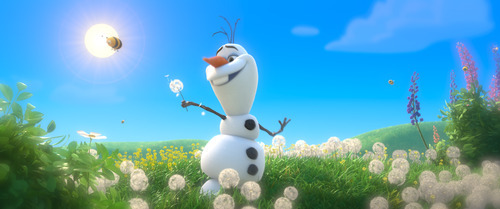
2 notes
·
View notes